






USPS 382-600/ISSN#00287121
2340 Frederick Douglass Boulevard
New York, New York 10027
(212) 932-7400 / FAX (212) 222-3842
Executive & Investigative Editor – Damaso Reyes
Damaso.Reyes@AmsterdamNews.com
Managing Editor – Kristin Fayne-Mulroy KFM@AmsterdamNews.com
Digital Editor - Josh Barker
Josh.Barker@AmsterdamNews.com
Karen Juanita Carrillo
Karen.Carrillo@AmsterdamNews.com
Shannon Chaffers
Shannon.Chaffers@amsterdamnews.com
Ariama C. Long Ariama.Long@AmsterdamNews.com
Tandy Lau
Tandy.Lau@AmsterdamNews.com
DIGITAL, BRANDED CONTENT & HYBRID ADVERTISING MANAGER
Ali Milliner (212) 932-7435
Ali.Milliner@AmsterdamNews.com
DISPLAY & DIGITAL ADVERTISING CONSULTANT
William “Bill” Atkins (212) 932-7429 William.Atkins@AmsterdamNews.com
LEGAL, LLC & CLASSIFED ADVERTISING
Ali Milliner (212) 932-7435
Ali.Milliner@AmsterdamNews.com
CIRCULATION / SUBSCRIPTION
Benita Darby (212) 932-7453
Benita.Darby@AmsterdamNews.com
The AmsterdamNewsassumes no responsibility for the return of unsolicited manuscripts or photographs. Photographs and manuscripts become the property of The Amsterdam News. Published weekly. Periodicals Class postage paid at New York, N.Y. POSTMASTER: Send address corrections to NYAmsterdamNews,2340 Frederick Douglass Blvd., New York, NY 10027.
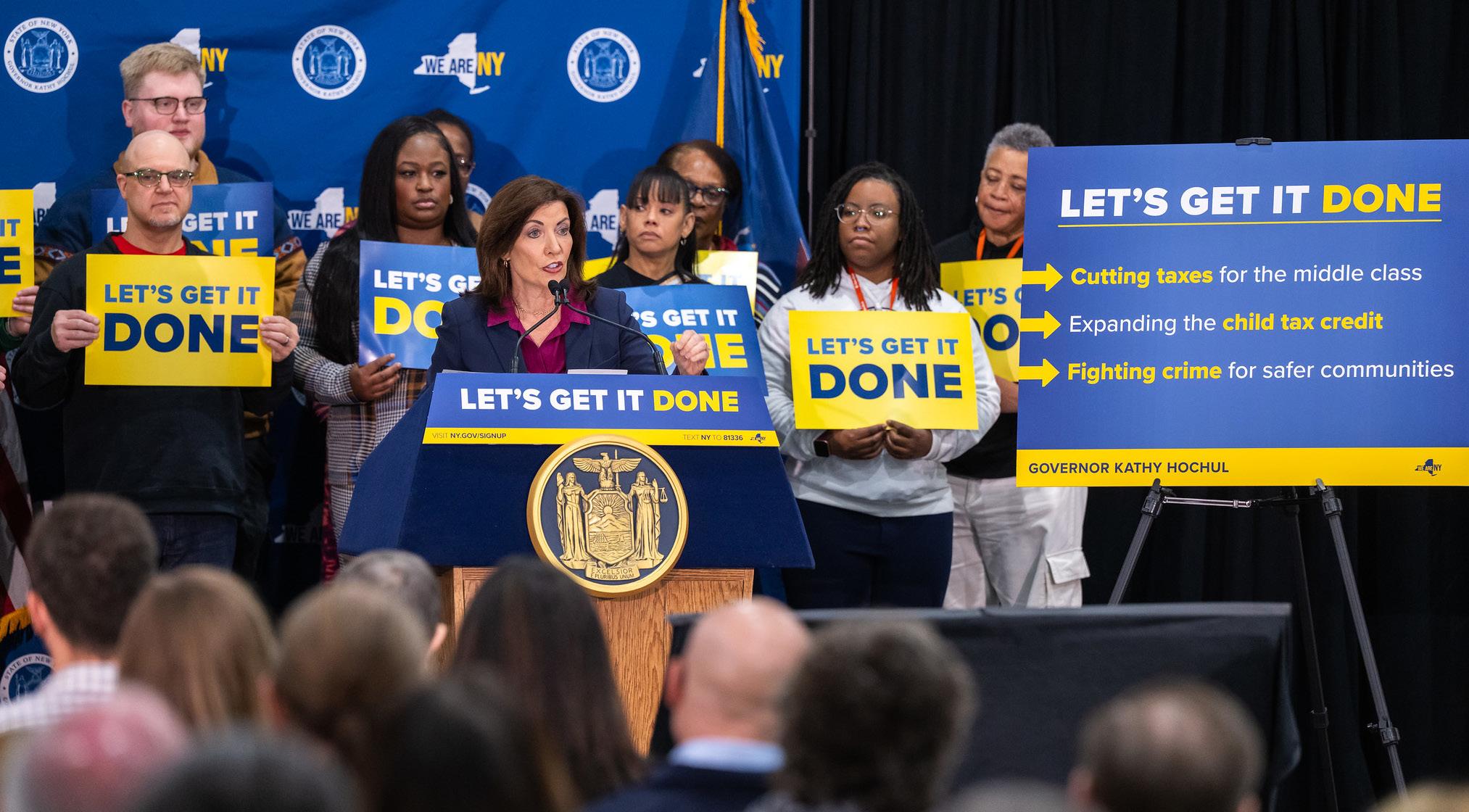
April 21, 2025 — Rochester, NY — Governor
in Rochester alongside community leaders and elected officials as she continues to demand a state budget deal that makes New York safer and more affordable. The rally comes after a week in which the Governor met with district attorneys, domestic violence survivors, small business owners, law enforcement professionals and union leaders to highlight her commonsense public safety proposals.
By ARIAMA C. LONG Amsterdam News Staff
The state budget is about three weeks late, the deadline being on April 1. Governor Kathy Hochul, who has been at odds with the State Legislature on a number of budget proposals, talked about her spending plan on Monday.
“Your family is my fight,” said Hochul at a rally in Rochester on Apr 21. “I didn’t know I’d have to roll up the sleeves so soon and really launch into a fight [but] this is for all of you and I will not sign a state budget — I’ve said this from the very beginning — that does not fight these federal changes and put New Yorkers first.”
Among a laundry list of items in the Fiscal Year 2026 budget, Hochul is pushing for middle-class tax cuts, expanding the Child Tax Credit over two years, providing inflation refund checks of up to $500, free school breakfast and lunch for students, full repeal of the State and Local Tax deduction, $370 million for public safety and law enforcement initiatives, and $77 million for cops in New York City subways.
More controversially, Hochul’s plans call for changes to the involuntary commitment laws, which would impact street homeless individuals with mental illness; amendments to Kendra’s Law, which deals with individuals with serious mental illness mandated to outpatient treatment; and reforms to the state’s discovery law, which puts pressure on prosecutors to hand over evidence to defendants and their lawyer indiscriminately in court cases.
“You’ve heard the phrase discovery laws right? It’s just about the evidence of a crime
that the prosecution and the police have amassed. And yes, in 2019 the whole system was skewed to help just the prosecutors. It was unfair against the defendant,” said Hochul, briefly addressing the issue, “but now reforms are put in place and now it’s swung the other way.”
State Assemblymember Nikki Lucas noted that plenty of politicians try to use the state budget as leverage to push policy. She said that her constituents weren’t excited about some of the proposals, such as the mask ban, the changes to involuntary commitment laws, the ban on cell phones in schools, and the discovery laws.
“We have to stand firm, especially in our communities that have been targeted and overpoliced. We need to decide what’s a good idea and what has consequences that may infringe on people’s rights,” said Lucas.
Other electeds and organizers, like State Assemblymember Stefani Zinerman and Senator Jessica Ramos, are worried about the funding for childcare. They’ve supported the Empire State Campaign for Child Care (ESCCC), which is a group of parents and child care providers demanding that the state fund the Child Care Assistance Program (CCAP), a permanent child care workforce pay equity fund, and statewide universal childcare.
“This is more than a procedural delay, it is an affront to the very spirit of co-governance, where each branch of government must do its part to serve the people, not concentrate power,” wrote Zinerman.
Ramos, who is a mayoral candidate this year, added that she has a few more budget proposals like getting rid of the state’s minimum wage requirements for child care
subsidy access; baby bucks, or guaranteed income for mothers in need; reforming temporary disability insurance payouts, and expanding mental health courts.
Consequently, the New York City budget is also late. But, the City Council did put out a response to the mayor’s preliminary Fiscal 2026 budget report on April 1. There’s still discussion over funding for the city’s migrant shelters and immigration services, which haven’t really shown up in the state budget yet. They’re also worried that the “unpredictability and antagonism of the Trump administration, cast a pale over the city’s financial security.”
“As we’re witnessing the Trump administration continuously attacking our communities,” said New York Immigration Coalition (NYIC) President and CEO Murad Awawdeh on April 21 at a rally at City Hall.
“It is beyond time that we demand the city stand up and fight for every single person who calls this city home.”
In the meantime, the city’s immigration advocates are calling for at least $169 million in funding for immigration legal services, $10 million for the city’s Community Interpreter Bank and worker-owned language service cooperatives, $24 million for adult literacy, $4 million for Access Health NYC, universal childcare, legislation to support street vendors, expanding housing vouchers to all residents regardless of immigration status, and a ban on collaboration between city agencies and federal immigration enforcement.
The city and state executive budget negotiations are ongoing. Though, at least one poll speculates that the deal will be finished and inked by April 30 or the beginning of May at the latest.
By TANDY LAU Amsterdam News Staff, Report for America Corps Member
Ray Rogers reached folk hero status in the American labor movement half a century ago after scoring resounding victories against seemingly unstoppable corporations like textiles giant J. P. Stevens & Company. He later took on Coca-Cola in the 2000s, leading college campuses to ban products from the soft drinks titan across the country.
Today, Rogers thinks his recent efforts to repeal the Stock Transfer Tax rebate, which he operates out of his humble East Harlem apartment, could dwarf his past accomplishments. If successful, New York State could raise a conservative estimate of $13 to $20 billion from a slumbering sales tax on Wall Street to fund public services and programs for everyday New Yorkers in what the Corporate Campaign founder calls “greed vs. need.” He jumped at the opportunity when former presidential candidate Ralph Nader recruited him to lead the grassroots movement.
“I said this could be the most important campaign that I ever worked on, by the very nature of the resources that it could bring in,” said Rogers. “To meet the social and economic needs of millions of people — it’s a no-brainer.”
The money stems from a sales tax on Wall Street’s stock trades dating back 120 years ago. Based on the selling price, each transfer would be taxed no more than 5 cents per the most expensive shares that cost $20 or more — in other words, less than 1%. But New York stopped collecting the money by the early 1980s. Since then, stock traders could reclaim 100% of the tax paid through a rebate program.
“As consumers, we all pay sales taxes on nearly every item we buy to pay for public services, ranging from police and firefighters to schools, sanitation, health care, housing, transportation, and infrastructure,” said Nader in a statement. “So why is the state rebating billions of dollars every year since 1981, collected from the sale of securities, back to wealthy brokerage firms rather than applying those taxes to programs that promote social well-being for everyone?”
A bill (A01494A/S01237) reintroduced this year by Assemblymember Phil Steck and State Senator James Sanders Jr. would repeal the

“This bill is gonna protect a lot of those workers [and] their jobs. It’s gonna allow social services and infrastructure work to be done ... And even if [the] Trump cuts weren’t coming, this bill is so important [that] it should’ve been passed years ago when you think of the tens and tens of billions of dollars that have been lost since 1981, when they no longer collected the tax for public use.”
—Ray Rogers, labor rights activist
rebate to re-establish the tax. They maintain the legislation would overwhelmingly affect a minority of “high-frequency” day traders, speculators, and hedge funds rather than everyday New Yorkers, who often hold onto their shares and wait.
“We have tried to do things to make this a far more livable state, and we found a relatively easy way of doing it,” said Sanders. “Almost painless [and] pennies on a dollar that would aid the people of New York State immensely.”
fer Tax
Republican Gov. Frank W. Higgins enacted the stock transfer tax back in 1905, despite threats of
Wall Street flocking to Chicago or New Jersey. The legislation pushed through thanks to a budget crisis and the state began levying the tax on stock trades. The New York Stock Exchange not only remained in New York City, but NASDAQ also moved in.
“New York’s stock exchanges are the dominant players in the world,” said economist James Henry. “They’re about 40% of the global traffic, and depending on the year, that’s as much as $150 to $175 trillion a year of stock trades alone, not counting all of the other financial instruments. The tax from the New York standpoint is attractive because it’s very easy to collect [and] hard to avoid.”
even though complex legal reasons meant the state never fully repealed it. According to Henry, the rebate effectively returned more than $450 billion to stock traders.
A bill for the times
While the original bill predates the second Trump administration, some proponents like Rogers and Sanders see repealing the rebate as a direct solution to federal funding cuts to the state. And recent amendments to the version reintroduced this year mandate exactly which social services the tax funds, rather than simply going towards the state budget.
“This bill would do so much for workers, particularly in the public sector,” said Rogers. “This bill is gonna protect a lot of those workers [and] their jobs. It’s gonna allow social services and infrastructure work to be done. It’s not an answer to everything, but it is a big answer, particularly with the Trump cuts coming. And even if [the] Trump cuts weren’t coming, this bill is so important [that] it should’ve been passed years ago when you think of the tens and tens of billions of dollars that have been lost since 1981, when they no longer collected the tax for public use.”
Earlier this month, Gov. Kathy Hochul announced that the U.S. Department of Homeland Security revoked $325.5 million in federal funding toward local infrastructure. In Central Harlem, a stormwater project lost $50 million and efforts to build floodwalls for the Polo Grounds public housing development lost $11.5 million.
Henry also noted that “it’s paid by non-New Yorkers to a large extent. Many of the people who are trading on the stock exchange are based elsewhere, so what’s not to like?”
When another financial crisis hit the city during the 1970s, Albany called on Wall Street for help. As a result, Democratic Gov. Hugh Carey signed a bill into law ostensibly eliminating the tax in 1977. Over a four-year span, the rebate scaled up the percentage of how much stockbrokers could reclaim.
“I can’t figure out why it was eliminated except to say that the ’80s was a period of artificial exuberance about Wall Street,” said Steck.
By October 1981, Wall Street could recuperate the entire tax,
Recent amendments to the bill would establish a program “for the purpose of making five payments toward the replacement and rehabilitation of existing local municipally owned and funded drinking water, stormwater, and sanitary sewer systems.”
In March, Hochul also announced the federal government cut more than $360 million in funding toward the state’s health, mental health, and addiction services. Under the current amended bill, 10% of the money raised will go toward the Department of Health.
However, Steck disagreed with the notion. “I think the concept of the stock transfer taxes is actually quite timeless,” he said, pointing to how the tax felt as relevant back in 1905 as in 2025.
By KAREN JUANITA CARRILLO Amsterdam News Staff
New Yorkers tend to have a tough time finding a place where they can afford to live. Housing in New York State is expensive; it’s among the costliest in the nation, according to a report by State Comptroller Thomas P. DiNapoli.
To reach the income level needed to pay for a rental, many people use vouchers.
But vouchers are only priced at a certain level, notes Westchester Residential Opportunities (WRO) Deputy Executive Director Andrew Smith, “So you’re already limited in what you are looking for. Then, on top of that, people have to deal with bias, prejudice against vouchers and against programs by landlords, or even realtors.”
In 2019, the New York State Human Rights Law was passed. It included protections against housing discrimination by recognizing Section 8 Housing Choice Vouchers, Supplemental Security Income (SSI), and other lawful public assistance plans as protected sources of income. The law is particularly important for renters in Westchester County, the area just north of New York City, where discrimination and a failure to promote integrated housing led to decades of segregated housing.
In the coming weeks, the Fair Housing Committee of the Hudson Gateway Association of Realtors (HGAR) will be conducting a two-part Fair Housing in Action series. This virtual series is free for anyone to join and aims to help landlords, real estate professionals, and community advocates understand issues related to housing vouchers and how they are affected by Fair Housing laws.
HGAR’s initial event will be a virtual panel discussion on April 24, from 10:30 a.m. to noon, and the second event will occur virtually on May 9, from 11 a.m. to 12:30 p.m.
The WRO’s Smith will lead the panel discussions, featuring panelists from various parts of the state. Brent Meltzer from the State Attorney General’s office; State Senator Rachel May’s Chief of Staff Zach Zeliff; Carole McCann from Hudson Heritage Realty; Felicia Ramos and Lorna McFarlane of CVR New York; and EXIT Realty Premium’s Emran Bhuiyan will discuss changes in source of income laws and ways to avoid discrimination in housing transactions with potential renters.
“The whole idea,” Carole McCann, owner of Hudson Heritage Realty, told the AmNews, “is that we’re bringing together experts on this subject of source of income discrimination. We’ll be providing the tools that people need to know –– not only realtors, but landlords and community members as well –– so that the people that are receiving assistance will have what they need to know to be able to go forward and not be discriminated against.”
McCann says she still receives calls from potential renters who ask if she works with landlords who accept vouchers. “The in-

formation is not out there for all of the people who are receiving assistance, because they think that they still have to ask that,” she said. “I was talking about educating the landlords because they don’t understand what the law is now, but neither do some of the tenants. It’s an opportunity for me to be able to inform tenants that
‘Hey, you don’t have to ask that. A landlord can’t deny you just because you’re receiving assistance.’”
Among landlords, there are still fears
about how hard it is to work with a voucher program or how stringent the requirements and administrative burdens can be. HGAR’s virtual panels will be an attempt to demystify that. “We want people to hear what it’s really like to work with these agencies,” explains WRO’s Smith. “We have landlords who have had great experiences working with these programs, and they get bonuses to hold units available. They get compensated for the additional time it might take to get someone moved in. And then we also
have people who say they have had a horrible experience. We want to kind of ground that experience in reality, by talking with realtors who’ve done this, who’ve worked with programs, and with the folks who actually run the programs.
“I think the two panel discussions kind of go hand in hand because they address the law and what New York State, the Attorney General’s office, and folks like WRO, who run these fair housing programs, focus on when we’re trying to help enforce the law.”
By SAGE SWABY Special to the AmNews
At the age of 18, Constance “Connie” Evans, became a licensed practical nurse for an opportunity to explore more of the medical field. However, in her first year at Stony Brook University, Evans became disillusioned with the thought of becoming a doctor. Her passion for nursing increased instead, as did her frustration with her lack of ability to help patients as a licensed practical nurse. Evans graduated with a bachelor’s degree in psychology with nursing still on her mind.
In 2000, fifteen years later after raising her children, Evans went back to school. She graduated from Lehman College as a registered nurse in 2005. VNS Health employs the now 61-yearold registered nurse preceptor. The home and community based health care organization has been her only employer since graduating.
VNS Health hired Evans in April of 2005, prior to her graduation. Their nurses took care of Evans’ mother. While she was not the easiest patient, the nurses tended to her devotedly. It amazed Evans how her mother responded to them and attracted her to work for VNS Health.
“In my interviews with VNS, I said, ‘I owe you guys a debt, I’ll probably never repay. But I’m going to do my best to do that,’” said Evans. Born and raised in the South Bronx, Evan was raised alongside her three siblings by her single mother. She understood her poverty but never felt it. Evans’ mother never let her and her siblings go hungry. She made it her business to make sure her children attended school and encouraged Evans’ dream of being a healthcare professional.
Today, as a Black healthcare professional working her dream job, Evans understands the importance of Black patients receiving treatment from health professionals that look like them. A 2019 study found that patients are more likely to utilize preventive care services and report care satisfaction when treated by a health professional who shares their racial or ethnic background.
Black nurses’ cultural competency provides Black patients with a safe space. Evans embraces patients as family and wants to show them that she works very hard. “I like to be an example of the greatness of our people. We are resilient, we’re strong,” she said. “Honestly, every time I go into a patient’s home, they become my family, not just my patient.”
This mentality is one Evans believes strongly in. In a Nov. 2023 article, Wall Street Journal writer Brenda Cronin describes how Evans revitalized her life when she cared for Cronin during the COVID-19 pandemic. Evans visited Cronin at her apartment, offering encouraging words while nursing her back to health following a hip surgery. “But I recall vividly that as I healed and progressed from bed to walker to cane, the highlight of my day was Constance’s visit,” Cronin writes. “It seldom lasted long but

in 15 minutes she imparted enough company, care and conversation to restore a wobbly world to an even keel.”
Evans’ care provided Cronin with stability and positivity during a dark time. Home care is a “very challenging but rewarding nursing experience” for Evans as she cares for patients in their homes for as long as a couple weeks to years. “It’s very, very precious to me. I love what I do,” said Evans. She currently works towards earning her master’s in nursing education, expecting to graduate in September. Evans goal is to impart her knowledge on VNS nurses and empower them. As a nurse preceptor, she works with VNS Health’s onboarding nurses. Evans works one-on-one with each nurse, who either have recently graduated or have very little experience with nursing.
“Whatever I receive, I give to them. I’m in this for the long haul,” she said. “I want to help develop the greatest nurses on this planet and I want them to be at VNS Health.”
Evans enjoys VNS Health’s diversity and the ways they keep their legacy strong. She cites Lillian Wald, America’s first public health nurse who founded VNS Health in 1893, as one of her greatest heroes. Wald worked alongside Elizabeth Tyler, the first Black nurse at VNS Health in 1906, whose historical impact inspires Evans.
“We’re still doing our best to make New Yorkers’ lives a lot more livable, a lot more pleasant. To get them through those dark times when they have those illnesses that really just strike terror in their heart,” Evans said. “We can hold them by their hands and say, ‘You’re not alone in this, I got you.’”
By Martha E. Stark, Esq
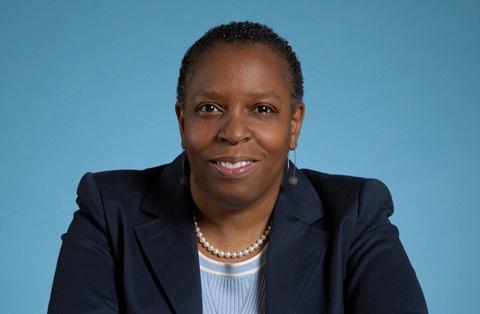
For far too many years, small homeowners, landlords and tenants in rental buildings, store and office owners have complained bitterly about the property taxes they pay. While acknowledging the important role property taxes play when it comes to funding schools, libraries, safe streets, garbage collection and a myriad of other essential services, owners have felt powerless to remedy the inherent and known inequities that have long plagued New York City’s property tax system.
Recognizing the urgency of these issues, Tax Equity Now New York (TENNY) filed a groundbreaking lawsuit challenging the legality and constitutionality of New York City’s property tax system. In a significant victory, the State’s highest court, the Court of Appeals validated TENNY’s claims. The decision made it clear that New York City has the power to take the first steps towards restoring some faith in the property tax for small homeowners, owners of modest cooperatives and condominiums, and tenants and landlords in rental buildings. The City can and must do something now.
While the property tax is complicated, there is a fundamental principle of fairness that is paramount and simple — properties with the same value should have the same assessment, a concept referred to as uniformity. The City Finance Department is solely responsible for assuring uniformity, it is enshrined in law; but the agency has refused claiming that they cannot carry out this fundamental responsibility because of other “conflicting” provisions in the law. However, the Court of Appeals ruled otherwise — the City must adopt uniform assessments.
Uniformity is a straightforward concept, if the City determines that a property is worth say $1 million and properties are uniformly assessed at say six percent of value, then the assessment ratio for those properties should be $60,000. This year, properties that the City valued at between $1 and $1.4 million, in the six zip codes representing Harlem, had assessment ratios that ranged from 1 to 5.3 percent of value. The average assessment ratio is about 3.5 percent. That means the resulting taxes for properties averaged $9,300 but ranged from as little as $2,300 to as much as $15,300. To comply with the law’s uniformity requirement, at a minimum, the City should lower the assessment for properties assessed at a ratio that is more than 3.5 percent. That means homes worth $1 million should be assessed at $35,000, not $60,000.
Make no mistake about it, the homes in the City with the highest assessment ratios are in working-class and racially diverse communities with more modest property values and include neighborhoods like
Brownsville and Canarsie in Brooklyn, the Bronx, Staten Island, and Southeast Queens. Yet the City has allowed the rampant inequities to persist for years.
The Court of Appeals also clarified the law for the City when it comes to apartment buildings—homes to hundreds of thousands of tenants, rental building, coop, and condo owners. Here the City has been valuing some of the most expensive co-op and condo apartments based on rents from regulated rental buildings. This practice significantly undervalues the most valuable and exclusive apartments in the City which results in higher taxes for rental buildings and middle-class co-op and condo owners in Manhattan and the boroughs. For rental buildings especially, that has led to higher taxes for landlords and increased rent burdens for tenants.
The Court’s ruling here was clear as well: while it might be appropriate to value co-op and condos that were converted from rental apartments based on regulated rents, the City need not value high-valued co-ops and condos that were never rental apartments or would not be regulated rentals today using regulated rents. That means the City can improve how it values the most expensive co-ops and condos using more appropriate rental comparables.
Over the years, this broken system has burdened tenants with unfair taxes, exacerbated racial disparities in housing, and entrenched the very inequities the City should seek to resolve. The inequities are not random. They follow a familiar and troubling pattern of racial and income disparity. Decades of redlining, discriminatory housing policies, and systemic disinvestment in low-income neighborhoods and communities of color have left fewer resources and opportunities saddling those least able to afford it with a disproportionate share of the city’s tax burden.
Notably, the Court agreed to remove the State of New York from the lawsuit, thereby sending clear message: New York City’s property tax system is broken, and fixing it is both necessary and achievable and these changes can and should start at the city level, where leaders have the tools to act decisively in the face of mounting disparities on its own.
The time to act is now. New York City cannot afford to wait any longer to start to fix its broken property tax system. It’s time to stand up for those who most need it and to confront the disparities head-on, and create a fairer, more inclusive future for all.
Justice delayed is justice denied, and the City has delayed long enough. The City has the power, they should use it.

By SHANNON CHAFFERS Blacklight/Report for America Corps Member
When 15-year-old Josh Marte was caught with a gun at his high school in Harlem, no one offered him counseling or support.
“I don’t remember having a conversation with anybody from an agency, organization, or representative from the school, or just a therapist or a counselor. Not even inside the alternative school,” where he was sent after being expelled, he said.
Instead, he began to view himself as a “bad kid” who was a danger to other students, a label that became a self-fulfilling prophecy.
Marte now works at Street Corner Resources, a gun violence prevention organization in Harlem. As a violence interrupter, he plays the role for today’s youth that he wishes someone had played for him. His job is to prevent and mediate conflicts in the neighborhood that could turn violent, and connect those at risk of violence to resources including therapy, housing, and job opportunities that can steer them away from illegal activity.
As a father himself, Marte said he understands why a parent would want a student expelled for bringing a gun to school.
But he noted that such a response may not keep his children or other children safe in the long run.
“Here is the dangerous part: [if] people don’t take the chance of helping this young man… [it] actually endangers your child’s future even more. Because if I’m being released back into the population, if I’m going to go back home to my neighborhood, if my [new] school is only five blocks over from the old school, what safety has that really brought your kid?,” he explained.
Marte said that temporarily removing the student from school, followed by a school community-led intervention, would be a more productive response.
“It could be a couple weeks or a month. Once your kid is safe, you know your kid has recovered from this, your building is safe, and now you say okay, as a parent of a kid going to the school, what are some of the steps we can do as parents to help some of these young kids… to make sure that they don’t go down this route again, and that eliminates some of the harm that maybe my child is going through?,” he said.
What Marte is describing echoes an approach that has become more common in recent years to address student misbehavior: restorative justice.
Originally developed in the legal setting, restorative justice is a process that involves repairing harms between victims and offenders, rather than simply or only punishing offenders. When used holistically in school settings, restorative justice is part of a “whole school approach.” This means it
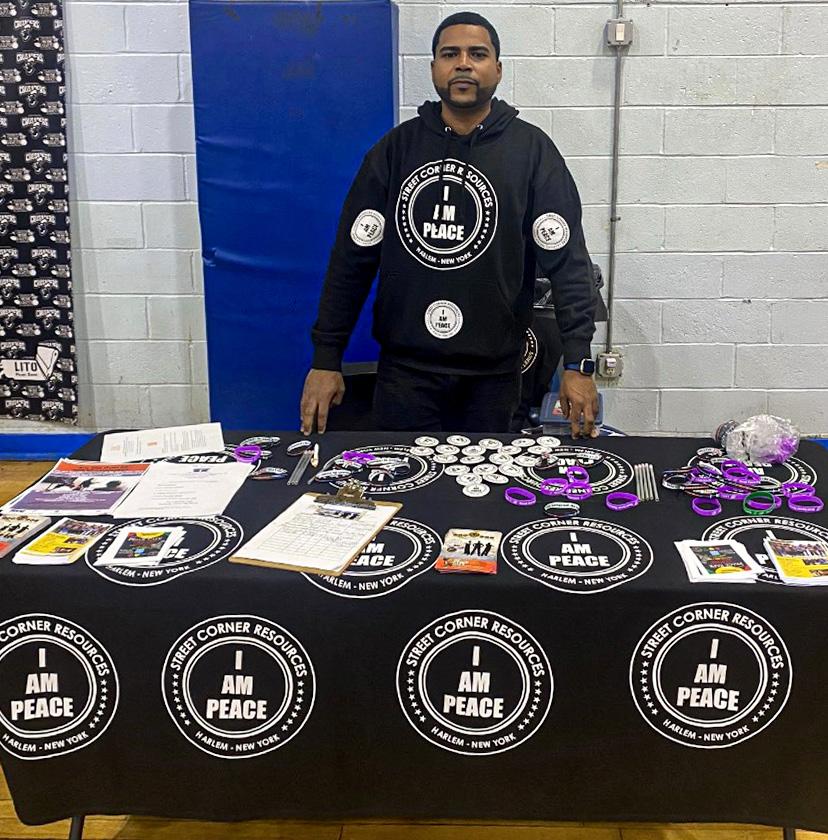

involves proactive measures, like check-in circles between students and teachers at the beginning of class, as well as reactive measures. Misbehavior is addressed through methods like peace circles, typically conferences held between consenting victims and offenders. Overall, the consequences for misbehavior are tailored to the offense, holding the student accountable for their actions.
The first article in this two-part series on student gun carrying explored some of the long-term consequences of the one-year suspension for firearm possession at school mandated by the federal Gun-Free Schools Act (GFSA). As the harms of exclusionary discipline have become established, many school districts across the United States have introduced alternative interventions like restorative justice to address student misbehavior, especially for low-level offenses.
The U.S. Department of Education reports that some school districts have begun using more discretion to modify the one-year suspensions given out for firearm possession at school. While it is not clear what schools are doing instead –– shortening suspensions or using alternative interventions –– this article explores the potential of restorative justice as an intervention that schools could pursue to address student gun carrying.
Chicago is one school district already using restorative justice in these circumstances.
Chicago offers an alternative approach
When Jadine Chou began her position as the Chief of Safety and Security for Chicago Public Schools in 2011 (a role she left earlier this year), she immediately encountered the brutal reality of gun violence in the city. During her first week, a student was shot and killed outside of his school.



“It happened right outside the classroom window. His classmates could see him,” she recalled.
But why was he not in school?
“The answer was, he was suspended. So he was not allowed to be in school that week. But he was not at home. He wanted to be at school,” Chou explained. “[This wasn’t] the first time I had exposure to the harms of punitive disciplinary actions. But that was a really big awakening when I joined the district.”
The lesson Chou took from the incident was that “the best way to keep children safe is to keep them in school. And the best way to keep them in school is to really work to mitigate and reduce the use of exclusionary disciplinary practices.”
The district decided to move away from zero-tolerance policies. In addition to reforming the discipline code, it undertook a systemic implementation of restorative practices. Chou estimates Chicago started See story on next page
investing heavily in the approach six to seven years ago.
The district uses restorative practices to respond to student gun carrying as well as other offenses. These restorative strategies are designed to address the reason the student brought the weapon. If it was the result of a conflict, work is done to resolve the conflict. If it was a result of mental health issues, the student might be assigned treatment, and a plan will be made to reintegrate them once they return to school.
“Possession of a weapon is very serious. However, the construct of restorative practices still applies. Because we have to understand: why did that student carry a weapon, either into the building or onto school grounds?” Chou said. “Just saying to a student, you can’t come to school for X period of time, that in itself is ignoring the root of the problem.”
Whether these practices are used in lieu of a suspension, or in conjunction with one, is determined on a case-by-case basis, the district said. A public records request seeking the corresponding disciplinary response to each case of student firearm possession at a CPS school was not fulfilled by time of publication. However, the district said that for each incident, it makes a referral for an expulsion or other disciplinary actions, and then the district’s school disciplinary team works with other departments, like the Office for Student Disabilities, to review the expulsion request and determine next steps.
Such an approach aligns with what Rachel Perera, a research fellow at the Brookings Institution, recommends for using restorative practices to respond to student firearm possession.
“Some time away from school [could be] a part of [the response],” she said. “But if you’re approaching this from a restorative practices [lens], there would still be an effort to work with the student, understand what was going on, make sure they’re getting the supports, make sure they understand the harm done, and make sure they are reintegrated into the school environment in a way that prevents the worse outcomes [of] exclusion from occurring.”
A study from the University of Chicago’s Education Lab showed that Chicago’s restorative approach has positively impacted students. The report, published in 2023, evaluated the effect of restorative practices in Chicago Public Schools (CPS) beginning in the 2013–14 school year. According to the authors, it is the first study to provide causal evidence of the effectiveness of restorative practices in school.
The study found that schools that implemented restorative practices saw an 18 percent reduction in out-of-school suspensions, without an increase in in-school suspensions or worse academic performance. It also found an improvement in students’ perception of peer behavior and school climate.
“[Students] are in school more. And the days that they’re in school actually seem to be better days overall,” explained Anjali Adukia, one of the study’s authors.
In addition, these schools saw a 35 percent reduction in in-school student arrests, and a 15 percent reduction in out-of-school student arrests. Although it is not clear what exactly caused the decline in out-of-school arrests, Adukia said it might be a result of students taking what they learned about conflict resolution from the classroom to their interactions outside school.
“The fact that we see these spillover effects into neighborhoods is really encouraging, and I think it’s hopeful,” she said.
While restorative practices have promise, Adukia emphasized that the key is implementation. The study results suggested that the main driver of the positive effects was the most intensive of the three restorative practice programs that CPS schools used. This version involved having the school hire “restorative practices coaches” who trained both administrators and staff in restorative practices, and met with staff two to three times per week throughout the year.
Despite its growing popularity and promising evidence, experts say that adoption of restorative practices in schools across the country has been uneven.
In New York City, for example, the strategy has not been implemented across the board. Instead, the district has left it up to schools to choose if and how they want to use restorative practices.
“Restorative justice is available to all of our schools. We take pride in the fact that we’ve made it available, we offer regular trainings… But remember, it is only as important to the community as the community’s investment in restorative [practices],” said Mark Rampersant, the Chief of Safety and Prevention Partnerships for New York City’s Department of Education (DOE).
Janella Hinds, a high school social studies teacher and Vice President of Academic High Schools at the United Federation of Teachers (UFT), said the UFT supports restorative justice, but would like to see more training from the DOE.
“We have a lot of work to do around the professional learning for restorative justice practices, and the proper implementation of these practices around the city and our schools,” she said.
To address weapons possession, DOE policies state that in conjunction with a suspension, schools may use restorative practices, or other interventions like counseling.
But Michaela Shuchman, a Skadden legal fellow at Bronx Legal Services working to reform and replace exclusionary discipline practices in NYC schools, said that she hasn’t encountered schools using these methods.
“If it’s something to do with a fight or something, or [a student] bringing a weapon because of a threat or something like that, then there needs to be some sort of mediation, restorative justice practices, in order to heal the harm that has been
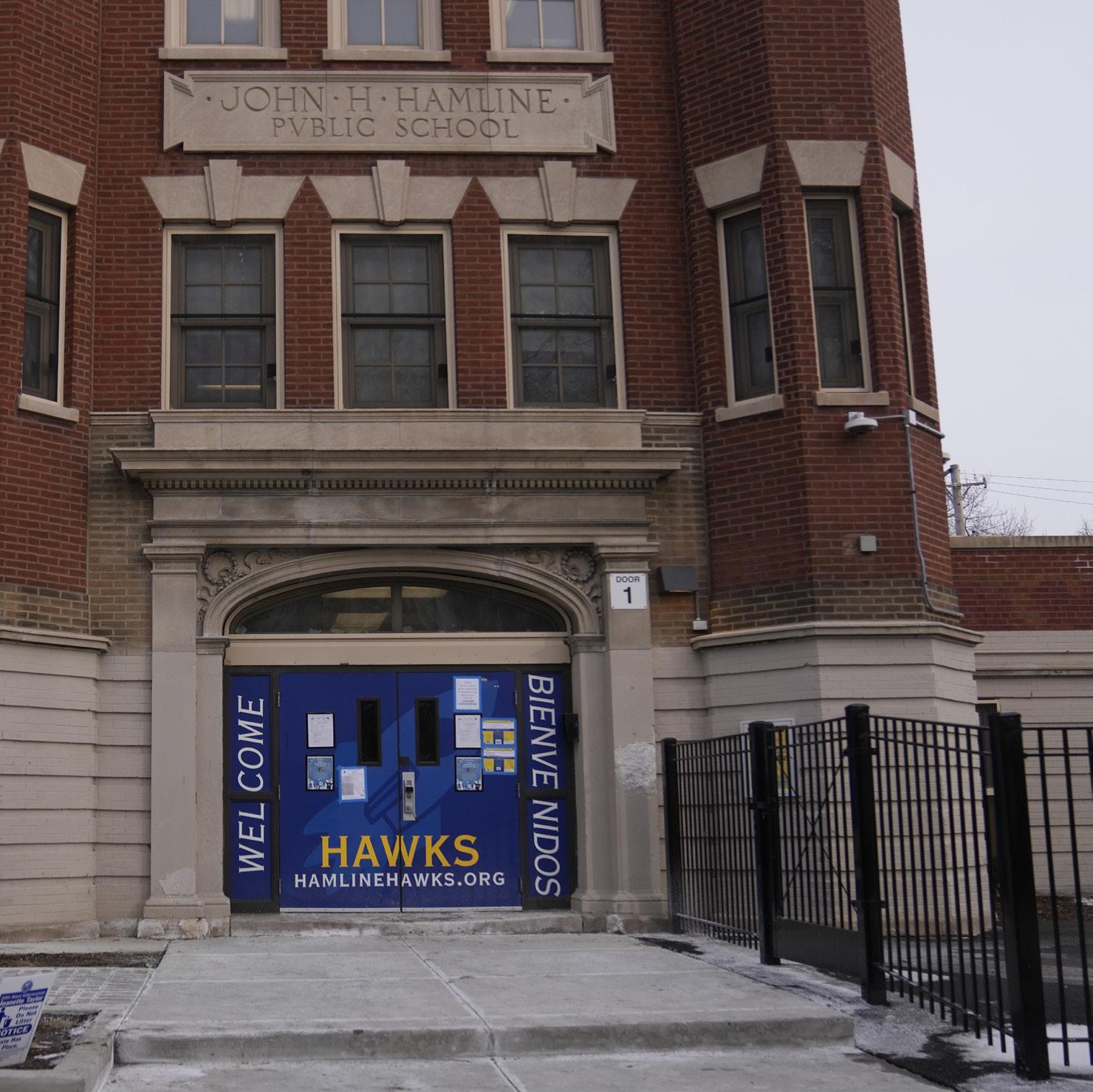
done, which I’m just not really seeing,” she said. “Instead, a student just comes back, and they’ve been punished, but none of the work has been done interpersonally to resolve that issue between the student and other people.”
Perrera says using restorative practices to address only minor infractions goes against the philosophy of the approach.
“People think, okay, we can try this out. But we can’t do this for those types of things, right? There’s a real mindset shift that needs to happen, because I don’t think that restorative justice works when it’s just about certain types of infractions,” she explained.
This shift is especially difficult in the case of gun carrying, where the Gun-Free Schools Act shapes schools’ responses.
“Gun violence is a very sticky, very challenging one to navigate, because you do have legacy policies that have really shaped peoples’ beliefs… people believe that a kid should get kicked out of school if they bring a gun to school,” Perera explained.
Whether more schools turn to restorative justice as an alternative to a zero-tolerance approach to student gun carrying remains to be seen. Of course, restorative practices are not the only intervention that schools can use. Providing students with one-onone therapy, or treatment for mental illness, may be necessary if the incident resulted from mental health issues rather than a conflict.
Adukia also emphasized that restorative practices can be paired with more explicitly preventative measures. Chicago, for
example, has a program called Choose to Change, a six-month mentoring program that engages students in cognitive behavioral therapy. A study of the pilot program conducted by the University of Chicago found that students who participated were 39 percent less likely to be arrested compared to the control group.
“It really changes how the young person thinks and how they process conflicts,” Chou said.
In 2022, New York City’s DOE began a program called Project Pivot. The initiative, now active in over 250 schools, partners schools with higher rates of disciplinary incidents and absenteeism with community groups that offer mentorship, counseling, or violence interruption. Al Cohen, Executive Director of The Community Initiative of New York (TCIONY), which is a participant in the program, said his organization has engagement teams in multiple schools across the city.
“Because we have a lot of [campuses] that have multiple [schools], you’ll find that kids are literally meeting or interacting with [students from] other schools in the building… And in the past, before Project Pivot allowed these programs to come in, these are the kids that get into altercations,” he explained.
Cohen said that during the 2022-23 school year, the schools that TCIONY serviced saw a 50 percent decline in the number of violent confrontations compared to the previous year.
“The relationship that the engagement team is building with the young people has really become a preventive measure to the See ZERO-TOLERANCE on page 8
Continued from page 7
point that now when the school [day] is over, it has decreased the level of violence and altercations,” he said.
In a sense, all of these interventions are aimed at boosting schools’ collective efficacy, or the belief among students that they are an important part of the school community, and that the community can solve problems collectively. Sarah Britto, a professor at California State University Dominguez Hills, explained that her recent study on student gun carrying found that students who had higher perceptions of collective efficacy at their school were less likely to carry a gun to school.
“The more collective efficacy that you have, or you perceive to have, the more safe you feel in schools. And therefore, you’re less likely to carry a gun,” she said.
Shannon Chaffers is a Report for America corps member and writes about gun violence for the Amsterdam News. Your donation to match our RFA grant helps keep her writing stories like this one; please consider making a tax-deductible gift of any amount today by visiting https://bit.ly/amnews1.

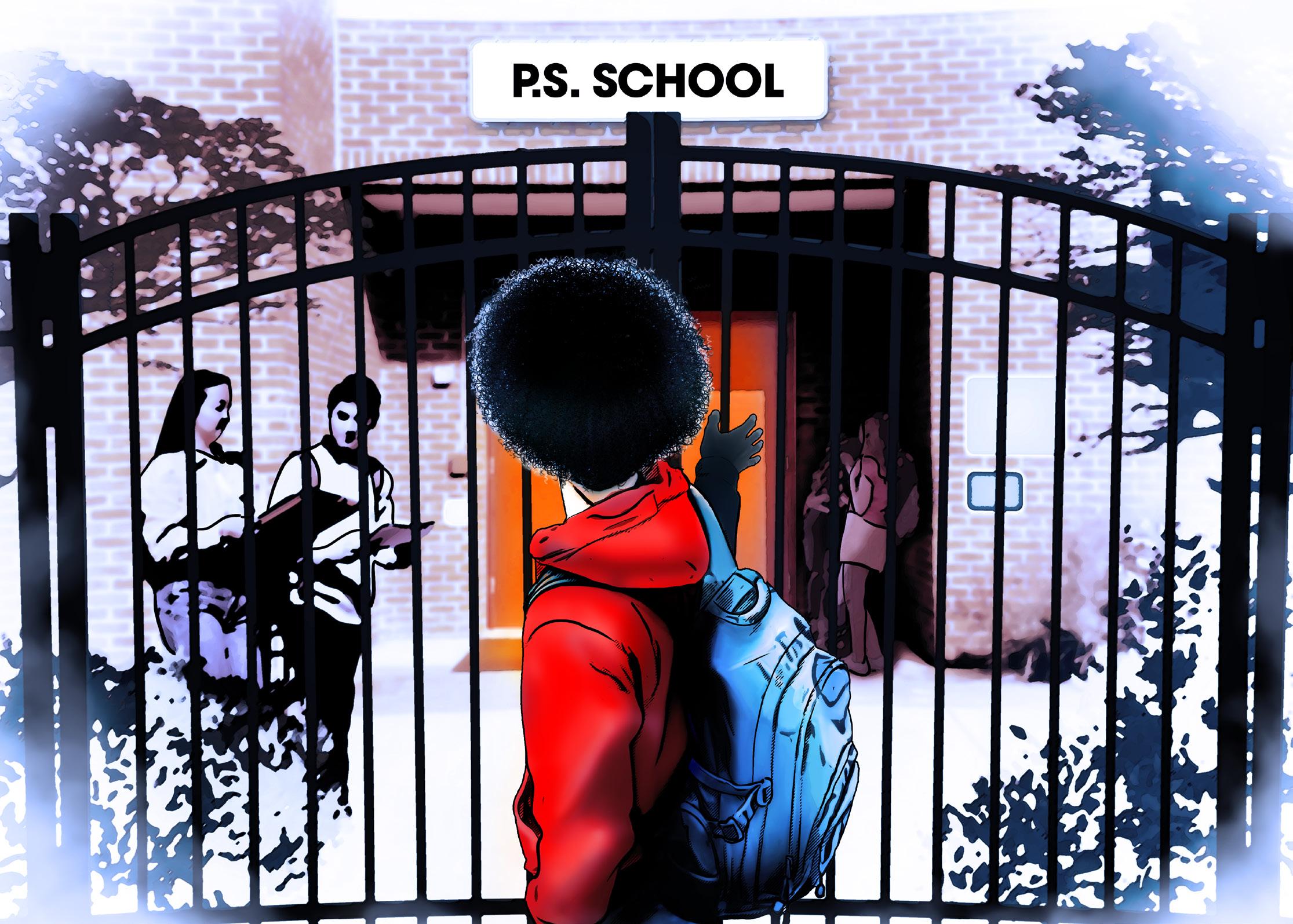





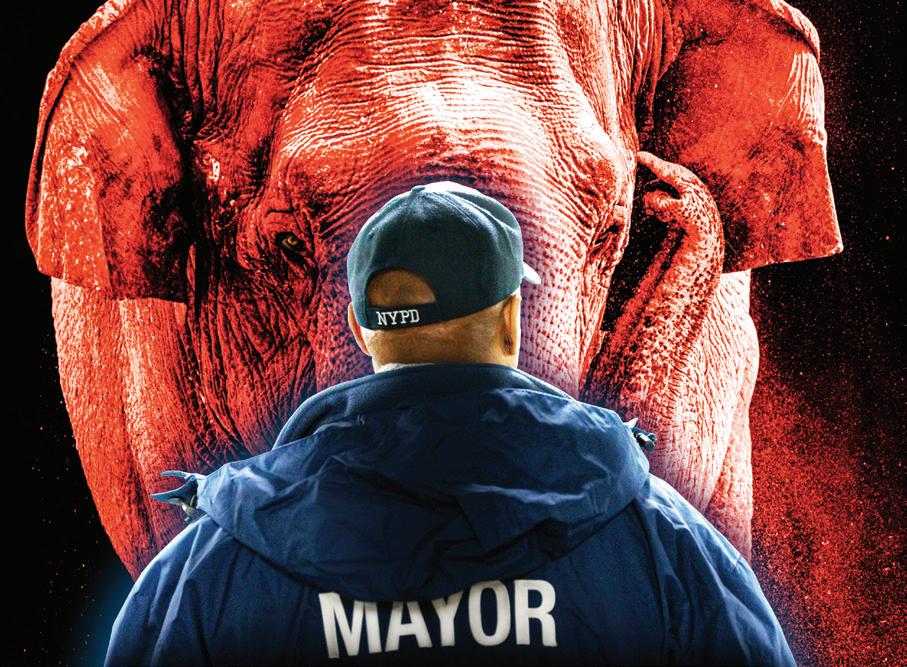

By ARIAMA C. LONG Amsterdam News Staff
Congressmember Hakeem Jeffries and Assemblymember Nikki Lucas’ 8th Annual Easter Hat Pageant was a hopping good time last week. Hundreds of seniors and family members gathered at the Brooklyn Sports Club in their best hat ensembles.
“So this was an event that really meant
a lot to us, and during COVID it was a lot. We were not able to do it for a year or two,” said Lucas. “But Congressman Jeffries, like myself, [said] this is his favorite event. And he was like, we have to do it.”
Lucas said that they started the event in 2017 to celebrate the district’s seniors.
Jeffries spoke about some of the challenges he’s had in defending essential benefit programs like Medicaid and
Social Security from President Donald Trump, tech businessman Elon Musk, and other members of Congress. “It’s good to be home in Brooklyn, a lot going on in the United States of America, these are challenging times,” said Jeffries, “we’re dealing with wickedness in high places and this is resurrection week.”
“Elon Musk says that Social Security is a Ponzi scheme. Social Security is not a
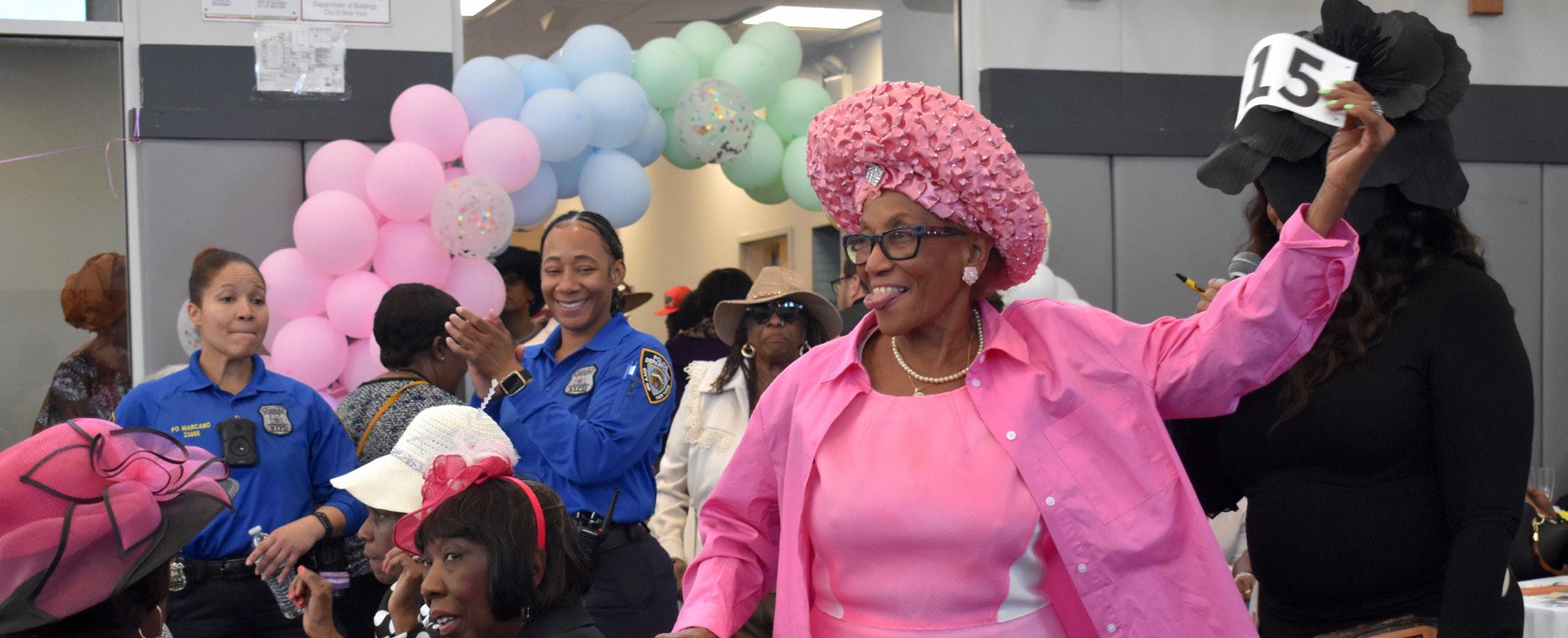
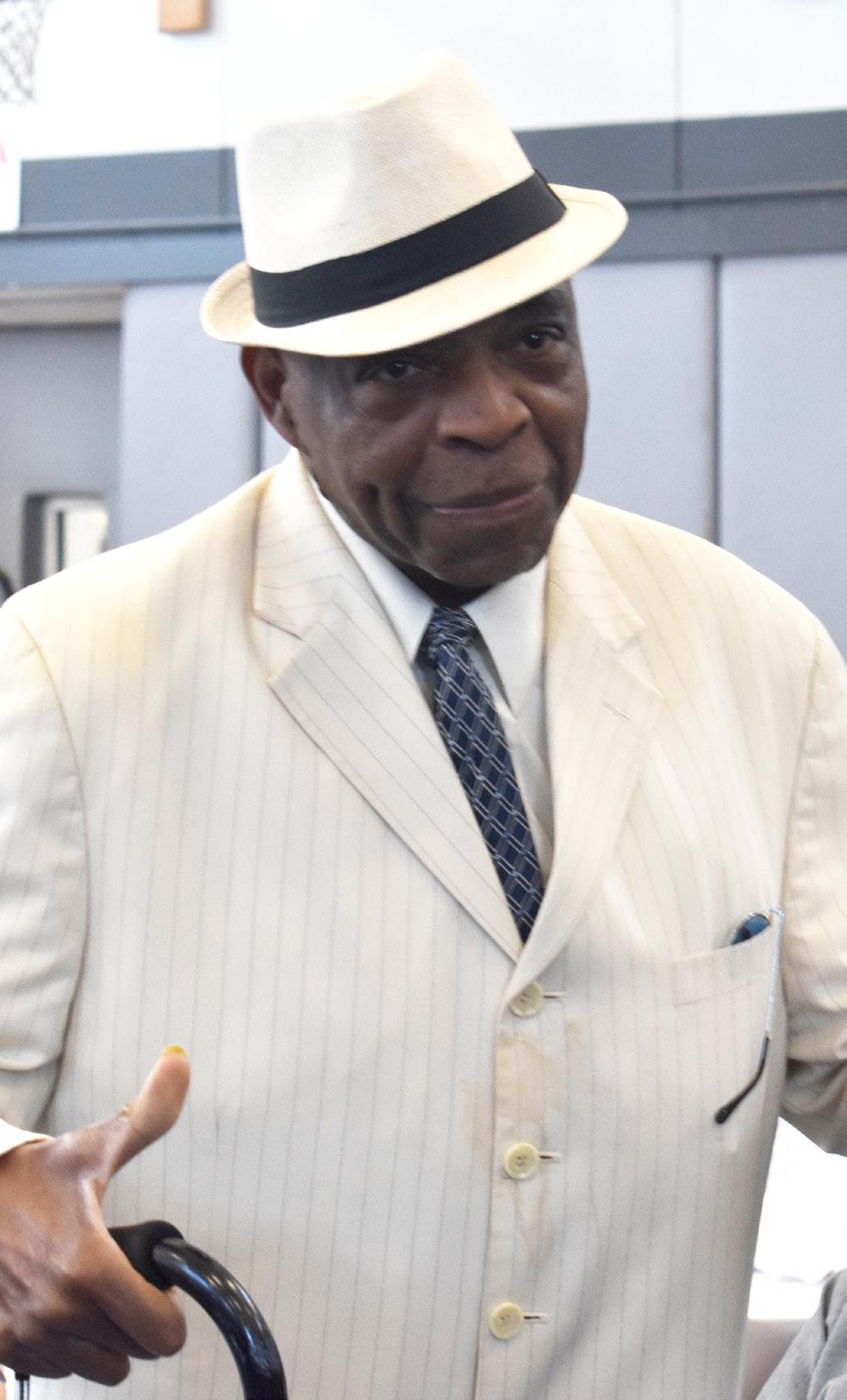
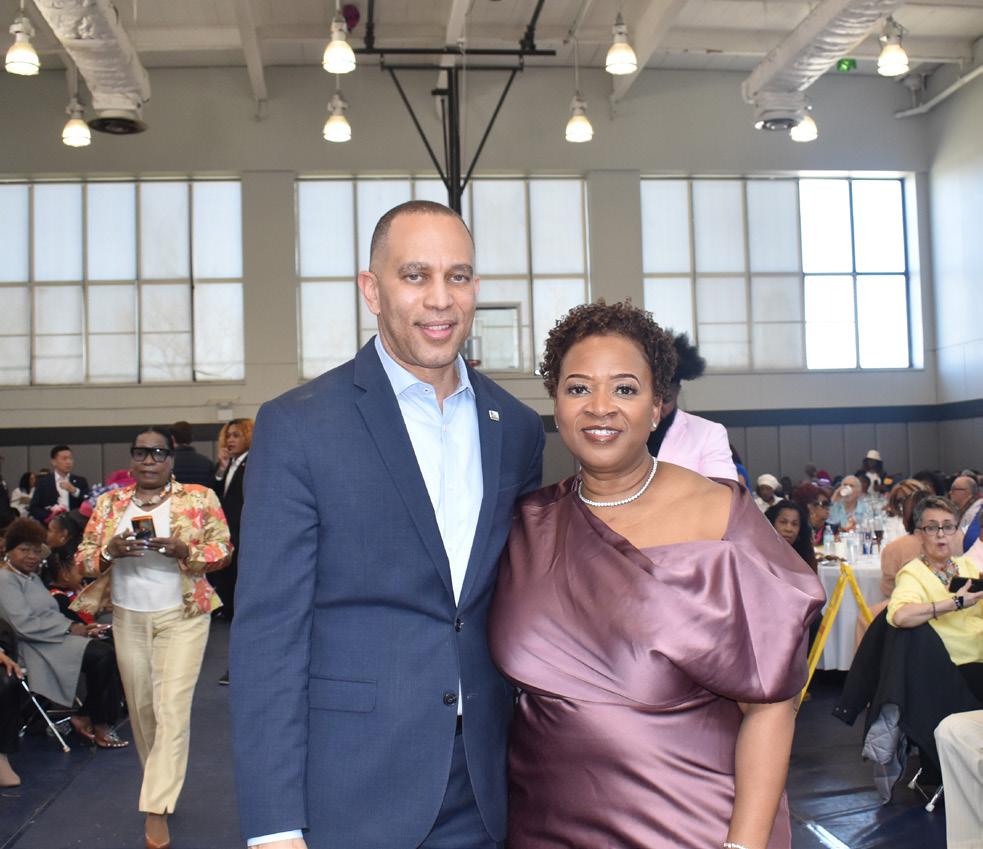
Ponzi scheme, the Trump administration is a Ponzi scheme,” he continued. The winners of the women’s Easter Hat Pageant were: Marcia Pitters in first place, Brigida Antigua in second place, and Joanne Nabors in third place. The winners of the men’s Easter Hat Pageant were: Chi Lo in first place, Curtis Robinson in second place, and Joel Rossberg in third place.
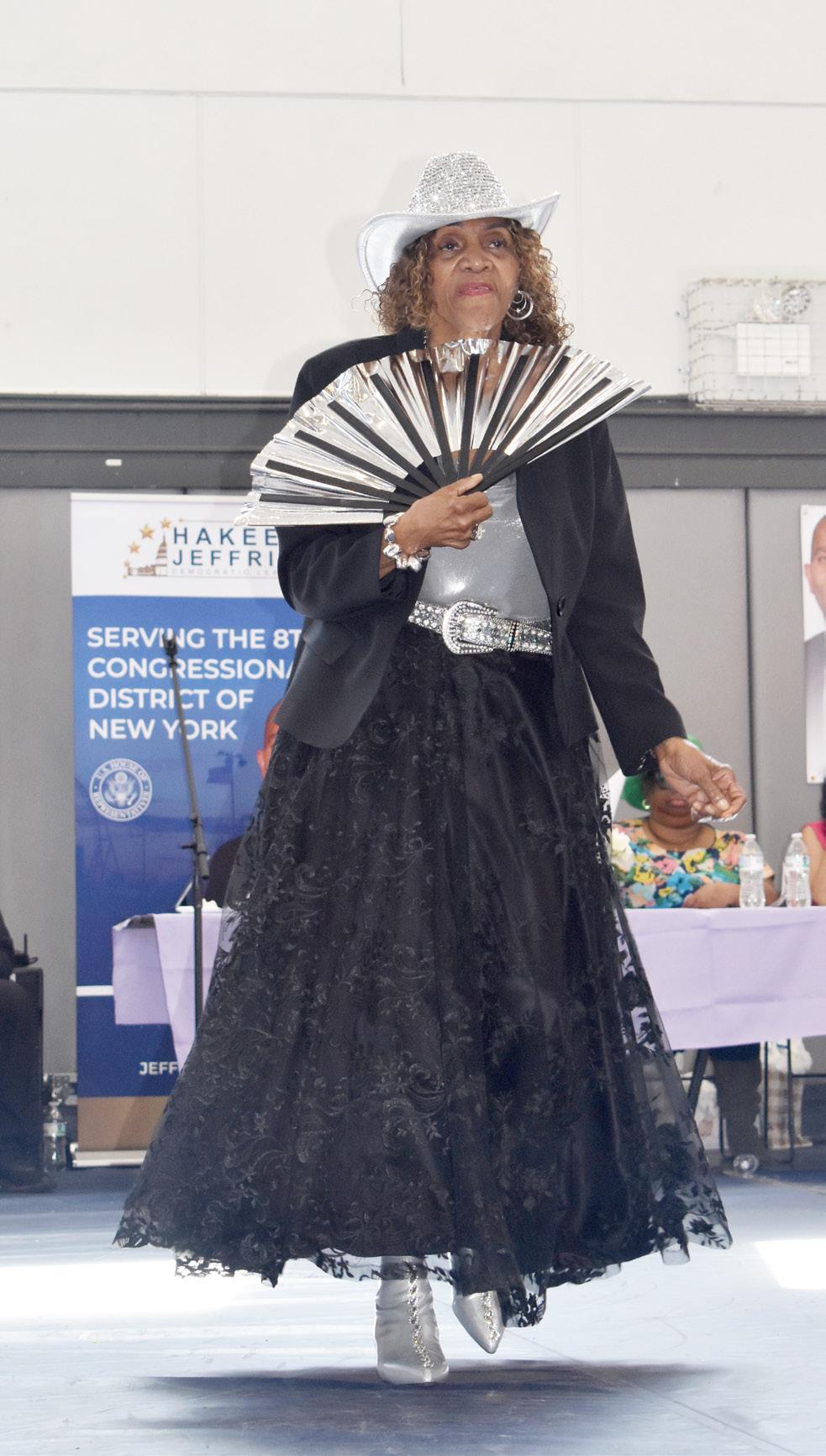
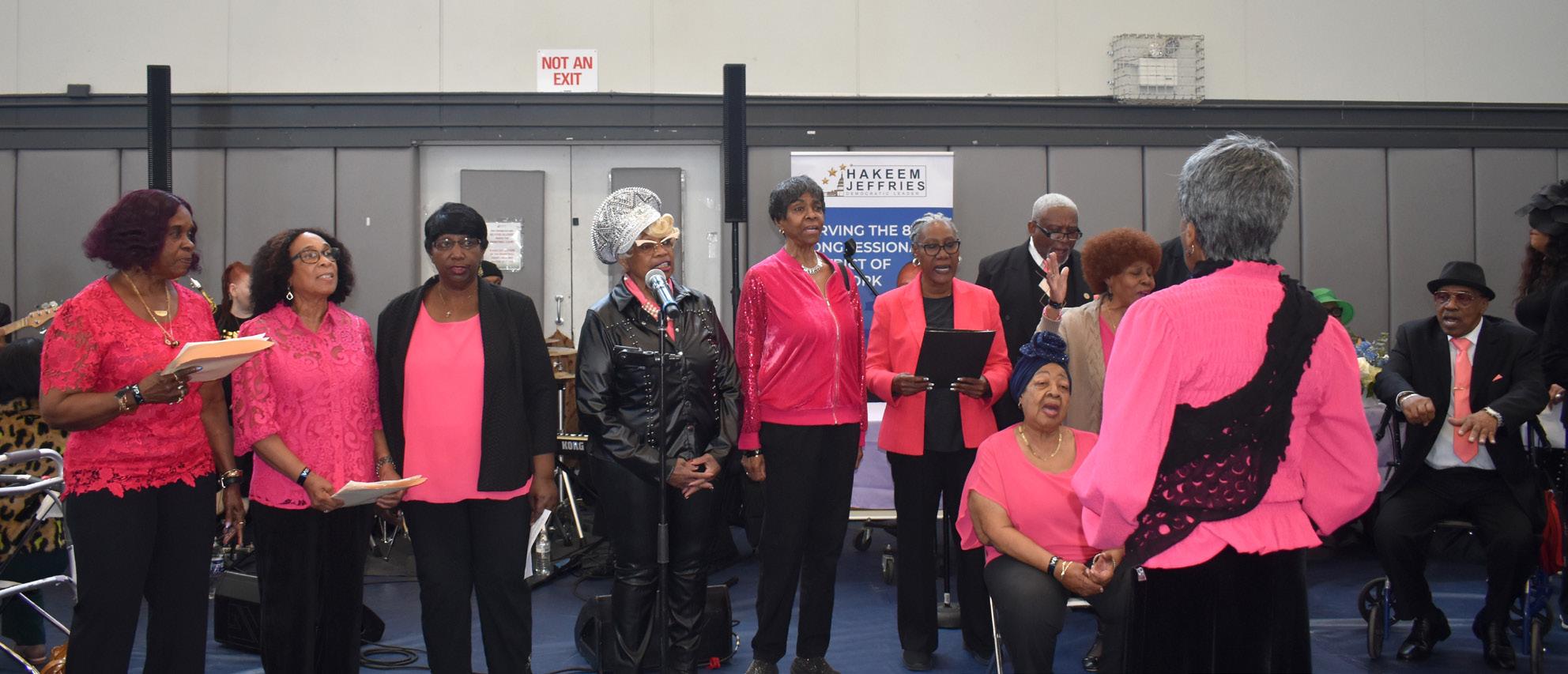
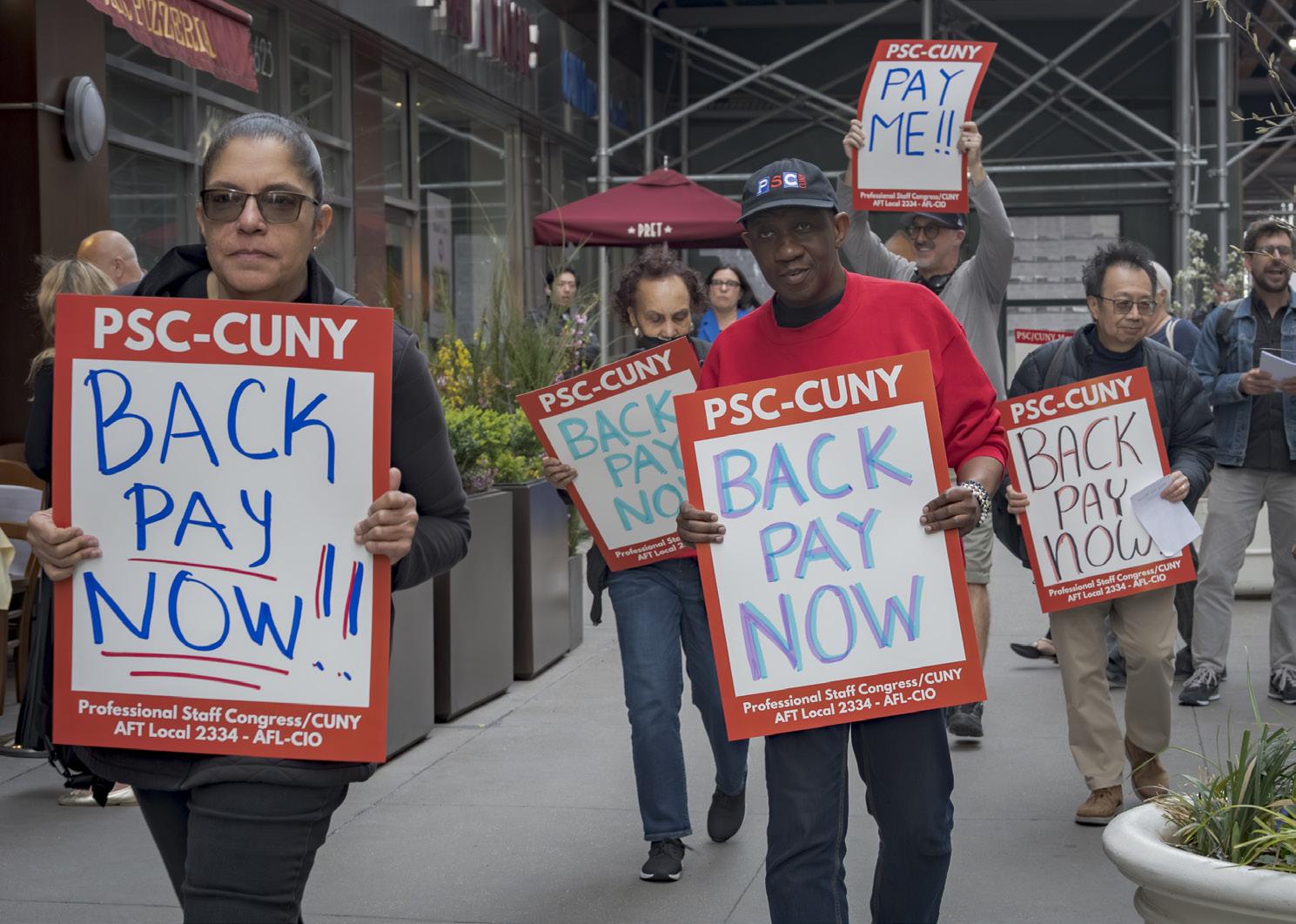
By KAREN JUANITA CARRILLO Amsterdam News Staff
Members of the Professional Staff Congress/CUNY, AFT Local #2334 (PSC-CUNY), organized a picket line outside CUNY’s central offices located at 205 East 42nd Street in Manhattan on Tuesday, April 15.
PSC-CUNY members were demonstrating to push City University of New York (CUNY) management to give them some information about when they would see the backpay they are owed.
In December 2024, the union and the university agreed on a four-year contract, retroactive from March 2023 through November 2027. Union members ratified the agreement on January 13.
The new contract came with salary increases for 26,000 CUNY faculty members. “It’s 13.4% over four years across the board,” PSC-CUNY President James Davis explained. “That’s not that much of an outlier in terms of the public sector in this round. But yeah, we were happy with it ... and 90% of our members ratified it. So, they clearly wanted to get their raises, too.”
But following the ratification, there was no communication from the CUNY administration about when PSC members would start to receive their retro pay or their ratification bonuses. “Because that’s the other thing,” added Davis, “There’s also a $3,000 ratification bonus for all the full-timers and a prorated ratification bonus for part-time employees. And we haven’t heard word one from our administration about when anybody’s going to get the bonus. So that’s got people really anxious and angry.”
PSC members hadn’t had an across-the-
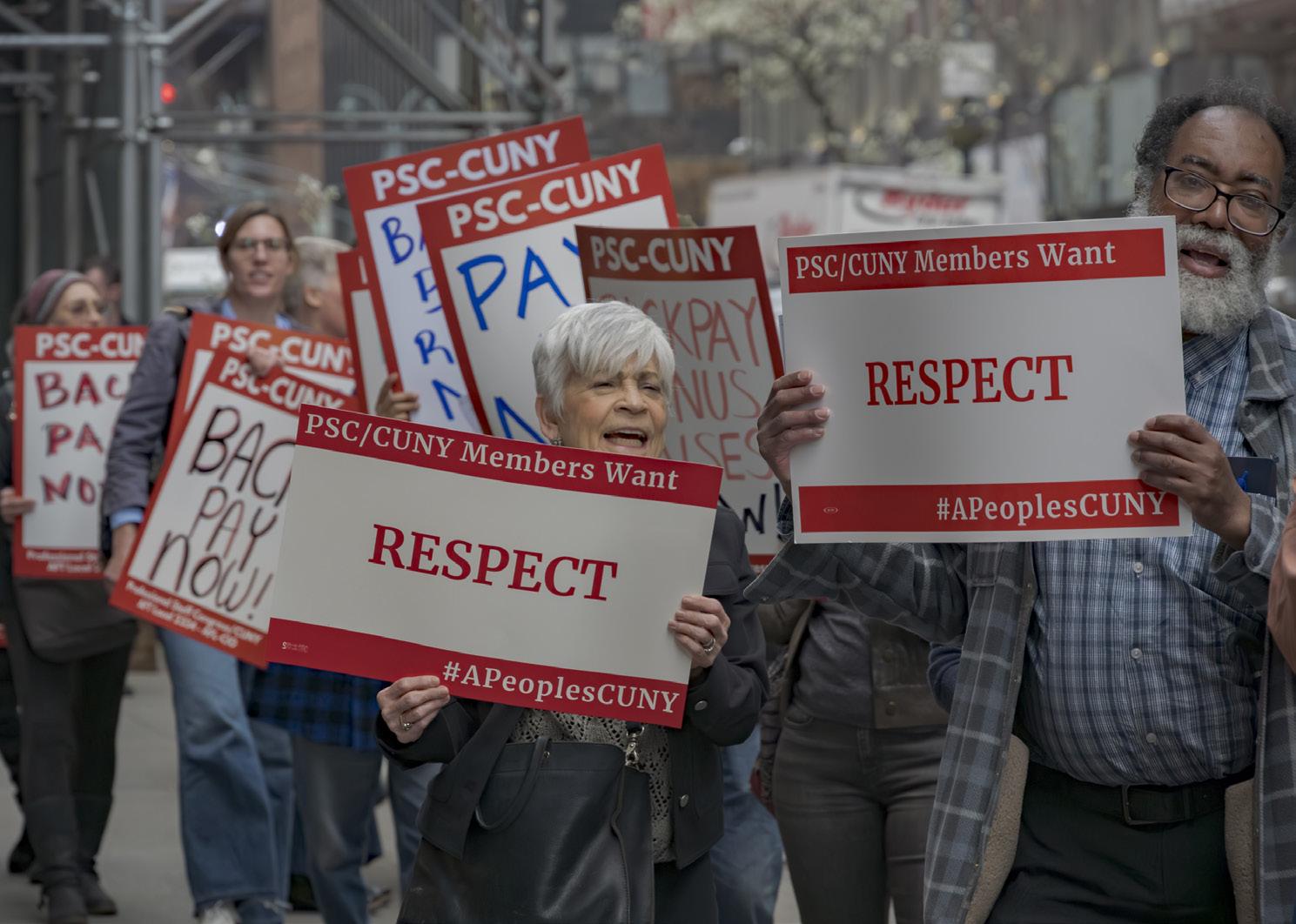
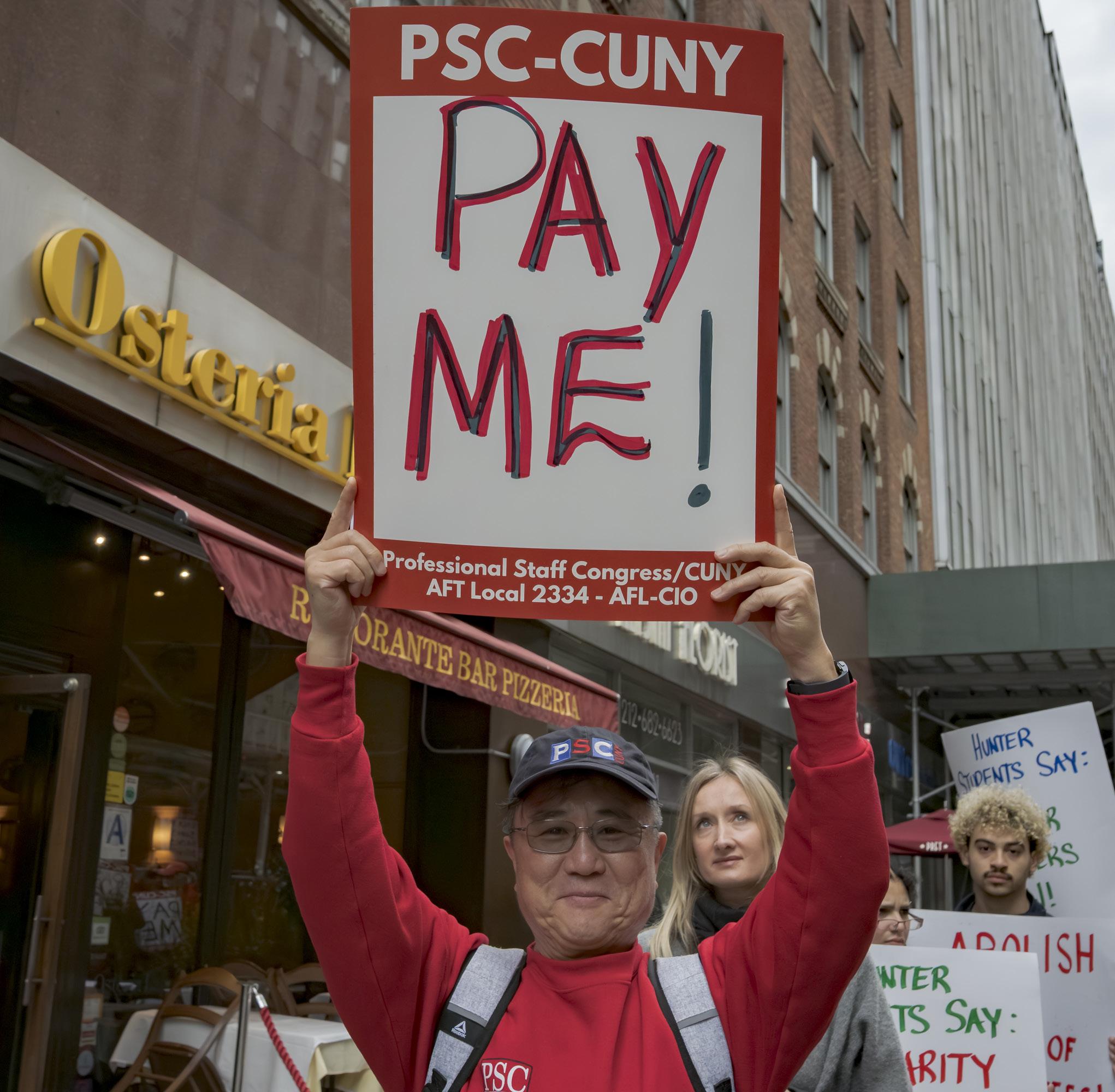
board raise since November 2022.
The Amsterdam News reached out to the office of CUNY Chancellor Félix V. Matos Rodríguez to ask if he wanted to speak about the back pay issue or knew when union members could expect to receive
their backpay. We wanted to ask if there was some logistical reason for the delay.
A CUNY Spokesperson informed us that, “Thanks to close collaboration between the staff at CUNY and at the Office of State Comptroller, CUNY has established an im-
plementation schedule and has communicated it to the PSC members.”
Now, the pay timetable for PSC-CUNY members will take the following form:
May 15: $3,000 ratification bonus for eligible full-time employees paid by the state. May 23: $3,000 ratification bonus for eligible full-time employees paid by the city.
July 24: Prorated ratification bonus for eligible part-time employees paid by the state.
Aug. 1: Prorated ratification bonus for eligible part-time employees paid by the city.
Aug. 7: Wage increases (retroactive to 2023) for all eligible employees paid by the state. Aug. 15: Wage increases (retroactive to 2023) for all eligible employees paid by the city.
Sept. 4: On time new salary increases (from Sept. 1 on) for eligible employees paid by the state.
Sept. 12: On time new salary increases (from Sept. 1 on) for eligible employees paid by the city.
“It’s outrageous that it took so long to get this implementation schedule,” was the response PSC-CUNY President James Davis gave when informed about the backpay timetable. “The credit goes to PSC members for moving CUNY management to complete the work needed to produce it. Union pressure on the central administration yielded results.
“PSC members are both relieved to know definitively the dates of the payments to which we are entitled and angry that they are so late. After ratifying the contract in January, it is frustrating to experience additional delays, and in the case of parttime employees’ ratification bonus, to see a much longer wait than the full-time employee ratification bonus.”
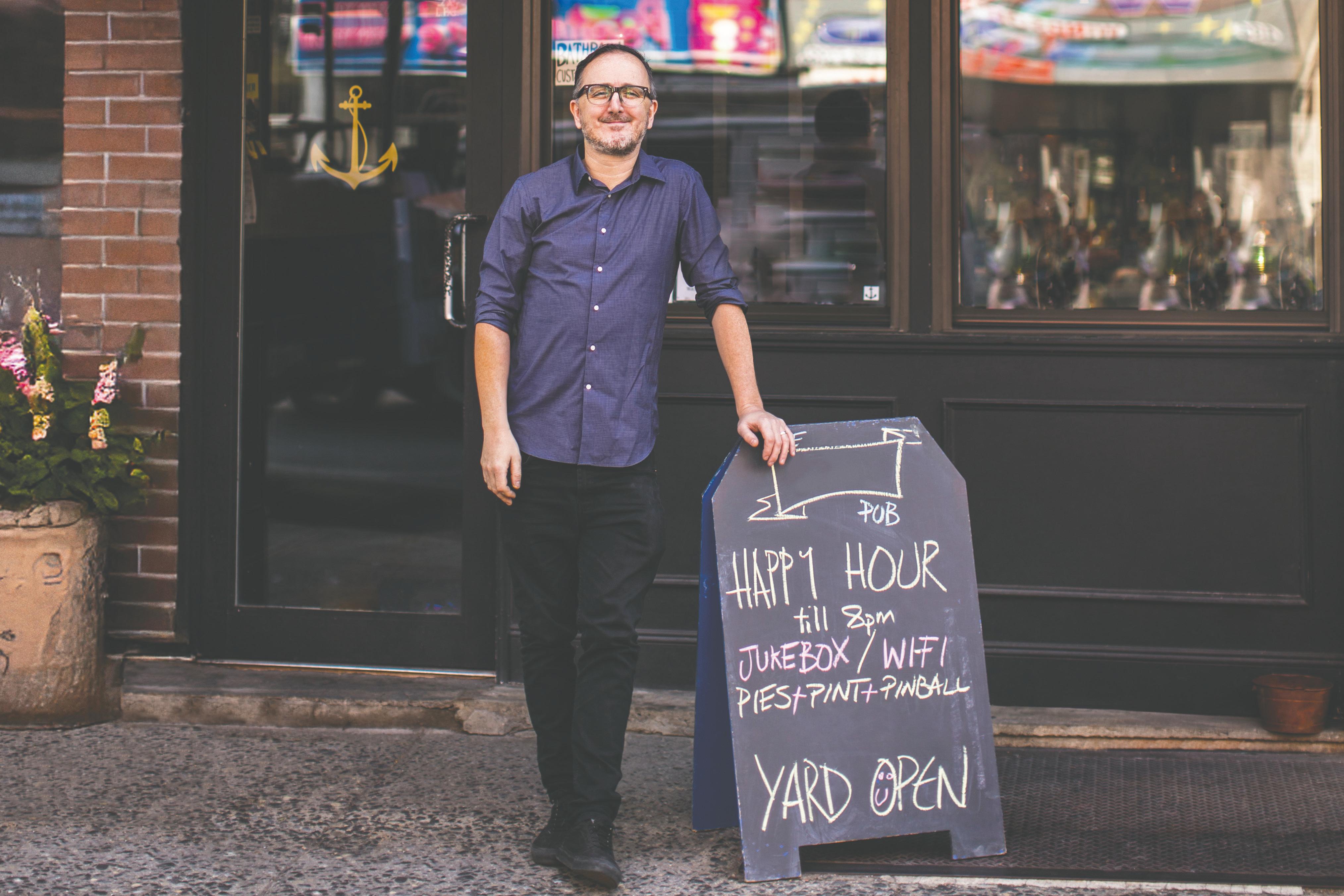

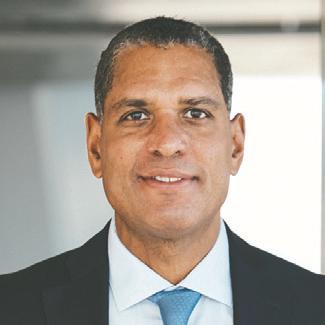


José Tavarez President, Bank of America New York City
The question of who will succeed Pope Francis, who died Monday, has created a groundswell of speculation, and most significant for us is the possibility of an African as the ranking prelate in Catholicism. It’s been centuries since Pope Victor, Pope Militiades, or Pope Gelasius, and all three African pontiffs were quite a distance from modern times.
There is no space here to discuss each of the possible candidates to be selected soon at the Conclave, but Cardinal Fridolin Ambongo, 65, the archbishop of Kinshasa, the capital of the Democratic Republic of Congo, who Francis made a cardinal in 2019, has garnered considerable attention.
It was a historic breakthrough when Argentinaborn Francis became the first non-European pope since the eighth century, and during his tenure he often spoke of someone else emerging from Africa and Asia to the esteemed post.
Ambongo has been reportedly close to Pope Francis, and a member of the nine-body Council of Cardinals, but he was also among the leaders opposed to Francis’ ruling in 2023 that the church should bless homosexual couples. Within a couple of weeks, the cardinals under the age of 80 will assemble in the Sistine Chapel and secretly cast their vote for the next

pope. We doubt whether there will be the drama and intrigue of the recent film “Conclave” that received an Oscar for the Best Adapted Screenplay. And for additional emotional clout in the Vatican, check out “The Two Popes,” inspired by events surrounding the life of Francis and his theological differences with Pope Benedict XVI.
An African pope is a long shot, though Africa boasts of about 20% of the world’s Catholics in 2023 and added nine million worshippers the previous year. Even so, there is much skepticism among Vatican insiders that an African has a realistic chance since Western cardinals command most global attention.
Whoever becomes the new pope, let us hope they possess some of the progressive views that made Pope Francis such an admired leader of the Catholic church and globally.
Elinor R. Tatum: Publisher and Editor in Chief
Damaso Reyes: Executive & Investigative Editor

BY ORAYNE WILLIAMS
In 2017, New York State passed the Raise the Age (RTA) law with the clear goal of fundamentally changing how we treat young people in the criminal legal system. The law was designed to prevent youths –– 17 years old and under –– from being incarcerated in adult prisons and jails. This shift was intended to focus on rehabilitation rather than punishment.
However, as I have seen in my visits to juvenile detention facilities and learned from the young people I represent, the allocation of resources under the RTA program is not meeting these important goals. It is time to rethink how we approach these critical issues.
While the state has allocated significant funds to support youth under the RTA law, most RTA funds have not been used as intended. Indeed, rather than being used for community programs that could prevent youth from entering the criminal legal system, RTA funds are being mostly used for detention and probation.
For example, New York City currently has $340 million earmarked for expanding detention capacity — funding that could be better spent supporting youth programs that work to prevent incarceration in the first place.
These programs, such as those focused on education, school-based intervention, employment, mentorship, and restorative justice, have been shown to improve outcomes for youth, reduce recidivism, and help young people reintegrate into society successfully. If we are truly committed to the spirit of Raise the Age, this is where our focus should be.
In addition, in some counties in the State, more than 80 percent of the approved spending on RTA implementation was used for detention, placement and law enforcement ––with sometimes as little as 10 percent used for community-based services and programs.
The shift away from incarceration and toward community-based services is not just a moral imperative; it is also a practical solution to the challenges our criminal legal system faces. Reducing the number of young people in detention facilities will help alleviate the overcrowding in detention facilities and, most important-
ly, create a path for young people to build better futures.
Research supports the effectiveness of these approaches. For example, meta-analysis by the National Institute of Corrections found that diversion programs for youth are significantly more successful than traditional juvenile justice systems in reducing recidivism, particularly when focusing on medium to high-risk youth.
defense offices can assign social workers to only a fraction of their cases, leaving numerous clients without comprehensive support.
By directing resources to these offices, we can ensure that each case benefits from the expertise of social workers and mitigation specialists, who play a crucial role in addressing the underlying issues contributing to legal system involvement.

Studies by the Urban Institute have also demonstrated that incorporating social workers into public defense teams leads to improved sentencing outcomes and better client engagement with community services. For instance, research assessing a social worker model of public defense found positive effects on judicial considerations in sentencing and enhanced attorney-client relationships.
To truly honor the promise of Raise the Age, we must not only invest in programs and community-based organization but also in public defense, particularly those emphasizing early and adolescent defense.
Investing in public defender offices enables the integration of social workers and mitigation specialists, but because of limited funds, many public
And by reallocating funds to strengthen public defense, we can provide comprehensive support to our youth, addressing the root causes of legal system involvement and promoting more equitable outcomes. This investment is not merely a shift in resources but a commitment to a justice system that prioritizes rehabilitation and support over punishment.
The City has an opportunity to take action now to ensure that the funds designated for Raise the Age are directed where they will have the greatest impact: supporting young people, reducing incarceration, and building stronger, safer communities.
Orayne Williams is the Director of Adolescent Defense Project at The Bronx Defenders
By HERB BOYD
Not much has been said in the mainstream media about Florida State University shooter Phoenix Ikner’s racist views, particularly his feelings that Rosa Parks “was in the wrong.” Moreover, the accused expressed views in keeping with those often espoused by Trump and his socio-economic policies.
According to several news accounts, Ikner, 20, voiced opinions that were so disturbing that even his classmates wondered if what they heard was true.
A classmate, Lucas Luzietti told USA Today, that he often got into arguments with Ikner “over how gross the things he said were.”
Another former student at FSU and at one time a member of a political discussion group with Ikner, recalled that he expressed so much “white supremacist rhetoric and far-right rhetoric” that he was eventually kicked out of the group.
We do not know yet if Ikner’s views were shared in the household with his father and stepmother, whose gun was used in the shooting death of two and the wounding of several others. Even if he was alone in his beliefs, some of them coincided with Trump’s, particularly the lie that President Biden did not win the 2020 presidential election. He also reportedly worshiped Trump. In a statement about the incident, Trump said it was “terrible … and a
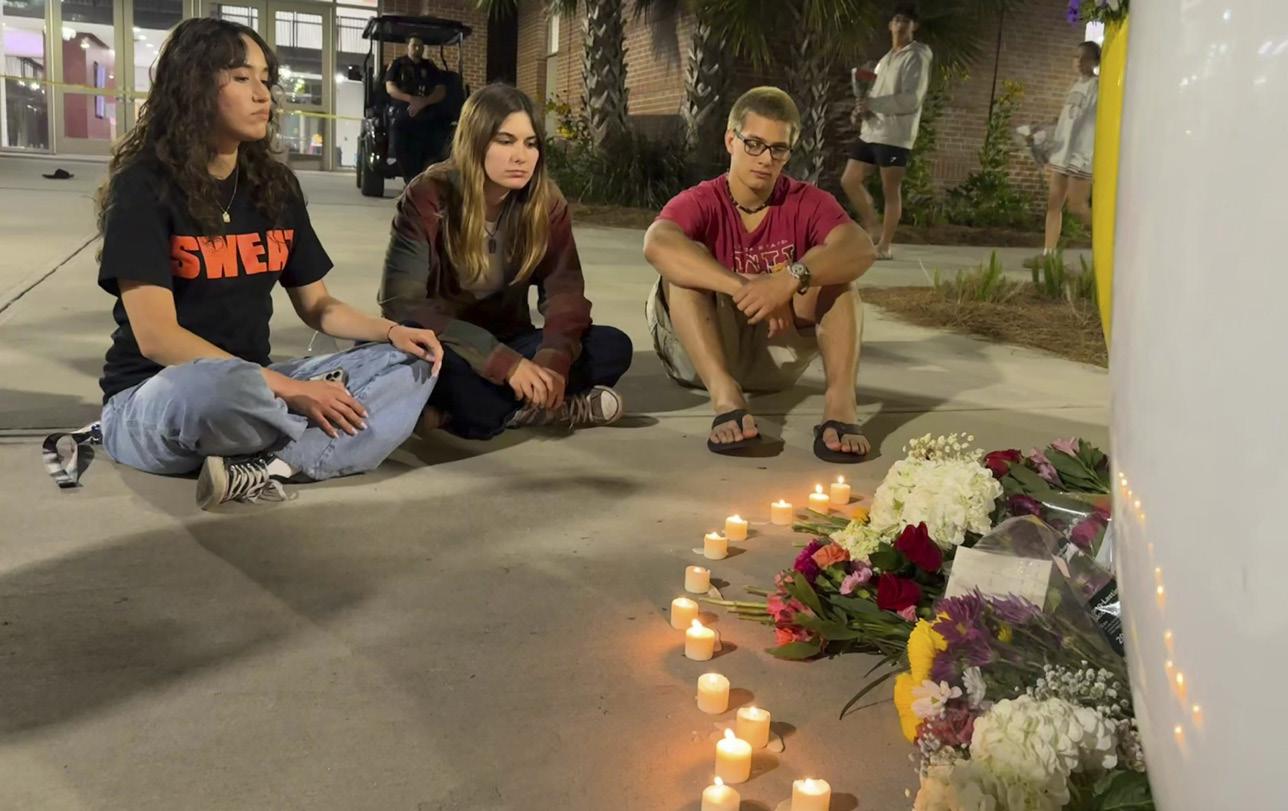
shame.” But then said he planned on looking at stricter gun laws. “As far as legislation is concerned,” he added, “this has been going on for a long time. I have an obligation to protect the Second Amendment.”
I have no information about Ikner’s motivation, though it’s hard to dismiss the notion that some of it was not precipitated about his racist views, and those held by Trump. The issue before the American public is the extent to which this right-wing ideology permeates among the nation’s young.
We know that such a tragic occurrence usually is followed by copycat
shooters, and with a man in power with less interest in gun violence that previous presidents — and one who has pardoned the rioters of Jan. 6 — we can almost bet on another “terrible” moment, not that we are not enduring a raft of them from his erasures.
With a felon in the White House, how are we to believe that anything will be done to stop his determination to invoke his own “rule of law” or lawlessness?
Under his authoritarian governance, to quote the title of a popular film, there will be blood, and too many of the fatalities can be brought to the Oval Office.
BY LATRICE M. WALKER
In 2020, the New York State legislature followed the lead of other smart-on-crime states and enacted sweeping bail reform laws that followed the data on what really moves the needle when it comes to having an effective criminal justice system that prioritizes public safety and individual rights. This historic change benefits thousands of New Yorkers being prevented from living productive lives and contributing to their communities. Six years after the passage of this legislation, we feel it would be helpful to take a look at the numbers behind this change.
According to the Brennan Center for Justice, data from the New York City Criminal Justice Agency show that in December 2023, almost 50,000 people were living in their communities awaiting resolution of a criminal case; 95.7 percent of whom were not arrested and prosecuted for any new offense.
That means by an overwhelming margin, those on bail are not reoffending.
The John Jay College of Criminal Justice’s Data Collaborative for Justice found in 2023 that across all cases in which bail was eliminated, there were reductions for any re-arrest after two years (44% in 2020 vs. 50% in 2019) and reductions for felony re-arrest after two years (24% in 2020 vs. 27% in 2019). Additionally, over a longer 30-month follow-up period, people released after bail reform were not arrested again as quickly for any offense, a felony offense, or a violent felony offense than people who were remanded or had bail set before bail reform.
Put simply, it has been proven that pretrial detainment for most low-level crimes has no impact on the overall level of community safety as evidenced by the low re-arrest rate in New York.
We should not run scared from those who hold onto outdated beliefs that correction programs should
be harshly punitive. Data shows that this type of approach doesn’t provide a good answer to the most consequential question when it comes to actual community safety: Will this person reoffend?
There needs to be an honest discussion about the cost savings it has generated for New York, and fight to have those savings reinvested into programs that produce real results and foster public safety.
Because bail reforms work best when they are directly coupled with increased funding for early diversion programs that support system-involved youth. Better funding for expanding access to mental health resources as well as job training initiatives will help the people exiting our criminal justice system reenter their communities safely and positively. That is how you move from incremental progress to communitychanging results.

CHRISTINA GREER, PH.D.
I know so many people are scratching their heads trying to make heads or tails of this political moment. Some people are getting a real crash course in trying to decipher the difference between laws, norms, rules, and everything in between. I wish I had a law degree some days to help me better understand some of the political events happening in courts across the country at all levels.
Luckily for us, we have someone who writes so eloquently and succinctly to help us decipher (and decode) this political moment. I recently spent time discussing “Bad Law: Ten Popular Laws That Are Ruining America” (The New Press, 2025) by author, legal scholar, and political analyst Elie Mystal. You may know Elie from his signature silver afro, quick wit, and laser-like analysis of the law and how various rulings affect our lives in a myriad of ways.
Some of you may remember Mystal’s first book, “Allow Me To Retort: A Black Guy’s Guide to the Constitution” (The New Press, 2023) which reimagined what our legal system (and society) could look like if we could move past legislation plagued by racism, misogyny, and corruption. “Bad Law” is Mystal’s second New York Times best-selling book, which details and dissects ten pieces of legislation that continue to perpetuate hate, racial bias, injustice, and inequality today. He looks at topics ranging from abortion, immigration and illegal reentry, gun control, and voting rights, to name just a few. I am always looking for books that make complicated concepts easy to
digest and understand.
As The Nation’s legal analyst and justice correspondent, Mystal not only educates his readers on current judicial cases affecting their lives, he helps readers understand how the past practices of the legal system still affect Americans daily.
I am always encouraging my readers of this column to become active participants in their own democracy, and one way we can do this is by educating ourselves. For those who read this column, you also know I believe in supporting Black authors, since there are so many ways the current political climate is seeking to erase our voices, our history, and the ways generations of Americans are inextricably linked by the exclusionary practices baked into the political and justice systems.
“Bad Law” is a must read for anyone who cares about the future of this nation and how we can think more clearly about moving through this moment as well. I am so thankful Mystal’s analysis is so clearly written for those of us who are nonlawyers and legal analysts. The only way we survive this moment is to understand the past in order to better arm ourselves for the legal battles of the present and the future.
Christina Greer, Ph.D., is an associate professor at Fordham University; author of book “How to Build a Democracy: From Fannie Lou Hamer and Barbara Jordan to Stacey Abrams” and “Black Ethnics: Race, Immigration, and the Pursuit of the American Dream” and is co-host of the podcast FAQ-NYC.
By BERT WILKINSON Special to the AmNews
Caribbean leaders, bewildered and concerned about some of the policies of the Trump administration, will have a chance to air their grievances and lobby for waivers when they meet with Secretary of State Marco Rubio in Washington early next month.
Rubio has invited them for consultations after his recent swing through the north and southern Caribbean, when he had heard a mouthful of pushback from heads of government about issues ranging from threats to revoke visas for officials who hire and manage Cuban medical professionals, to impending mass deportations, and to reciprocal tariffs, among other issues to rail about.
Since being sworn in, the former senator from Florida has made himself available to meet with Caribbean representatives. Last month, he had sessions in Jamaica with leaders from Barbados, Haiti, and Trinidad, in addition to the host, and later flew to Guyana and Suriname as he listened to lobbying from the southern Caribbean.
This time, he will meet with the
independent nations in the smaller eastern Caribbean nations (OECS), a sub-grouping of the 15nation Caribbean Community (Caricom). Leadership of the Bahamas is also slated to be at the meeting table.
Since being sworn in as Secretary of State in late January, Rubio has made himself available to meet with nations in the U.S. geographic axis, discussing a range of issues, including energy security and controversial allegations from Washington that the region is helping Cuba traffic medical professionals by directly paying the Cuban government instead of the doctors and nurses themselves, among others.
In announcing the planned meeting, Ronald Sanders, Antigua’s ambassador to the U.S., praised the level of access the region is getting from such a senior administration official so early.
“Such early, sustained engagement signals that the region’s counsel carries weight,” Sanders said. “In diplomacy, there is no substitute for dialogue, especially when new policies are being cast. These meetings, therefore, are vital.”
Leaders have stated that they are particularly concerned about how the new tariff structure will affect the 1983 Caribbean Basin Initiative (CBI) and the Caribbean Basin Economic Recovery Act (CBERA) scheme that President Ronald Reagan initiated to allow largely for duty-free exports from the region.
“The new tariffs announced on April 3 cast a shadow over those preferences,” said Sanders. “No one yet knows whether CBERA’s hard-won relief survives intact or has been diminished in the flood of duties.”
Trump administration officials have also focused on the Cuban medical professionals scheme, long in existence in the region; a situation that has clearly angered officials because Washington has threatened to ban travel to the U.S. in retaliation. Several leaders and top officials have since invited the U.S. to go ahead and take away their visas because the medical program is a lifeline to CARICOM and the U.S. has offered nothing in return.
There are thousands of Cuban professionals in the region, with Jamaica and Guyana being among the largest recipients, totaling

in excess of 1,000 participants alone. “Caricom’s reliance on Cuban medical personnel is born not of ideology but of necessity,”
Sanders said in his weekly syndicated column. “Our own doctors and nurses, trained at public expense, are routinely drawn away by richer countries, including the
US. What remains is a healthcare vacuum that Cuban professionals have helped to fill.” Trade between the U.S. and the region provides the U.S. with a near $6 billion trade surplus, but how the new tariff structure will affect the CBI/CBERA and trade is left to be seen, officials say.

I recently returned from a whirlwind trip to the United Arab Emirates (UAE), specifically the glitzy, bustling Emirates of Abu Dhabi and Dubai. Beyond the shimmering skyscrapers and record-breaking malls, what struck me most was a powerful, often-overlooked truth: immigration works — and in the UAE, it’s the lifeblood of the nation. With a population of approximately 11.35 million, a staggering 10.04 million residents of the UAE are immigrants. That’s nearly 90 percent! The native Emirati population stands at just 1.31 million. In no uncertain terms, the country runs on the strength, sweat, and skills of its migrant population.
Walk the streets of Dubai or Abu Dhabi and you’ll see this diverse
workforce in action, from taxi drivers to hotel workers, from entrepreneurs to high-rise construction crews. The majority hail from Asia — India, Pakistan, Bangladesh, the Philippines, China, Sri Lanka, and Nepal — but there’s also the growing influx from the Middle East, Africa (notably Nigeria), and beyond.
In Abu Dhabi, around 81% of the population are foreign nationals.
In Dubai, that figure jumps to approximately 91%. This isn’t just a demographic quirk, it’s a deliberate national policy that recognizes the economic power and need for immigrants and immigration.
The UAE is one of the world’s wealthiest nations, with a GDP per capita topping $45,000. Unlike the U.S., which seems intent on demonizing immigrants even as they fill essential jobs, the UAE has created a structured, managed system that invites and respects migrant contributions. No, it’s not a free-for-all. Mi-
grants typically require employer sponsorship, and while some sectors have quotas, the general rule is that if a citizen isn’t available or qualified for a job, a foreign worker can fill the role. Most private sector jobs are handled by migrants, while Emiratis tend to work in government roles.
What’s fascinating is how the UAE continues to evolve its immigration model. In recent years, it has opened new doors to highly skilled professionals, investors, entrepreneurs, and even top students. The introduction of the “Green Visa” and the prestigious “Golden Visa” offer longer residency without employer sponsorship — a game-changer for freelancers, investors, scientists, and creatives.
The Golden Visa, for example, grants up to 10 years of residency to outstanding talents across fields such as engineering, arts, medicine, and technology. Real estate investors, entrepreneurs, and even top
high school students can qualify, provided they meet certain financial and academic thresholds. It’s an immigration policy with a vision: one that attracts the best, rewards merit, and nurtures innovation.
The results are visible everywhere. Mega-projects that would take years elsewhere rise in months there, thanks to roundthe-clock labor and a deep talent pool. Despite criticisms that Dubai feels overly manufactured, I found a vibrancy and global dynamism that, in many ways, puts America to shame.
Yes, challenges remain, especially for low-wage workers living in labor camps and enduring intense heat. But for many, the opportunities and wages far exceed what’s available in their home countries. And crucially, the UAE’s national vision –– from “We the UAE 2031” to “UAE Centennial 2071” –– recognizes that human capital, regardless of origin, is key
to long-term growth. Contrast this with the U.S., where “King Trumpeto” and his loyalists continue to scapegoat immigrants while reaping the benefits of their labor. If America is serious about remaining competitive in the global order, it could learn a lesson from the UAE: immigration, done smartly and fairly, is a superpower.
It’s time to stop vilifying the very individuals who keep our economy moving. Instead, let’s take a page from the UAE’s playbook: embracing immigrants and building a smarter, more inclusive immigration system that attracts the world’s brightest minds and hardest workers.
EDITOR’S NOTE: Felicia J. Persaud is the publisher of NewsAmericasNow.com, a daily news outlet focused on positive news about Black immigrant communities from the Caribbean and Latin America.
By JESÚS CHUCHO GARCIA Special to the AmNews
Translated by KAREN JUANITA CARRILLO Amsterdam News Staff
The African diaspora’s contribution to the cultural identity of the Americas and the Caribbean is evident in its aesthetics. Afrodescendant women maintained a certain standard of beauty and used various techniques to create countless hairstyles. Those styles were not widely appreciated, though, and that led some Black women to straighten their hair. This choice might have stemmed from a desire for aesthetic assimilation to the straight hair associated with white women, or some may have felt that straight hair was simply easier to manage.
In Afro Cuban society there is now a growing movement to preserve the aesthetics of African-origin hairstyles that show off cultural dignity. Personally, I find inspiration in my grandmother, who was of African descent and lived to be one hundred and three years old. She adorned her hair with various styles she called “loanguitos,” a term derived from the ancient kingdom of Luango, now part of Congo Brazzaville.
Yadira Rachel Vargas Horta is a historian, restorer, and museography specialist who has worked at the Museo de la Música (Museum of Music) and Casa de las Americas. Her journey through various disciplines, combined with her exploration of Afrodescendant aesthetics, prompted her to reflect on how her experiences intersected. Her work has involved deep dives into the cultural heritage of Afrodescendant communities, and she has aimed to preserve and celebrate their unique histories and contributions.
Through her research, Vargas Horta recognized the importance of hair as a powerful symbol of identity and resistance within Afro Cuban society. She does not view the current Black hair movement as a mere Rastafarian-style fashion trend, but rather as an aesthetic component of cultural identity and a resistance against “ethnic shame.” That shame comes from the failure of some sec-




tors of Cuban society to recognize that the “rizo” or “curly hair” can serve as a symbol of Afro Cuban cultural affirmation. Maintaining traditional African-origin hairstyles is a way to honor the legacy of Afrodescendant ancestors and assert pride in that heritage.
How was Rizo Libre created?
Rizo Libre, or Free Curl, was started during the pandemic when Vargas Horta began creating curls for her mother, who had been used to wearing her hair in straight hairstyles.
Vargas Horta has two daughters and she also began styling their hair. The initiative began at home, involving her family. Soon after, a friend
offered to bring her hair accessories, and subsequently, young women, adults, and girls started to join.
WhileVargas Horta worked on a person’s curls, they would discuss their experiences, including the preference for straightening hair for perceived better looks or social acceptance, indicating the impact of symbolic violence and racial stereotypes.
Vargas Horta’s initiative, Rizo Libre, quickly became a community hair salon. The space exemplifies a commitment to cultural preservation and education. By creating a community where individuals can come together to celebrate and maintain African-oriented aesthetics, she has fostered a space for dia-
logue and empowerment.
Rizo Libre not only encourages the embracing of natural curls but also addresses broader issues such as racism, symbolic violence, and historical injustices. The project serves as a platform for raising awareness about the impact of racial stereotypes and the importance of cultural dignity.
Vargas Horta’s efforts have led to significant milestones, including the organization of workshops like the “Magical Hair” event she held for children in June 2023, where participants learned about the cultural significance of their hair and shared their personal experiences. These workshops have been instru-
mental in fostering a sense of pride and identity among young Afrodescendant Cubans, helping them to navigate societal pressures and embrace their natural beauty.
Vargas Horta’s dedication to these causes is reflected in her authorship of the book “Historias de Afroestima. Mi cabello rizado (Stories of Black self-esteem: My curly hair)” which catalogues her observations and experiences with Rizo Libre. Her work inspires and empowers Afrodescendant communities, reaffirming the importance of embracing one’s heritage and aesthetic identity. For more information on Rizo Libre, visit their Instagram page: @rizo.libre.


By CHRISTIAN SPENCER Special to the AmNews
The “Earth Day: Hands Off Migrants” rally on April 19 drew thousands to Midtown Manhattan in a sweeping protest that lasted from noon to 5 p.m.
With about 21 organizations rallying from Bryant Park in front of the New York Public Library and concluding at the intersection between Columbus Circle and Central Park, the streets were shut down, and the parks were crowded along the way.
Yet some supporters questioned whether the movement’s predominantly white and older turnout reflects a disconnect between its progressive mission and the diverse communities most impacted by the issues it seeks to address.
Held the day before Easter and ahead of Tuesday’s Earth Day, the demonstration was broad in its scope.
Liberal in tone and laced with visible threads of socialism and communism, organizers called for scrutiny of the wealthy, whom they accused of bolstering the Trump administration and policies that worsen environmental destruction, income inequality, and systemic injustices within the criminal justice and immigration systems.
While the protest outwardly promoted inclusivity, the crowd remained predominantly white.
In response, organizers from New York Communities for Change (NYCC) made a deliberate effort to highlight diversity through the inclusion of drummers, banner holders, and speakers from a range of racial and cultural backgrounds.
Leading the march were demonstrators,
including Jesús Casado González of the New York Immigration Coalition; Winsome Pendergrass, a prominent NYCC member known for her advocacy on tenant and workers’ rights; and David Alexis, representing NYCC’s Flatbush chapter and voicing concerns from the Haitian and broader Caribbean climate communities.
Some attendees expressed hope for a more diverse turnout, while others acknowledged their own privilege in simply being able to show up.
“I can come out and not be terrified like some of my neighbors who are scared to even come to this event,” said Jamie Leo, a protester who attended the march to call out white privilege. “Often, people of color are the most vulnerable to environmental degradation. So anyone who professes to love their country or their friends and family — or in my case, my nieces and nephews — has to be out and make this rise of voice a priority.”
That call for deeper inclusion and urgency was echoed by New York City Public Advocate Jumaane Williams, whose presence flanked by security was as vocal as it was visible.
“I love this Earth Day with the Declaration of Interdependence,” Williams said. “It’s a great message for where we are now. Hopefully, the more horror we see –– which is sad –– the more people will realize this isn’t just going to happen to the people they don’t like. It’s going to happen to all of us.”
He also didn’t shy away from the demographic disparities of the movement.
“Sometimes the crowds are a little less melanated than we would want,” he said. “So I always have to call out the over 90% of Black women who tried their best to vote against this, and almost 80% of Black men who did
the best they could to save this country. I’m hoping that other groups will see what they did and next time join in to make sure we don’t ever go through this again.”
Like many speakers that day, Williams linked climate justice to broader struggles against systemic oppression, be it through immigration enforcement or attempts to rewrite history.
“What we need to realize is that this is about erasure,” he said. “Whether it’s trying to get rid of the African American Museum in the Smithsonian, or it’s deporting people— it’s never just about public safety. It’s never just about violent criminals. It’s about the erasure of everybody.”
“That’s why the Declaration of Interdependence is so important,” he continued. “Because the God’s honest truth is that some of us drank some of the orange Kool-Aid because we thought it was going to happen to the other. But it’s happening to all of us.”
New York City Comptroller Brad Lander joined the demonstration and said the acrimony surrounding recent deportations helped transform the event into something broader than originally planned.
“I first heard about the event just in the last couple of days,” Lander said. “We knew there was going to be a climate-focused event, but with the deportations taking place, people decided to combine those causes and really turn people out.”
“We will not be a country that sends people without due process to be tortured in El Salvador or have students scooped off the street for writing op-eds,” he said. “That’s why we’re out here –– to say, get ICE out of New York City, to resist these illegal deportations, and to protect our democracy and our planet.”
Asked what his environmental priorities would be if elected mayor, Lander responded: “I just released the boldest climate plan in the race,” he said. “It includes a big scaling up of renewable energy and rooftop solar, and an ambitious set of plans to get the city ready for the climate crises we’re already facing. On Tuesday (Earth Day), we’ve got a major announcement about the city’s pension funds to help reduce emissions, decarbonize, and save our planet.”
Lander’s proposals offered tangible policy responses to the intersecting crises of deportations and environmental racism. However, a march aimed at Black and Brown people with an overwhelmingly white presence leaves a familiar tension simmering just beneath the surface.
Derrick Owens, a Black volunteer at the march who wore NYCC’s orange shirt, told the Amsterdam News that he attended to raise awareness about climate change and to push for a shift to renewable energy.
“As the temperature has risen,” Owens said, “what we really need to do as human beings is look toward alternative energy sources like renewables.”
When asked if the march was raising awareness or fighting against something in particular, he replied, “Both. We’re fighting against companies that profit from fossil fuels –– billionaires who get tax breaks –– like oil companies. It’s about making people more aware of what’s happening to the planet.”
Before the march officially kicked off, Owens hadn’t heard any official directive to protest political figures, but added, “I wouldn’t be surprised if chants broke out against Trump.”


BY TRACIE MCMILLAN Special to the AmNews

If American life is a river, relief from poverty and strife sits atop one of its slippery banks, and the American Dream sits safely back from its edge. Few of us manage to plant our feet firmly enough in that soil to have no fear of it falling away; fewer still are born there in the first place. Most of us, instead, start out somewhere in the water and do what we can to make it across. Family wealth determines our starting point. Economic class is the distance we must cover. Our various privileges — our individual rankings of talents and gender and beauty as well as race — are the scraps of wood and inflated rafts that present themselves in the current.
White Americans rarely talk about the differences in our crossings. Those who’ve reached the far bank often stay silent, content in having arrived. Many of those still in the river remain silent too, certain that speaking up will only make their crossing more difficult. Few of us consider how we might make getting across the river safer for everyone, or how to make that slippery bank a bit easier to climb. I have often stayed silent, and it has had its benefits. But I am no longer convinced it is for the best. That is a long way of saying that, for a very long time I thought race and racism “happened” only to people who were not white. As a journalist, I reported on poverty and
hardship, and could see plainly how racism kept nonwhite people down. I did not yet see how it pulled white people up. That limited approach mirrored the way that I’d been taught to understand race and racism: It wasn’t about me.
I dimly understood my race; it was a vague, immutable power about which I had limited knowledge, and even less control. Given the power my whiteness holds, it now feels strange, bizarre, — even dangerous — that I entered adulthood with so little conscious understanding about how whiteness works and what it means. This fact frustrates and embarrasses me, but it is nothing new for a white American.
For most of my adult life, I understood my place in the world through the lens of economic class. I grew up in a white, middle-class family. My mother fell ill when I was five years old. The adults in my family discussed medical debt constantly. When I was twelve, my mother moved to a nursing home. When I chose to pursue a career as a journalist covering the poor despite its low pay, I often found myself without much more income than the people about whom I wrote. Unwittingly and always somewhat unnecessarily, I have periodically experienced something of what it is like to cross the river unaided.
It has terrified me each time. It terrifies me still.
As a reporter, I know how to be specific about how race works for people who are not white, especially when they are Black. I know that Black children born poor in America are one-quarter as likely to become rich as poor children who are white, and I know that Black boys born rich are half as likely to stay rich as their white peers. I know that Black people are no more likely than whites to use or sell drugs, but they are three to four times more likely to be arrested on drug charges. And I know that when they are convicted of any crime, Black people are more likely to be sent to prison than white people. I know Black families have 13 percent of the wealth of white ones.
In this country I am rarely expected to acknowledge the obvious inverse: That white people born rich are twice as likely as Black people to stay that way. That we are twothirds to three-quarters less likely to be arrested on drug charges. That we have eight times as much wealth.
Indeed, for all the difficulties of my crossing, whiteness has buoyed me up in my hardest moments. Some of the benefits of my race are hard to measure: my ability to blend in among white people with more
power, to safely express anger in public, or to prompt sympathy with my tears. Others are easier to quantify: Racist policies in housing let my grandparents build middleclass wealth that was denied to Americans who were not white; racist administration of the G.I. Bill gave them access to college that was largely denied to Americans who were not white; and racism ingrained in the publishing industry gave me advantages that led to the contract for my first book — and the contract for this one, too.
This is a sprawling story. To tell it, I must break it into smaller, more manageable stories, and then weave them together into a larger whole. I begin with my family’s story and end with my own, tallying what I have come to call a “white bonus” along the way. This concept is a clear inverse of what scholars and journalists have long referred to as the “Black tax”–– the higher costs faced by Black Americans who have been denied so much of the aid extended freely to whites. For this “bonus,” I’ve chosen a crude but telling measure: the total money my family has spent on me since I left home at seventeen years old. The reasoning is simple: It is money I did nothing to earn, that my family See story on next page
had no legal obligation to spend on me, and that my family was able to give. Then I look at my family’s history and use my skills as a journalist to investigate: How likely is it that my family would have had that money to give if they were not white?
The more frequently I answer “not very likely,” the more financial benefit I’ve seen from whiteness. This initial “family bonus” is almost exclusively a measure of how American public policy, which built the twentieth-century’s middle class, has trick led down to the current day. This is the first piece of my white bonus.
The next element of white advantage I consider derives from the downstream ef fects of what W. E. B. Du Bois called white ness’s “psychological wage,” the comforts and benefits that come from being a member of a dominant group. These are the small, interpersonal ways that doorways to power are opened: the offering of ben efit of the doubt and encouragement, rather than suspicion and dismiss al, which in turn encourages white people to tacitly believe they are en titled to things that others are not. Although these advantages begin as intangible privileges, they fa cilitate access to material advan tages. This indirect relationship makes it difficult to measure this el ement of white advantage, what I call a “social bonus.” Still, when any event arose in my life, or that of my subjects, we where implicit white advantage seemed very likely to have yielded material benefits, I have tallied those, too.
Any honest consideration of a white bonus, though, must also address a relat ed element: racism’s cost to all of us. This is different from the amorphous concepts of “privilege” and “fragility” that have domi nated America’s discussion of whiteness in recent years. Its most recent champion is writer and policy expert Heather McGhee, who speaks compel lingly about how racism hits “the target first and worst.” Racism, then, hurts non white, and especially Black people the most —- but it hurts many whites as well. This broader understand ing of racism is an important comple ment to, not a re placement for, the extraordinary body of work chronicling racism’s harms to its direct targets. It also begs a question that drives this book: If racism in American policy has given so much to whites, is there a point at
which its costs outweigh its benefits, even to white people?
I cannot claim that the numbers I come up with are the definitive, irrefutable truth required of social science. For most white people, this ambiguity is sufficient grounds to dismiss the attempt at putting a dollar value to racism in my life. As a journalist, I asked the question anyway, and sought the truth for my answer. I think there is value in this work. If nothing else, I can tell a good, true story that I have not read before. There are worse things to add to the world than this.
ters of the book. In between most of those, I have added four profiles of other white people, whose lives touch on history and policies that my own family does not. They are from different parts of the country, different generations, different gradations of economic class. Each subject has spent most, if not all, of their life in America’s shrinking middle class. Several are poised near the downward slide from middle-class to poor, reflecting, I think, an uncertainty about whether their economic stability will last.
As big as this story is, I
the 20th and 21st centuries. This excludes the 246 years during which enslavement based on race was a legally codified part of America’s economic and political structure, as well as the 35 years, including Reconstruction, that followed the Civil War.* I had to draw a line somewhere — and I believe the last 124 years provide plenty of insight into how racism has given advantage to white Americans.
Second, this book is primarily concerned with the divide between the experiences of Black Americans and white Americans. I have chosen this approach because the divide between Black and white is so enduring here that to call it “caste,” as the journalist Isabel Wilkerson does, is accurate. What this work adds, I hope, is a material suggestion for why caste has taken such

Third, all of my primary subjects are white, and I do not systematically compare them to subjects who are not white. I have made this decision in hopes of forcing myself to study white advantage, and white advantage alone. This is important. I do not like to admit it, but there is a relief I feel when I listen to stories of how racism hurts people who don’t look like me. There is the relief of absolution in exchange for having borne witness, and the relief of maintaining my innocence. Most of all there is the relief of having kept the focus off of me. I do not trust this relief, which keeps me so comfortable and does so little to change anything. The White Bonus is what I found by leaving that relief behind, and practicing honesty instead.
The foreclosure crisis of 2008 was disastrous for Detroit. Before the crisis and its fallout, Detroit was a city of homeowners. That was true in the mid-century, when it was a majority-white city, and it stayed true as Detroit became a majority-Black city. In 2000, 52 percent of Black households there owned their homes, well above the national Black homeownership average of 46 percent.
Detroit’s status as a city that was majority Black and majority homeowner put it at the center of a crisis started by bankers on Wall Street, which in turn sent its home prices spiraling downward. This is because lenders targeted Black communities for the
riskiest and most expensive loans. More than half of the mortgages held by African Americans were subprime –– compared to just 18 percent of the mortgages held by white Americans. The most explicit example is Wells Fargo’s subprime marketing program aimed at Black homeowners and promoted through churches ––- internally, the bank’s brokers referred to this financing as “ghetto loans.” After the financial crisis, white families averaged a drop in wealth of more than one-quarter –– while Black families, on average, lost nearly half of their wealth. Indeed, this pattern of incorporating Black Americans into middle-class financial institutions but on predatory terms is so pronounced that scholars have coined a term to describe it: “predatory inclusion.”
In 2007, nearly 5 percent of the Detroit area’s homes went into foreclosure ––– a greater share than in any other city at the time. Over the next eight years, roughly 65,000 Detroit mortgages would fail; more than half the properties ended up blighted or abandoned. There is no solid figure tallying the dollar value of that loss of wealth, but even a hypothetical loss of just $20,000 in equity per foreclosure would have generated a loss of $1.3 billion in family wealth across Detroit. Research suggests most of that loss was borne by Detroit’s Black families, who made up 82 percent of the city.
In 2015, in the wake of the subprime crisis and in the early years of Detroit’s tax foreclosure crisis, I bought a house on the city’s Southwest side through the Detroit Land Bank. I bought it because I have community in Detroit; because I have rent-stabilized housing in Brooklyn that I could never replace if I left; because the stock market scares me; and because I liked the idea of investing in a city that I loved.
Most of all, I bought an abandoned house in Detroit because I could afford it. With a down payment of $2,750, I was able to finance the rest of the $27,500 purchase price, as well as the repairs the house needed. The house had gone into foreclosure in 2013. There’s no public record of the mortgage rate, and the previous owner, a Latino man, declined to discuss it with me. But I can tell you that 68 percent of mortgages in Detroit were subprime in 2005 –– and he had refinanced the house in 2007. I doubt those numbers had changed much by the time he and his wife signed the papers.
I do not remember what year it was when I realized my house was worth more than what I owed on it, giving me wealth. I do not remember the year my equity climbed into six figures, but I know that the housing market explosion in 2020 spurred it higher still. I felt such relief each time I saw this wealth climb, because it offered me safety. And I felt such bitterness too, because I know it was only possible in Detroit because the banks and the city’s tax officials made decisions as if it did not matter
whether residents lost their homes. I doubt that would have happened if most of the people in the city were white.
Detroit’s loss has been my gain. As a white person who has gained equity from Detroit’s losses, I am supposed to take the spoils without comment. I am supposed to know that if I comment, the spoils might be taken away. That is how my family does things, too.
In 2022, my father began to speak, obliquely, about setting up trusts. He explained that my sisters, stepsister, and I would each get “a quarter,” minus about $100,000 to be split among their four grandchildren. My father does not use the phrases I expect of someone bequeathing wealth; there is no mention of “inheritance,” no talk of an “estate,” not even the word “wealth.” That year marked the first time my father had mentioned anything to me about leaving money to his children.
This is the long tail of the midcentury government policies and private practices that gave so much to white Americans and withheld so much from everyone else. An inheritance from my parents, which itself is passed on from my father’s banker father, would have let me buffer myself against the unpredictable income of a writer, against unexpected expenses from the property I own, against medical bankruptcy if I sicken, against poverty when I am too old to work. It is how I, and my sisters, and my nieces and nephew, are expected to compensate for our government’s evident indifference to its people’s needs for health care, for affordable shelter, for education that leads to a stable life, for healthy food –– an indifference that, over multiple elections, a majority of white Americans have endorsed. And it is why my parents expect me to stay silent as they lie –– to themselves and to me –– and say they’ve earned this; that we have earned this.
I did not earn this. Not the money. And not this government that takes my taxes, and gives me ––– and most Americans without great wealth ––– so little in return. Not this government that takes my taxes and sends most of them into the pockets of the wealthiest humans the world has ever seen.
There are other things I have earned. The firm knowledge, gained in writing this book, of the myriad ways racism I did not create benefits me nonetheless. The knowledge that, for me, these benefits are not worth my silence. And the understanding that nothing in this country will get better ––– health care and housing will not become affordable, wages will not go up, our air and water won’t stay clean, the wildfires will not recede ––– if I do as my family has taught me, and endure silently in hope of getting out alive.
I have earned, in other words, an answer to the questions that began this book. I know, now, something of what racism has given me. And I have earned the conviction that those benefits aren’t worth what they cost. At least, not for me.
Tracie McMillan is an award-winning author and journalist covering America’s multiracial working class.
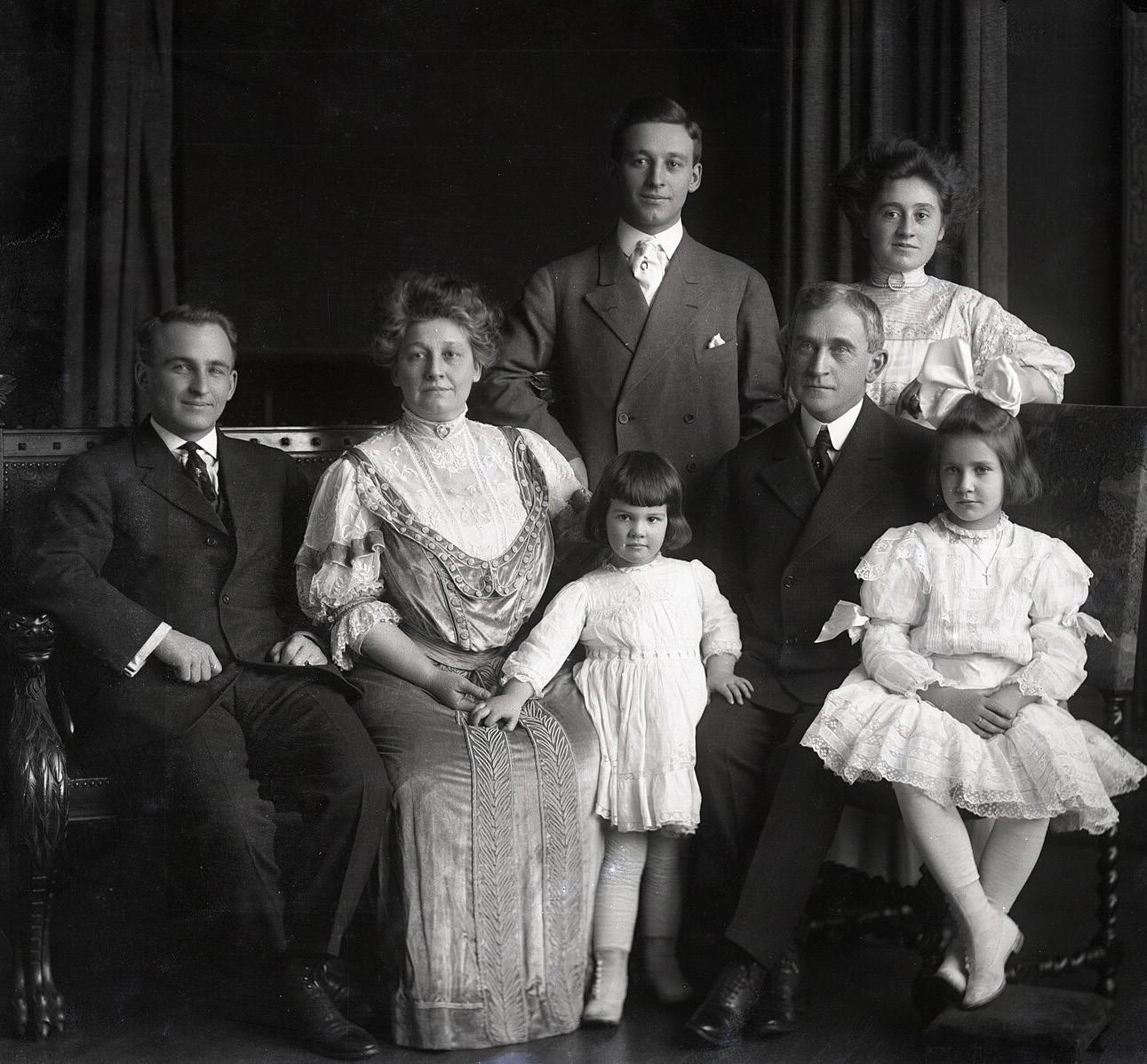
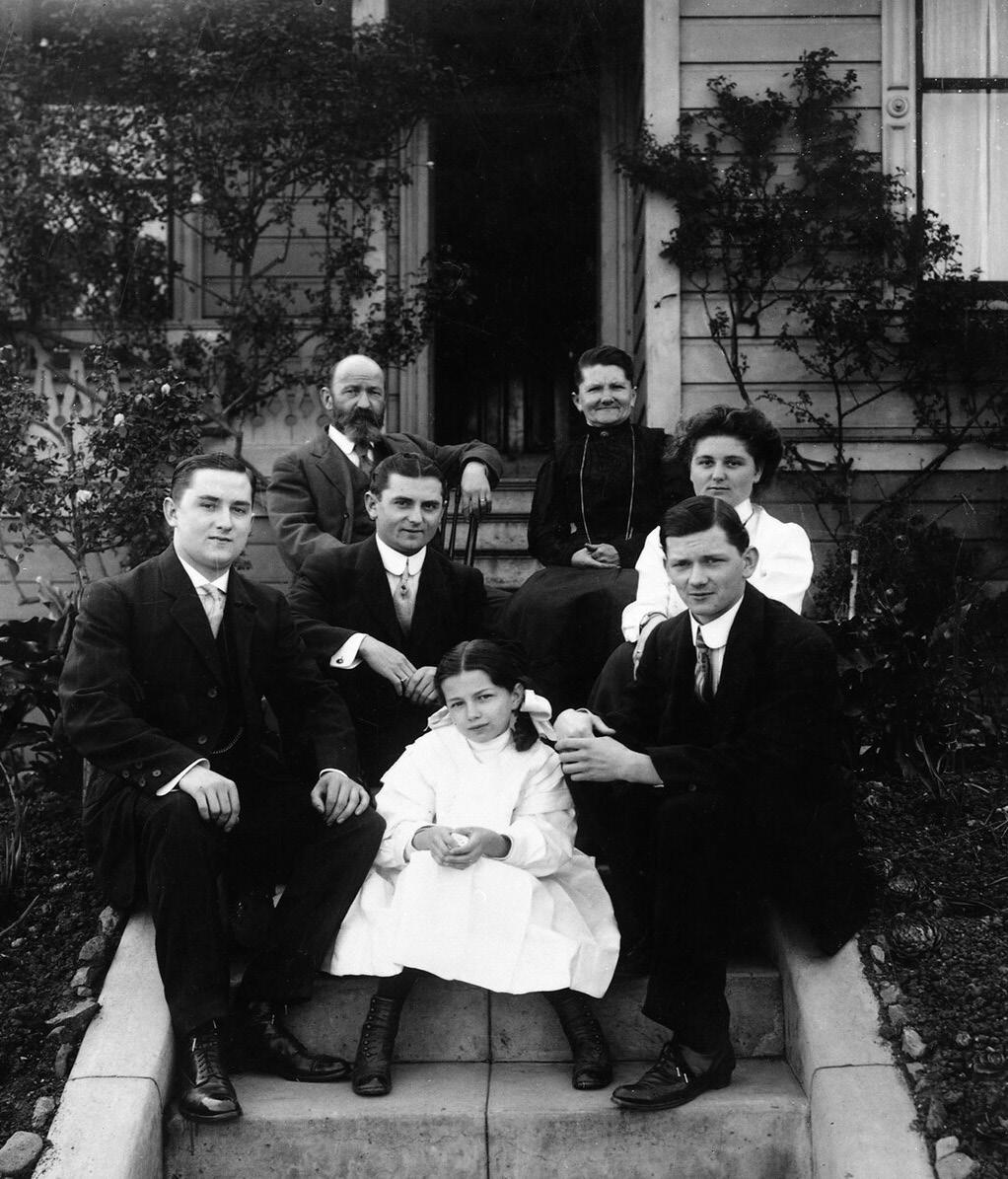
By JULIAN MICHAEL CALDWELL
Special to the AmNews
Six writers gathered for a writing workshop by award-winning actress and accomplished author Denise Nicholas are featured in the workshop’s debut collection of stories called “A Gathering of Voices.” The book, which was released in March, opens with a foreword written by actress Phylicia Rashad, and chapters written by the diverse group of writers in Nicholas’ workshop. Among them are fellow actress Hattie Winston, former bookstore owner Denise Billings, television and film producer Charles Floyd Johnson, retired anesthesiologist Otto E. Stallworth Jr., MD, and GW Williams, who retired as an assistant general manager for supply chain services with the Los Angeles Department of Water and Power.
With an acting career spanning nearly four decades, Nicholas, 80, is known for TV shows like “Room 222” and “In the Heat of the Night”, and films like “Let’s Do It Again.” In 2005, she released her debut novel “Freshwater Road”, which earned critical acclaim from the likes of The Washington Post and The Chicago Tribune. While searching for inspiration for another book, Nicholas launched the Longwood Writers Workshop out of her Los Angeles home in 2018, and continued to host the group every two weeks until the COVID–19 pandemic in 2020.
“I was having trouble getting started on a new project myself, and I had been in a really great workshop, as some years ago my book ‘Freshwater Road’ came out of a workshop,” Nicholas explained in an interview with the Amsterdam News. “So I thought maybe if I set up a workshop for myself and bring people in who are interested in longform fiction or memoir, it would give me a boost as well.”
To gather the other five writers, Nicholas began reaching out to people in her Los Angeles social circle she knew had expressed an interest in writing. Most of the

other participants had little to no formal writing training when they started meeting. For a few involved, “A Gathering of Voices” is their debut as published authors.
“My original thought was that I needed it for my own sense of balance and forward progress, and I got that from it in addition to the fellowship that we shared,” Nicholas said. “We had some great times together. We’ve consumed quite a bit of champagne, and we have talked about everything but writing sometimes.”
Shortly before joining the workshop in 2018, Otto E. Stallworth Jr., MD took writing courses at UCLA after his retirement from anesthesiology. It was a way for


Stallworth, now 79 years old, to revive an interest in writing that first started to grow while he was an undergraduate student at Howard University, before he began his 45-year medical career.
“When I faced retirement I was trying to figure out what to do, and I have a cousin who’s a neurosurgeon and he said the best thing to do is pursue something that you haven’t done before,” Stallworth said.
Stallworth’s memoir, “Are You A N****r Or A Doctor?” was released as an ebook and audiobook in December 2022, making it the first book to come out of the workshop. In it, Stallworth’s humor shines through as he details the first 40 years of his life, including
a sometimes difficult upbringing in Birmingham, Alabama during the 1950s and ‘60s. “A Gathering of Voices” features four chapters taken from the memoir, which takes its title from an actual question Stallworth was asked in his early twenties, a moment he wrote about during one of the first workshop meetings.
“I went to an all-Black elementary school, high school, predominant[ly] Black college, predominantly Black medical school, and then I went to an internship in Ohio, and I was the only Black doctor among 35 other residents and interns,” Stallworth explained. “And I was asked that question by a patient. So that was
the first story I wrote because, how could I ever forget that?”
Three of the chapters in “A Gathering Of Voices” are written by Nicholas herself. They include excerpts from “Freshwater Road” and her memoir “Finding Home,” which is scheduled to be released in November, and a chapter from a novel she’s still developing called “Willie and Iona.”
Nicholas’ “Finding Home” chapter, titled “The Sea That Takes You,” details a road trip she took with family in 1975 that illustrated how success as a celebrated access didn’t shield her or her travel companions from everyday prejudices experienced by Black women. While “A Gathering of Voices” includes some fiction, the majority of it is nonfiction, with writers drawing directly from their own life experiences for inspiration.
“We shared very personal things at the table, there were tears, there was laughter,” Nicholas said. “The work brought those emotions to the surface, and that’s precisely what we needed to do.”
“Some of the stories are funny, some are traumatic, but I think you’ll see that none of us have gone through life without some kind of adversity,” Stallworth added. “And in spite of that adversity we have pushed on.”
Stallworth is working on a fictional murder mystery book, and also plans to write a second part of his memoir to cover his life since turning 40. Billings released her debut book, “Road Trip: A Memoir” in 2023 and has more books in the works. Winston, who was a regular on the TV show “Becker,” also has a book she’s aiming to get published.
“A part of me is shocked that it’s come as far as it has,” Nicholas said. “I think it’s beautiful. I think generally people have these experiences that, if you’re not a writer, you push them to the side and you carry on with your life, but we have to exploit those experiences.”
“A Gathering of Voices” is available online via Barnes & Noble and Amazon and at longwoodwritersworkshop.com.

By HERB BOYD Special to the AmNews
On the seventh floor of the Museum of Modern Art, there is a massive collection titled “Jack Whitten: The Messenger.” It takes several large galleries to showcase Whitten’s prodigious talent and craftsmanship, to say nothing of his versatility and innovations. We have profiled Whitten (1939-2018) in our pages before, most notably when he died, just as he was completing his final work of art, “Atopolis,” composed of thousands of glittering tiles. He called the invented process “acrylic tesserae” which he created by taking slabs of dried acrylic paint, laying them out and then slicing them into various squares using a razor blade.
Whitten possessed a boundless ingenuity, and when he couldn’t find the tools he needed to express his imagination, he created them — like the huge wooden T-frame tool he used like a giant squeegee that he called a “developer,” to spread his paint across a strip of canvas or linoleum. “The immediate urban environment of New York City provides the raw material of my paintings,” he said in his reflections at the end of the 300page book accompanying the exhibit, curated and published by Michelle Kuo. He also noted that “jazz, more than any other medium, continues to be the major influence on my work.” Several of those in-

fluences have pieces dedicated to them — Duke Ellington, John Coltrane and most notably Art Blakey, to whom he pays tribute to in naming the exhibit “The Messenger.” Along with an array of different artistic styles in the paintings, a few of Whitten’s sculptures and totems are on display. There’s one that is sure to capture your attention adorned as it is with computer chips, digital paraphernalia, topped with a clock keeping accurate time. Here and there among the objects, if you
know something of Whitten’s birth in the South, his father’s work in the mines of Alabama, and long residence in Greece, the chronology of his life is revealed. His political activism and participation in the Civil Rights Movement become evident in pieces dedicated to Dr. Martin Luther King Jr. and Malcolm X. His interest in physics, math, and quantum mechanics are other compelling elements of his multifaceted background, though much of that comes only after close inspection of the captions. All in all, it’s quite an astonishing overview of Whitten’s remarkable career, an artist determined to explore the interstices between the gesture and the grid, to expand the definition of abstract expression, and forge his own concept of originality. But as he said at the close of the coffee table-sized book, “I am ultimately only interested in painting that goes beyond the notion of self. The self is a mirage designed by nature to prevent us from penetrating its secrets. This is why I like science. In the physical sciences, we must learn to circumvent the self in order to discover the root of being. There is no place for narcissism in painting except for illustrational fantasies.”
Try to find a moment in your busy schedule to take a break and witness the amazing work of a genius. It’s at MoMA until August 2.
Continued on next page
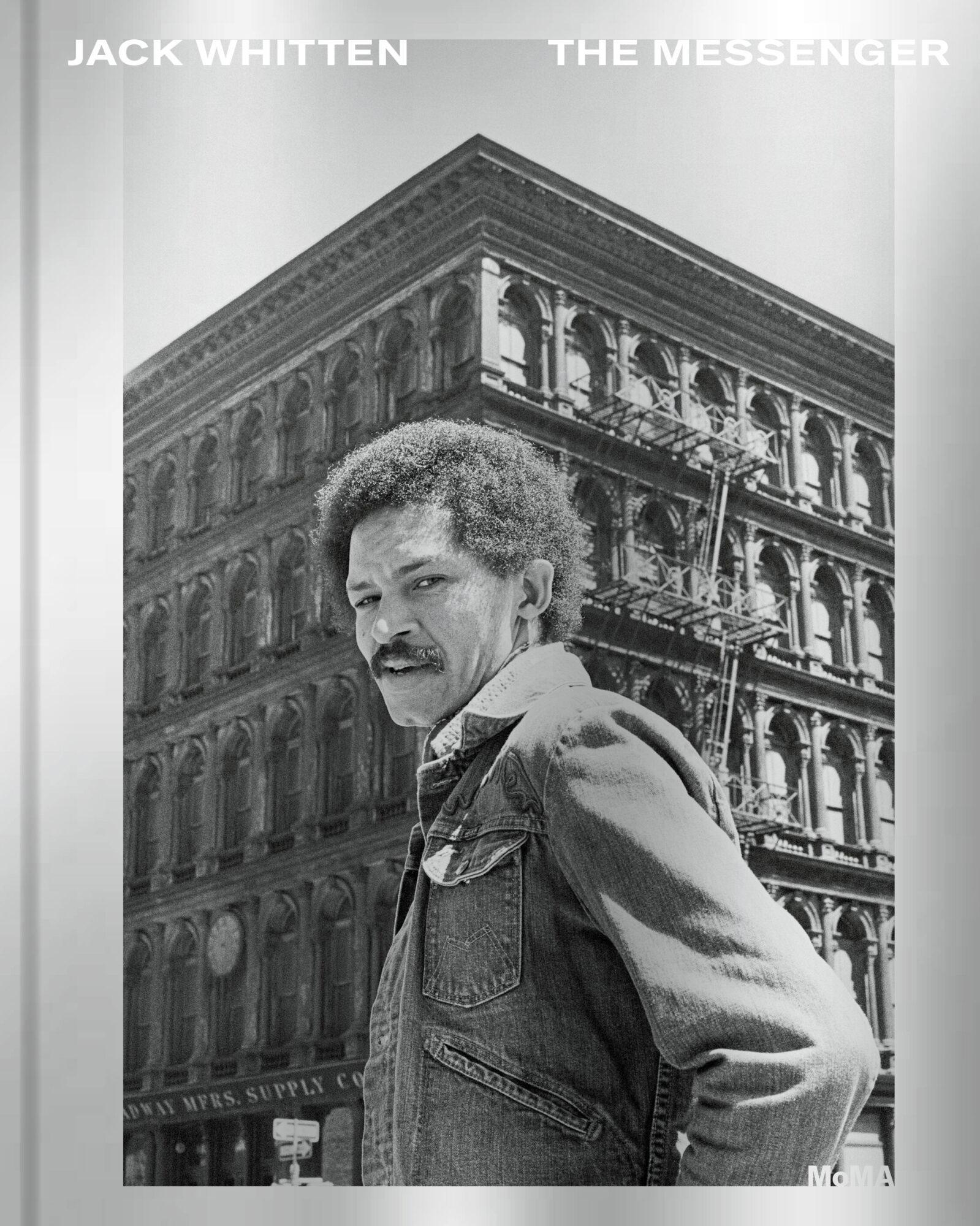

9.6”
Jack Whitten. Black Monolith VII, Du Bois Legacy: For W.E. Burghardt. 2014. Acrylic on canvas. 84 × 63 × 4″ (213.4 × 160 × 10.2 cm). Collection of Charlotte and Herbert S. Wagner III. © Jack Whitten Estate. Courtesy the Estate and Hauser & Wirth. Photographer: Genevieve Hanson.

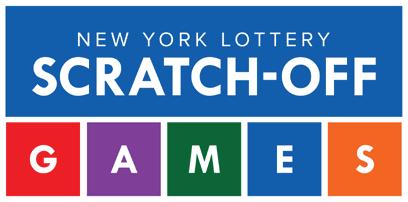



By MAGRIRA Special to AmNews
It is our duty to make sure that our “his-story” is preserved and shared in everything we do as a community. So the documentary “Number One on the Call Sheet” is an important piece of film and, in my humble opinion, necessary viewing.
Here’s why: In the last decade, a steady stream of documentaries has revisited the long, winding story of Black Hollywood — sometimes celebratory, sometimes instructive, and often both. From “They’ve Gotta Have Us” (2018) to Elvis Mitchell’s meticulous “Is That Black Enough for You?!?” (2022), audiences have shown an unrelenting appetite for these cultural deep dives. That enthusiasm makes sense. The contributions of African American artists to film and television are monumental, and the desire to see that legacy properly honored remains strong.
The latest entry in this growing canon is “Number One on the Call Sheet,” a two-part Apple TV+ documentary event. The project is divided into two films— “African American Leading Men in Hollywood,” directed by Reginald Hudlin and produced by Jamie Foxx and Kevin Hart, and “African American Leading Women in Hollywood,” directed by Shola Lynch, with executive producers Angela Bassett, Whoopi Goldberg, Viola Davis, and Halle Berry. All of them appear in the film, alongside a constellation of more than two dozen African American A-listers. From the outset, the project promises both star power and insight. And to some extent, it delivers. Tracing the trajectory of African American stardom across decades — from Blaxploitation to ’90s romantic comedies and into the current era of superheroes and prestige dramas — the documentary offers a greatest-hits timeline of triumphs in African American cinema. The films honor icons like Sidney Poitier, Harry Belafonte, Hattie McDaniel, Halle Berry, Eddie Murphy, and Whoopi Goldberg, placing their careers in conversation with a newer generation of stars: Denzel Washington, Will Smith, Viola Davis, Michael B. Jordan, Daniel Kaluuya, and more. The archival footage is rich. The
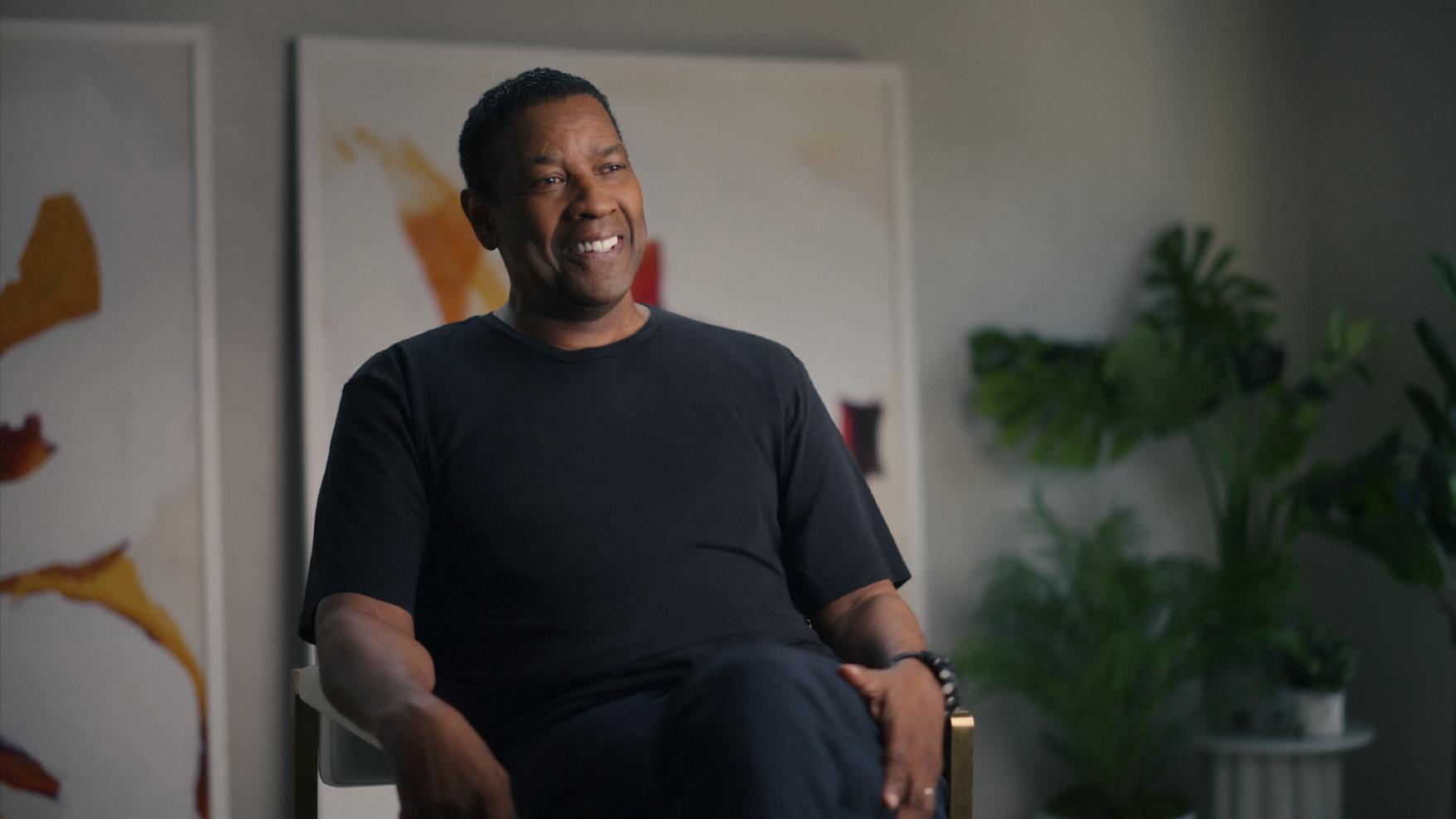

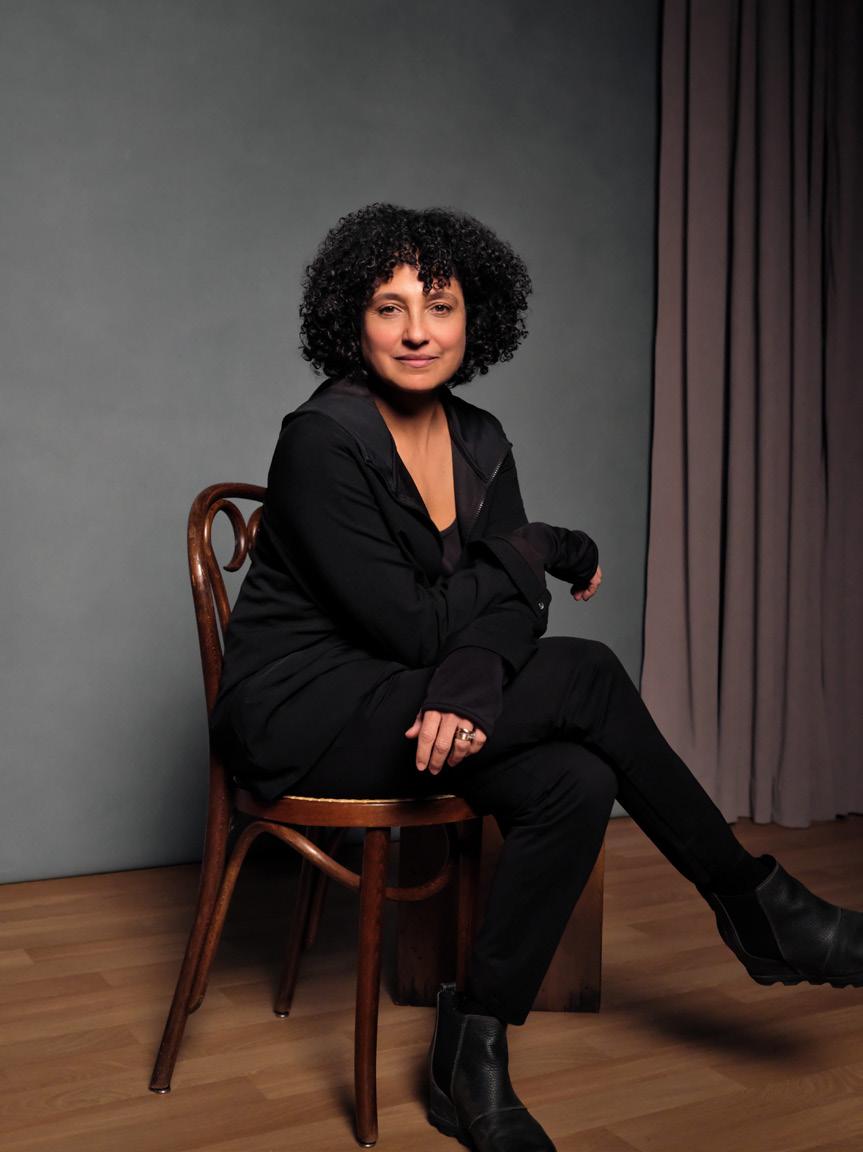
contrast, shrugs off the vanity of it — recalling that he wasn’t even the top earner on “Carbon Copy,” despite being listed first.
This tension — between symbolic visibility and real power — flashes throughout the film.
Taraji P. Henson, speaking tearfully about pay inequality during press for “The Color Purple,” offers one of the few jolts of raw honesty about how hard won these roles remain, even at the highest level.
It’s in these quieter, more introspective stretches that “Number One on the Call Sheet” finds its footing. Halle Berry, still the only African American woman to win the Oscar for Best Actress, delivers a gut punch of reflection: “Did it matter? Did it change anything for women of color, for my sisters, for our journey?” The film cuts from her remarks to the 2021 Oscars, where both Viola Davis and Andra Day were up for Best Actress — only the second time in history that two African American women were nominated in the same year — and both lost.
Part 2 comes closest to delivering the kind of depth the title implies. Don Cheadle notes that being number one is about more than lines or screen time — it’s about setting the tone for everyone else. Ruth Negga adds, tearfully, “You’re always aware, as a woman and as a woman of color, it’s not just about you … there’s a generational thing happening here.”
That’s the heart of the story. And the documentary finds it — just not consistently.
The film reminds us just how far African American Hollywood has come, hard-earned, inch by inch, and yet, it’s still nowhere near the level of opportunity or recognition that their white counterparts receive. Once again, the award for mediocrity is on full display.
interviews are candid. And the reverence is well-earned.
But for a project with such a loaded title, “Number One on the Call Sheet” only occasionally leans into its most promising thematic territory — what it really means to be an African American star occupying the top spot in an industry that wasn’t built for you. The cinematic phrase itself —
long associated with Hollywood’s most bankable stars — carries a specific weight. But in this documentary, it’s treated more like a prompt than a framework.
Alfre Woodard, in one of the film’s sharper moments, says it plainly: “A whole lot of the dominant culture arrives as No. 1 on the call sheet. But we [African American women] seldom do.”
The remark lingers. But the documentary doesn’t stay with it long enough to give it full shape.
To be fair, Part 1 of the documentary makes an early attempt to define the phrase, as Foxx, Smith, Elba, Kaluuya, and others reflect on its meaning. “It’s a magic moment for most actors,” Idris Elba says. Ice Cube compares it to hitting the lottery. Washington, in
The Hollywood model is beyond broken. It continues to treat our communities — including Latinos, South Asians, Asians, and others — with such blatant disregard, it’s hard to even talk about. Because it’s right there. In your face. And perhaps the most disheartening part? It’s still happening in 2025, with no sign — none — of real change.
“Number One on the Call Sheet” is now streaming on Apple TV+.
By KAREN JUANITA CARRILLO Amsterdam News Staff
The Brooklyn Academy of Music (BAM) will host a new series of Sudanese films from April 25 through 30.
The series, curated by Yasmina Tawil, examines the development of Sudan’s cinematic history from colonial times, through independence in 1956, to periods of political instability and censorship.
The BAM showcase includes screenings of various films, such as the retelling of the legendary 19th-century love story “Tajouj” by Gadalla Gubara (1977), the documentary “Khartoum Offside” by Marwa Zein (2019) which follows the journey of women who courageously challenged Islamist authorities while trying to establish Sudan’s first women’s national soccer team, and “You Will Die at 20” by Amjad Abu Alala (2019), which portrays the life of a young boy who has been told that he is destined to die young and how fate and fear determine how he lives his life. The visual poem “The Dislocation of Amber” and “Tigers Are BetterLooking,” two rare works by poet, painter, and filmmaker Hussein Shariffe, will also be shown, accompanied by the songs of Abdel-Aziz Dawoud.
For more information on the BAM’s Sudanese Cinema festival screenings, visit www. bam.org/film/2025/sudanese-cinema.

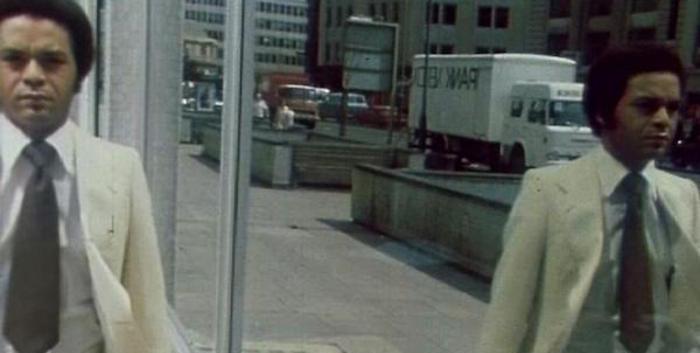

Just in time for some new summer music, Tamar Braxton returns with “You on You,” a signature anthem for the ladies. The Grammy-nominated songstress/songwriter’s longawaited new single comes in advance of her forthcoming EP, set to release in the summer. “You on You” is currently available on digital platforms and is already making an impact on radio. Tamar will join her mother, Ms. E, on the “Jennifer Hudson Show” on April 25 to promote their CLEO TV Show, “Cooking Sessions with Tamar & Ms. E” ........
Comedienne/actress Tiffany Haddish hosted the 29th Annual FGI Rising Star Awards, which were held April 16 at 583 Park Avenue on Manhattan’s Upper East Side. Bella Magazine was on the red carpet at the starstudded luncheon and awards ceremony. The former president and CEO of Hermes America, Robert Chavez, received FGI’s inaugural Lifetime Achievement Award........
Martin Lawrence turned 60 on April 16. At the party, Doug E. Fresh gave the actor a tremendous rap tribute, telling Lawrence, “You’ve been blessing people for so long, I don’t really think people know the soundtrack of your life,” as the crowd shouted ,”Turn it up,” to the Jackson 5’s “I Want You Back.”

Meanwhile, almost 30 years have gone by, and a “Martin” spinoff co-created by Lawrence himself, will soon hit BET+. Comedian Tommy Davidson will reprise his “Martin” role of Varnell Hill .......
Katt Williams returned to his Ohio roots on April 19 to perform and get a section of Reading Road in Avondale renamed in his honor. City leaders unveiled an honorary street sign at the intersection which now reads “Katt Williams Way.” Katt was born in Cincinnati, but grew up in Dayton, Ohio. .....


By MAGRIRA Special to the AmNews
I continue to root for the success of Netflix’s “Survival of the Thickest,” led by the incomparable Michelle Buteau, who doesn’t just star — she owns every moment. As Mavis Beaumont, she delivers a performance bursting with self-love, flaw-filled charm, and undeniable main character energy, all with a sassy wink that makes her irresistible.
Season 1 ended with a bold leap: Mavis, still recovering from her long, complicated relationship with Jacque (Taylor Selé), took a literal and emotional flight — straight to Rome, to pursue something new with the deeply devoted Luca (Marouane Zotti). A swing that big could only land in one of two ways, so Season 2 opens with Mavis standing at Luca’s doorstep, heart in hand, nerves rattling like a cat on a rooftop in a windstorm.
Luca, however, hasn’t forgotten the heartbreak, and honestly, who could blame him? Mavis is gloriously messy, emphasis on the M. She admits it, wears it, and stirs up tension the moment she arrives. Her attempt to win Luca over includes a food-fueled charm offensive: grocery shopping at Roman markets, savoring her first gelato (a life experience we all should have), and trying to cook her way back into his heart.
Winning over Luca’s tight-knit circle, though, proves harder than learning Italian. His sister Gabriel-
la (Monya Tebji) isn’t convinced, and thanks to Google Translate, Mavis finds out exactly how much skepticism is in the air. Still, with the support of her best friend Marley (Tasha Smith), who reminds her that she’s “too cute, too beautiful, too special to be putting up with any of this bullshit,” Mavis presses on.
After a picturesque day touring Rome, Luca decides to trust his gut — and breaks it off. Another heartbreak for Mavis. Yet, it isn’t a defeat. Her effort to fight for love, despite the risk, reaffirms her growth and selfworth.
Buteau’s performance makes all of this work. Few actors could make a character as flighty and chaotic as Mavis feel this grounded, this real, and this lovable. That’s the brilliance of “Survival of the Thickest”: It invites us to watch a woman stumble, fall, and rise again — flawed, funny, and completely herself.
Season 2’s eight episodes are deeply satisfying, especially the finale, “It’s Not a Mo’ment, It’s a Movement, Bitch.” It’s a reminder that Mavis is not the typical leading lady. She’s thick, fierce, and fully embracing herself. Perhaps most importantly, her body is far from the most interesting thing about her.
This is Michelle Buteau’s second moment — and we’re lucky to witness it.
Michelle Buteau’s “Survival of the Thickest” Season 2, now playing on Netflix.
By LINDA ARMSTRONG Special to the AmNews
“The Last Five Years” playing at the Hudson Theatre on W 44th Street runs 90 minutes, no intermission, but it felt substantially longer as one suffers through Nick Jonas’ untrained, non-projecting vocals and his attempts at acting.
The new musical — with book, music, lyrics, orchestrations, and arrangements by Jason Robert Brown with Noah Kieserman and Nasia Thomas — gives us a doomed relationship at the breakup moment and then takes us back to find out why Jamie and Cathy’s marriage did not last. Jamie, a book writer, poorly portrayed by Jonas, is married to Cathy, played by Adrienne Warren.

The story is told only through song as the two characters trade off moments of performing numbers addressing their relationship, which was destined for failure, much like this musical. Watching Jonas transition between notes, the strained look on his face, the blatant facial gestures, and the fact that I kept wanting to shout “Project!” made experiencing this musical quite unpleasant. There was one moment during his lackluster performance when even the audience was not sure if it was time to clap. As he finished a number, the entire theater was silent until someone finally realized the song was done. Then suddenly, the beginning of clapping was heard; nothing too loud though.
Jamie, a self-centered book writer is married to Cathy, a
Black actress who is struggling to find work and feels unseen by her successful husband. Warren has a voice that captures the audience’s attention, but I truly found the material not worthy of her vast talents. For a musical, there are no showstopper numbers. The musical has awkward choreography by Jeff Kuperman and Rick Kuperman. The last time that I saw Whitney White’s directorial work on Broadway was with the stunning production “Jaja’s African Hair Braiding” and Off-Broadway with “Liberation”, so I was severely disappointed by this production. I hope she is given an opportunity to direct material worthy of her talents. When I go to a Broadway musical, I just expect to be dazzled, engaged, and emotionally involved, but with this production I was not invested in any way. I could only feel relief at its completion and disappointment for what I had just had to endure.
By LINDA ARMSTRONG Special to the AmNews
Ryan J. Haddad is completely vulnerable, funny, candid, vivid, sensitive, and graphic about his first sexual encounter in his oneman show “Hold Me In The Water,” playing at Playwrights Horizons in The Judy Theater on W 42nd Street. He will touch your heart and soul as he performs this piece that he has also written, where he bears his insecurities, his disability, his joys, and his disappointments. A gay man with cerebral palsy, Haddad, who utilizes a walker, has known a very lonely life. In this production, he gives graphic descriptions of the sexual encounter he had with a man with whom he instantly fell in love on sight.
Sitting in the audience, you automatically realize that Haddad is a phenomenal storyteller who immediately engages his audience. He is also a very sensitive and accommodating person. He lets the audience know that the theater has been set up to accommodate people with disabilities; there is captioning and audio descriptions and an ASL-interpreter; the theater lights are dim; and he encourages people to go to the bathroom if they need to during the show — but no one moved.
As Haddad shares his story

with us, you feel like you are in a room with friends, and you are all amused, entertained, stunned at times, but also touched and very sympathetic to the plight he faces every day due to his disability. It is notable how actions most of us take for granted are quite a big deal for Haddad, things like walking on stairs. As he talks about being with a group of people and being the only disabled person, which limits his participation in activities with them, you realize
a bit of his reality. When he talks about the man he is attracted to, it is marvelous to hear him speak with such innocence as he wonders about the man reciprocating his attraction. As a disabled person, doing things like going to the beach with a group of people, walking in the sand, and going in the water are not simple feats, but doing this with someone assisting you, lets these actions take on a different meaning. It warms the heart to have someone’s insecuri-
ties fade as they experience a new friendship, a new touch, a new emotional awakening, and that is what Haddad experienced. His story, his energy, and his commitment in telling this true experience, constantly being vulnerable with the audience, and not hesitating to share his most humiliating, insecure moments with such deep emotions will leave you moved. While he graphically describes his sexual encounters with this man, he does so to
share his gratitude that he finally got to experience love. Haddad makes sure that the audience realizes that love is not something that is always part of the life of a person who lives with disabilities. While you have the opportunity to hear his personal story of first love and learn the outcome of that experience, you also have a chance to realize that everyone deserves to be loved. Everyone needs to be loved, even if it’s only once in a lifetime. You will leave the theater knowing that Haddad shared his innermost emotions with you in a gracious, generous, thoughtful way, and you will appreciate his creating this stunning piece of theater.
Danny Sharron brilliantly directs Haddad for an experience you will never forget. With this show, on the technical side, less is more. Scenic design is by dots, costume design by Beth Goldenberg, lighting design by Cha See, and sound design by Tosin Olufolabi.
“Hold Me In The Water” will educate you about the plight of this disabled man, but you will also witness his special gift to go past his pain and create beautiful, intoxicating art. The production will only run through May 4, so make plans to see “Hold Me In The Water.” Visit www.playwrightshorizons.org for more info.

The Jazz Gallery (TJG), located at 1158 Broadway, is celebrating its 30th anniversary, a big deal in a metropolis like New York where storied jazz clubs reign supreme. Since its inception in 1995, TJG has remained in the forefront as a jazz instigator, introducing emerging and established artists whose boundless music swings far beyond floating clouds.
During this celebratory year, The Jazz Gallery will celebrate with its gala on April 28 and special anniversary concerts on April 25-26, a Homage to Jazz Cubano Series featuring Caracas Trio with special guests, saxophonist Yosvany Terry and trumpeter Michael Rodriguez.
TJG’s co-founder Dale Fitzgerald presented the first New York performance by Cuban jazz pianist/composer Chucho Valdes in 1996 at 290 Hudson Street, the nonprofit organization’s original location. It foreshadowed a “Jazz Cubano” series in 2000 that featured original music by a cohort of musicians from Cuba, West Africa, the Caribbean, and Central American countries, who are contributing to this 21st century trans-Atlantic jazz exchange.
Anniversary concerts to follow include The Trio with Threadgill, Iyer, and Prieto on May 30-31 with saxophonist, flautist, composer and Pulitzer Prize-winner Henry Threadgill, a longtime TJG supporter and performer. Pianist and composer Vijay Iyer and drummer Dafnis Prieto were beneficiaries of TJG residency commissions. And on June 11-14, another supporter and Pulitzer Prize-winning Tyshawn Sorey will perform.
In an effort to relieve his thirst for jazz, Fitzgerald resigned from his academia tower armed with his doctorate in anthropology, and eventually became business manager for trumpeter and composer Roy Hargrove. In 1992, he leased a practice and rehearsal space for Hargrove at 290 Hudson Street in Greenwich Village which morphed into an experimental nonprofit cultural center cofounded by Fitzgerald and WBGO On Air Host Lezlie Harrison. They combined jazzinfluenced visual artwork, photography, and creative music into one colorful collage to be experienced as a whole.
“The Jazz Gallery has grown into an international hub — a home for artists from all over the world to collaborate, connect, and share their stories,” said Harrison. “Jazz has always been a global language, and today, when artistic risk and cross-cultural dialogue are more important than ever, The Jazz Gallery remains a vital part of shaping what jazz can become.”
With early growing pains by 2000, the Gallery made a transition to weekly live
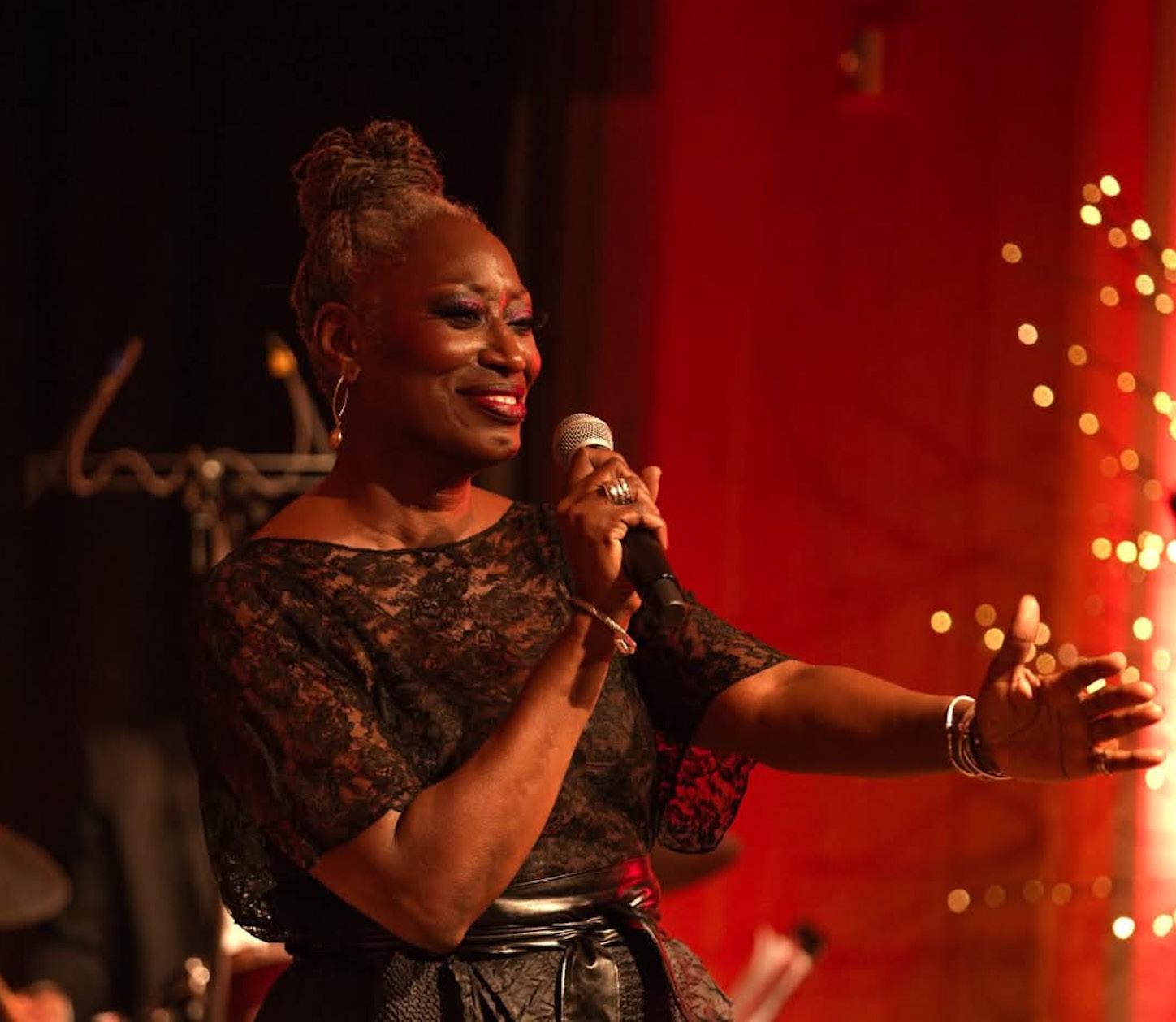
music (every Thursday, Friday and Saturday with different artists each night).
“Unfortunately, the large pool of highly talented young musicians in this city don’t have many venues to perfect their craft and develop an audience,” said Fitzgerald in his bellowing baritone voice during an interview with this AmNews writer in 2006.
“This was a great opportunity for us [Rio Sakairi, artistic director and Lezlie] to seriously work with and promote some wonderful artists.” He proudly pointed out the organization’s role in the fledgling careers of pianist Robert Glasper, alto saxophonist Jaleel Shaw, and trumpeter Ambrose Akinmusire, among others. During that interview, the Gallery walls were lined with Isabel Chicquor’s photography exhibit titled “Delirious Rhythm/Ritmo Delirioso,” a photographic essay of Cuba’s music and dance. “Jazz is an international music and I look at the world as an anthropologist,” said Fitzgerald (who died in 2015). Today, TJG has expanded its artist-in-residence
opportunities, composition commissions, mentorship programs and inexpensive rehearsal facilities.
I remember those days at 290 Hudson. Upon opening the entrance door, you were faced with a long steep flight of stairs that seemed as though you were about to climb the staircase to heaven. Well, the climb was worth it — the music, the exhibition, an opportunity to chat with musicians. There was only a tall black curtain separating the performing artists’ dressing room from the audience. The capacity of 75 made for a warm friendly atmosphere. And of course, everyone seemed like they were seated in the first row and there was not one bad seat in the house (folding chairs and benches)! It was the place where I first experienced the Roy Hargrove Big Band with singer Gretchen Parlato. A young Lezlie Harrison, whose sultry voice was a mainstay on that tiny stage, had already enticed a cult following that has since escalated into an international fanfare. My joy was extended further by seeing
Dr. Lonnie Smith and Peter Bernstein, Jonathan Blake, the young saxophonist Marcus Strickland and pianist James Hurt. “This is a great place because they’re open to musicians who are just starting out at the bottom of the barrel,” said Strickland in 2006. “And people that come here are into the music.” Patrons immediately notice the absence of clicking glasses or servers scampering around with orders and having to endure that mad dash at the end of each set to collect cover charges. At TJG, patrons are free to just enjoy the music, with no cover charge or harried servers! TJG, located in Manhattan’s Flatiron district since 2012, boasts a duplex venue (on the 5th floor) with a small bar serving soft drinks and wine in a hip Art Deco lounge and its walls are consistently decorated with current exhibitions of artwork or photography. Drinks are allowed in the comfortable music room one flight up.
Continued from page 3
Reatl threats to relocate or Wall Street’s bull?
Critics for reinstating the Stock Transfer Tax fear the bill will drive the city’s financial heart toward other states, just as they did in 1905, but technological advancements mean less dependence on physical exchanges and colored jackets than back then.
“The fact [is] that things aren’t done by exclusively physical paper slips being handed back-and-forth between traders on Wall Street,” said Patrick Oreki, director of state studies at the Citizens Budget Commission. “And the fact that you can potentially just move where the computers are running transactions makes it that much more mobile of an industry.
“Plus, on top of that, every other reason that a lot of firms are choosing to expand in other places like Texas — which has picked up a big amount of financial services activity — would just be another straw on the camel’s back to encourage financial services to move elsewhere.”
A Wall Street exodus would probably play out in a slow bleed rather than an immediate mass exit, according to Oreki. He said the Texas Stock Exchange, which is currently getting off the ground in Dallas, would lure stock traders to the Lone Star state. While exchanges in the United Kingdom and Hong Kong already tax stock transfers, New York would be the only U.S. state with such a policy if the rebate is repealed.
Oreki also argued that the potential of pushing out the biggest stock traders could jeopardize existing state tax revenue from the financial sector. State Comptroller Tom DiNapoli reported Wall Street contributed $19.4 billion to the state budget, which makes up around 19% of total tax collections. Most of the money stems from income taxes.
However, Henry is willing to play a game of “chicken” with Wall Street to fund the city’s various needs, pointing to power grid and climate change issues in southern states. “It’s a culture, and the corporations that have registered in New York to be traded on the stock exchange have gone through a lot of vetting to be listed on the stock exchange,” he said. “It’s not an easy process … there’s a real advantage in having the cluster of all the different interest groups that are located in major cities. New York is the poster boy for that model.”
“Greed vs. Need” movement grows
Steck told the Amsterdam News he believes his bill will need a movement to pass. He, Sanders, and Rogers will take to Wall Street this Wednesday, Apr. 23, outside the old JP Morgan building across from the stock exchange.
“We’ve got to get a movement [that is] what will support it,” said Steck. “And it takes overlooking lobbying efforts of various kinds by the securities industry.”
Rogers remains no stranger to taking on herculean challenges through his person-
“We looked at how our taxation system is very unequal … everyday people, if we go to the grocery store and buy ramen noodles, we have to pay 8 cents on the dollar.If we go to Wall Street, we get a free pass if we’re trading Coca-Cola stocks. I have to pay tax on Coca-Cola at the store, but not if I trade its stock.”
—Rashida Tyler , New York State Council of Churches and Interfaith Affordable Housing Collaborative.
ally coined “corporate campaigns.” “There’s only one way to confront power, and that’s with power,” he said. “You have to put together a vehicle of power, which I called a corporate campaign … it has a real body of thought and expertise behind it.”
Some early proponents include Andy Morrision from the New Economy Project and Rashida Tyler from the New York State Council of Churches and Interfaith Affordable Housing Collaborative. Both will speak on Wednesday. Morrison pointed to economic racial justice for his support.
“People hurt most by our financial system and the economic crashes and the austerity that the financial system perpetuates are the same ones who’ve been systematically excluded — particularly [in] Black and Brown neighborhoods,” he said. “Generating revenue for schools and transit and housing and health care is critical at this moment, because those are the services and the public goods that routinely suffer disinvestment while these hedge funds pocket a rebate.”
For Tyler, supporting a Stock Transfer Tax would offer a “trickle down” for the roughly 7,500 congregations she helps represent. She pointed to declining church attendance in New York due to higher costs of living, while those same houses of worship face greater demands to assist with needs like food and housing.
“As people of faith, we are commanded to tackle these problems that are systemic and to try to find a solution, because you want every person in your state to live with dignity, to have access to those things [that] enable them to have a better future and to provide for their families and themselves,” said Tyler. “That’s basically the approach that we at the [New York State Council of Churches] take.
“We looked at how our taxation system is very unequal … everyday people, if we go to the grocery store and buy ramen noodles, we have to pay 8 cents on the dollar. If we go to Wall Street, we get a free pass if we’re trading Coca-Cola stocks. I have to pay tax on Coca-Cola at the store, but not if I trade its stock.”
Tyler hails from the “rapidly gentrifying” Kingston in Ulster County. She said residents in rural and suburban New York also face rising housing costs, along with a lack of reliable public transportation. The Stock Transfer Tax would also fund municipalities outside of New York City.
The long road ahead begins in Albany as the movement puts shoe leather to Wall Street this week. “We’re in a holding pattern right now with the governor,” said Sanders. “We are arguing over things that are not budget-related, and sooner or later
a breakthrough on those issues will occur.
“When they occur, there’s now a question of what’s left to speak about and the battle will heat up over these issues. And God willing, we will be well-positioned to win.”
Tandy Lau is a Report for America corps member who writes about public safety for the Amsterdam News. Your donation to match our RFA grant helps keep him writing stories like this one; please consider making a tax-deductible gift of any amount today by visiting https://bit.ly/ amnews1
Music and Joy
APRIL 5 AT 2:00PM
In partnership with Northwell Health and Mother AME Zion Church, these FREE music and wellness events offer workshops led by expert facilitators from Northwell Health, enriched with performances by NY Phil musicians and cultural partners.
FREE and open to the public on a first-come, first-seated basis. Mother AME Zion Church 140


A new bill backed by the NAACP and educators aims to overhaul how reading is taught before another generation of Black kids is left behind.
By QUINTESSA WILLIAMS Word In Black
Imagine a Black kid in California starting kindergarten this fall. They’re bright, curious, and, above all — excited about school. Their teacher may be nice enough but inexperienced or untrained in the science of reading. And by third grade, this child will likely be labeled “behind.”
By middle school, honors classes are out of the question. If this student graduates from high school, they enter a world where job applications, lease agreements, and even voting ballots are a struggle to understand. Years later, their own bright, curious child heads to kindergarten in another under-resourced classroom.
Only, this isn’t hypothetical. It’s an intergenerational reality. Education advocates say the fact that low-income Black K-12 students have the lowest reading proficiency in the state isn’t just a policy failure, it’s a civil rights issue, and it’s a crisis so entrenched that, at current rates, the state won’t close its racial literacy gap until 2070. This isn’t just a California problem, either. Standardized test scores nationwide show only 17% of Black fourth-graders are reading on grade level.
But a coalition of Golden State educators, civil rights leaders, and elected officials believe they have a solution.
Newly introduced legislation — Assembly Bill 1121 — would overhaul how California teaches reading by mandating evidence-based training for teachers, updated instructional materials, and consistent statewide strategies.
“This bill is different,” says Assemblymember Blanca Rubio, a former educator representing northeast Los Angeles County suburbs. “It’s time to cut out the systems that often write Black students off. It’s about giving them what they need.”
In February, she introduced AB 1121, which is co-sponsored by the NAACP California Hawaii State Conference, EdVoice, Families In Schools, and Decoding Dyslexia CA. The bill is supported by the Children’s Defense Fund of California, along with more than 35 other advocacy groups.
This is “a bill about Black students,” says Rick Callender, president of the NAACP CaliforniaHawaii State Conference.
(Jacob Wackerhausen / gettyimages photo)

what works — we’ve seen it work,” he says. “And if it can work in Mississippi, it can work in California.”
“If kids aren’t reading by third grade, they’re four times more likely not to graduate. And when Black kids don’t graduate, we know what happens — it’s a direct pipeline toward prison. This bill is about disrupting that pipeline.”
-Rick Callender, president of the NAACP California-Hawaii State Conference.
“Reading is not only an education issue — it is a civil rights issue,” he says. “If kids aren’t reading by third grade, they’re four times more likely not to graduate. And when Black kids don’t graduate, we know what happens — it’s a direct pipeline toward prison. This bill is about disrupting that pipeline.”
Tonya Craft-Perry, an educator and member of the Black Parent Network, says the connection between early literacy and incarceration is all too real.
“In both education and criminal justice, we know the data — if a child isn’t reading by third grade, the odds of them entering the system increase dramatically,” she says.
Even in her own classroom, CraftPerry saw Black students being left behind. “They weren’t at grade level.
And the system seemed OK with that — like it was normal for our kids to be the ones struggling.”
But can a single law undo decades of failure?
Like most states, California’s approach to teaching kids to read has been a series of experiments.
“The difference is that this bill is based on science, not guesswork,” Rubio says. “We’ve spent years bouncing from one literacy trend to another — what I used to call ‘program du jour.’ But nothing was grounded in real data. This bill is.”
Rooted in research-backed literacy practices, AB 1121 mandates that all K–5 teachers and school leaders complete training focused on how
students actually learn to read. California has already identified evidence-based reading instruction and materials as essential for teaching children to read, but Rubio says the state doesn’t have a cohesive implementation plan to enforce these policies.
The bill also requires schools to adopt evidence-based instructional materials and report on teacher training and curriculum compliance through annual monitoring and a statewide database.
“If we align instruction across the state, if we stop pointing fingers and start collaborating — we can do this,” Rubio says.
Callender also adds that Mississippi and Louisiana adopted similar strategies and saw their reading proficiency results skyrocket. “We know
Black Students Deserve More Callender believes the legislation could set a precedent for other states. “So goes California, so goes the rest of the nation,” he says. “If we can lead on reading proficiency the same way we’ve led on other civil rights issues, we’re setting the tone for what education equity can look like across the country.”
Passing AB 1121 won’t solve the Black literacy crisis alone. Rubio, Callender, and Craft-Perry all agree success requires collective care and effort from lawmakers, educators, families, and communities — and the belief that Black students deserve more.
Craft-Perry says parents also need to show up at school and advocate for their student — but doing that is easier if schools are welcoming. “Schools need to stop treating us like outsiders. If we want to prepare our kids for life, not just for tests, then this work has to happen hand-in-hand.”
And she hopes AB 1121 will send a different message — that California won’t wait until 2070 to do right by Black students. “Literacy is a life skill,” she says. “If this bill can create consistency and help our students feel safe, seen, and challenged, it could change their trajectory — not just in school, but in life.”
Bail reform requires community support and investment to ensure we continue to move towards a more effective, cost efficient and equitable criminal justice system.
One strong example of community support and investment that has shown tremendous results is Atlas, a community violence intervention that focuses on Functional Family Therapy. A partnership between United Way of New York City and the NYC Department of Youth and Community Development, this program has enhanced public safety by providing voluntary, noncourt mandated therapy and social work programs to youth and young adults through community-based organizations and therapeutic approaches to empower families and foster stronger communities in neighborhoods that have historically borne the brunt of violence and over-enforcement.
And the results are clear. 97% of participants who completed the violence intervention program do not have a violent felony rearrest.
We know that a thoughtful, data-driven approach that includes support in the community, like
participants’ chosen family, can deliver results that prevent populations from entering the criminal justice system in the first place, and dramatically drive down the number of criminal justice systeminvolved people who reoffend.
United Way of New York City, The Fortune Society, and the NYC Department of Youth and Community Development’s (DYCD) Office of Neighborhood Safety (ONS) have also recently launched Atlas HOPE, which aims to create a continuum of care for adult men most likely to engage in serious community violence and least likely to receive the supportive services necessary to end cycles of trauma and violence. Using an evidence-based model, Atlas HOPE is designed to serve men at the highest risk of community violence with long-term outreach, trauma-informed cognitive behavioral intervention, and transitional work opportunities.
The results of programs like Atlas are increased safety and stronger communities. This is the goal of the New York State Legislature, so it is clear that we must continue to invest in the programs that are already moving us in that direction.
To abandon the hard-fought progress we’ve made and instead chase the illusion of security of-
fered by harsh and unjust pretrial detention would be a profound setback. The exorbitant financial burden that comes with these draconian measures exacerbate the inequities of our justice system, making it harder for vulnerable individuals to access fair treatment. We must resist the temptation to revert to failed practices that have long been proven ineffective and damaging. To give up this progress and chase after the false sense of security and excessive cost that comes with inequitable pretrial detention would represent a major step backwards. Instead, we need to bravely continue to invest in programs that pave the way for productive community members who do not want to be judged by the worst thing they have ever done, crime victims who want the appropriate investments in their community, and community members and families that want to heal with dignity. This is how you keep communities safe.
Latrice M. Walker is the New York State Assembly Member representing the 55th District in Brooklyn. Grace Bonilla is the President and Chief Executive Officer of the United Way of New York City.

Continued from page 28
TJG is a place that welcomes experimentation and mentorship, especially for emerging voices who are pushing beyond tradition. That is the spirit that drives artistic director Rio Sakairi (who began in 2000). She possesses an uncanny intuitiveness that Horace Silver and Art Blakey had for spotting artists who were ready for the launching pad to ascension. Although in many instances TJG audiences are not always familiar with these artists, Sakairi dares to present these artists to TJG. “I don’t really worry about introducing emerging artists because I want The Gallery to be a safe space to experiment, to fail, to learn and grow from that. I think at this point after 30 years, people understand that, especially when we feature young musicians,” said Sakairi during a phone interview. “I’m trying to expand the audiences’ experience. They are looking for interesting and intriguing music. The key is variety and being challenged. I am having fun and I think if I

don’t do things to bring me joy, it’s not going to bring joy to anyone else. Music is my heart. To this day I don’t know what made Dale say to me ‘why not do whatever you want,’ and I was like really OK. That still resonates with me.”
The Jazz Gallery 30th anniversary celebration will continue throughout the year with special concerts and events for schedules and updates. Visit jazzgallery.org for more info.
By HEATHER M. BUTTS, JD, MPH, MA Special to the AmNews
Tchaiko Parris, MD is a breast radiology specialist in Green Bay, Wisconsin with over 20 years of experience. She is affiliated with Bellin Memorial Hospital. Dr. Parris spoke with the AmNews about breast cancer and early detection especially as it relates to risk factors for Black women. This conversation has been edited and condensed for clarity.
AmNews: Please tell us about your work?
Tchaiko Parris: I’m a diagnostic and Interventional breast radiologist. I’ve been on my own essentially since 2011 after completing a fellowship. I am in Green Bay, Wisconsin. Prior to coming here, I was in California and I was the Medical Director of Breastlink Women’s Imaging Temecula Valley/RadNet Temecula Valley. Before that [I was] in Pennsylvania at the Guthrie Clinic Hospital. I’m a big advocate for women’s health [and] women’s education. I believe that [people] can make the correct decisions [regarding] how to manage your body as long as we’re given the information, so I always like to empower women and talk to them about their breast health and if they have other questions . . . [then I say go talk to] your doctor.
AmNews: Could you talk about why the rates of breast cancer mortality are so much higher for Black women?
Parris: When it comes to breast cancer in black females, it’s complex and multifactorial on so many different levels. No one has come up with a clear-cut answer. Black women have more than 40% increased mortality rate than white women so although the incidence for developing breast cancer is about the same or slightly less than white women, [Black women] have a higher mortality rate and there’s research out there trying to address it.
You look at the disparities [and] whether secondary to healthcare issues, patients lack of insurance, lower income individuals that may not have the means … to get somewhere, to go get a screening, or they may not be able to take off from work [and] lose that income for that day-time period, whatever it is to go take care of their breast health, so they kind of put it aside. If I’m not feeling anything, if I’m not having any symptoms or pain, why go in and pay for this exam. One of the things that you have to do is to educate [individuals] because the more you educate them they’ll understand that this is a preventative tool. By screening you’re able to catch things early and … have a better outcome.
Young black females, so less than the age of 50, they even have a higher mortality rate than young white females who are in that same age category who are diagnosed with them. Young females come in with these aggressive tumors and these aggressive tumors [such as] triple negative … and they may not think that something is going on with their breast because you know … I’m young, how am I supposed to have breast cancer … it does not run in my family … no one in my family that I know of has breast cancer so why would I have it … by time they come in, it may be something that is at a later stage so now you’ve have lymphatic involvement or you may end up now with metastatic disease.
AmNews: Could you talk about long-term cancer screening programs?
Parris: My thoughts are that we need more. It starts with primary care because we are a sub-specialty. You [must] have the primary care doctors be the advocate. The primary care doctor can … send these patients to the appropriate programs that they need.
Now let’s say a patient shows up at my imaging facility. She is 45 so she’s over 40, she’s doing her screening mammogram and she checks off that she has a mother and a ma-
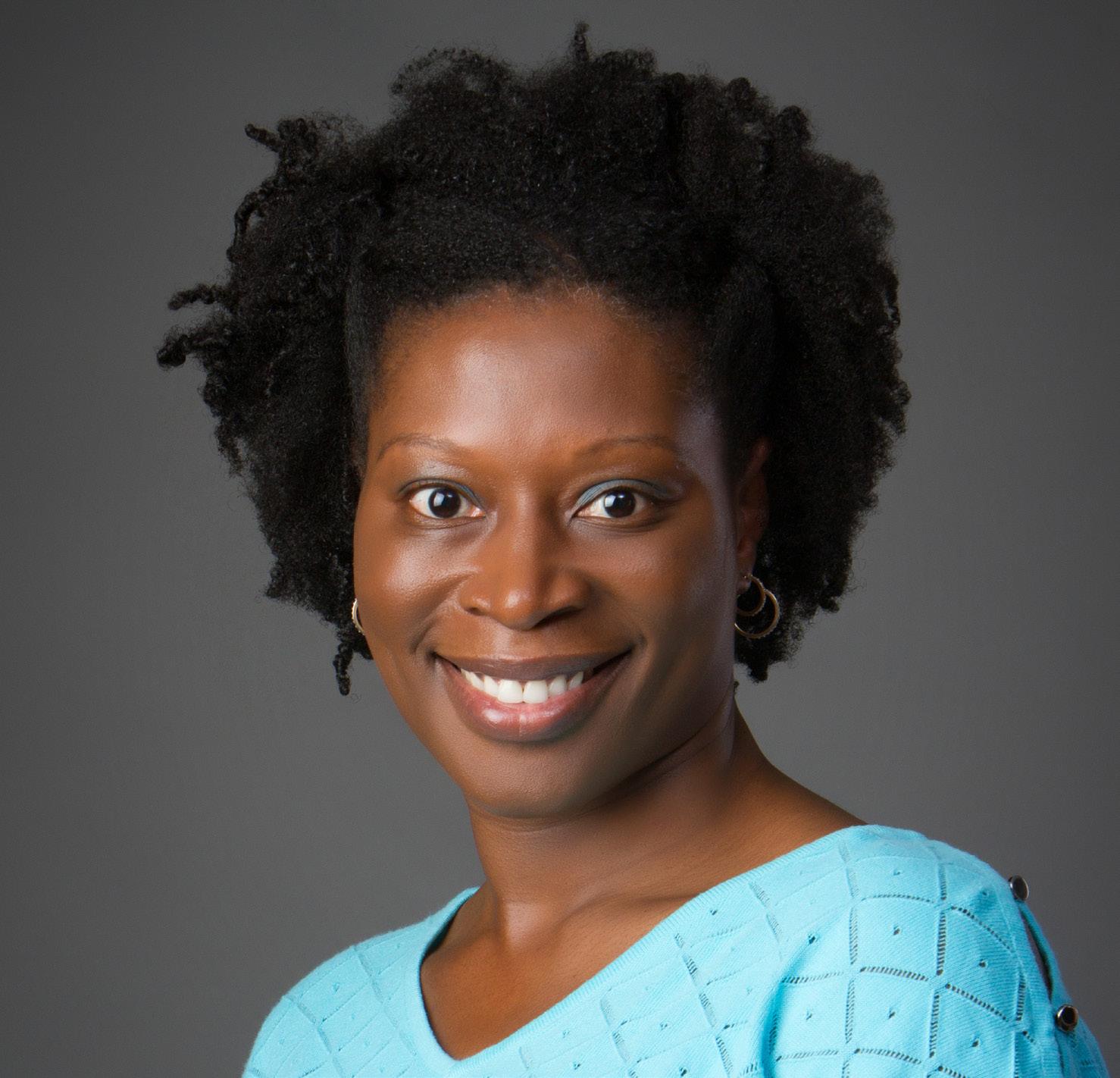
ternal aunt who were all diagnosed with breast cancer. Well, based on the age of that patient we recommend them to go into our high-risk clinic. When they go into the high-risk clinic what is done by the geneticist or the counselor is blood work to check for genetic mutations.
A risk assessment … is something that the American Cancer Society and American College of Radiology advocate for. At 30, all females especially African-American females should have a risk assessment done where you go in and you give as much information about your family history as you can because then what we do is we calculate something called the Tyrer-Cuzick Risk Assessment or IBIS Risk Assessment and if that score is over 20% then that means that this patient has an increased lifetime risk of breast cancer. Now that patient gets additional screening so she comes in on January 1 for her screening mammogram and it’s negative. Six months later she’s going to have an MRI because the MRI is a vascular based imaging study. It picks up cancers that are much smaller that might be more aggressive at an earlier time point before
she comes back later six months for her screening mammogram. What the research [shows] is that if you use vascular based imaging studies such as a breast MRI or contrast enhanced mammography, those are the two imaging studies that you’d like to utilize so in most high-risk clinics that’s what’s being done now.
AmNews: What final things would you like to tell our readers?
Parris: One of the key things that we have to stress is that there is no end date when a woman should stop having her mammogram. That’s one thing we must stress because we have a lot of elderly coming in … they used to have their mammogram every year and then they got to 74 or 75 and they say my doctor said I don’t need it anymore. The whole idea is that if you don’t have a comorbidity that will lead to a decrease in your life expectancy then you should continue to have an annual mammogram.
Visit www.health.ny.gov/diseases/cancer/ services or call 1-866-442-CANCER to find out more about free cancer screenings.
By SAMANTHA ARTIGA, DRISHTI PILLAI, JENNIFER TOLBERT, and AKASH PILLAI KFF NEWS
Confusion persists about immigrants’ eligibility for federal programs, with about half or more of U.S. adults and immigrants adults saying they are unsure or incorrectly believe that most immigrants to the U.S. are eligible to enroll in federal health insurance programs, including Medicaid, as soon as they arrive to the U.S. Eligibility for Medicaid and the Children’s Health Insurance Program (CHIP) is limited to citizens and certain lawfully present immigrants. Many citizens and lawfully present immigrants live in families with mixed immigration status, which may include undocumented immigrants. For example, 19 million or one in four children in the U.S. have an immigrant parent, including one in ten (12%) or 9 million who are citizen children with a noncitizen parent. Although most immigrant families have a full-time worker in the household, they tend to have lower incomes. As such, Medicaid and CHIP help keep uninsured rates for children in these families low and provide an affordable coverage option to eligible lawfully present immigrants. Despite having lower incomes, among those under age 65, immigrants are less likely than U.S.-born citizens to have Medicaid or CHIP coverage (19% vs. 23%), and eligible noncitizen immigrants account for just 6% of Medicaid and CHIP enrollees.
The Congress is considering options to reduce federal Medicaid spending in order to offset the cost of tax cuts, including reinstating changes made to public charge immigration rules that were made under the first Trump administration and reducing federal funding for states that use state-only funds to expand coverage for immigrants. Proposals also suggest restricting eligibility for federal health programs to lawfully present immigrants, although this restriction is already in place. At the same time, the Trump administration has implemented an array of restrictive immigration policies that will likely increase fears among immigrant families about lawfully present immigrants and citizens accessing health coverage for which they are eligible. These changes may lead to disenrollment and coverage losses among lawfully present immigrants and citizens in immigrant families, which could have negative short and long-term effects on their health and reduce their productivity. The savings achieved from such changes are likely to be modest, given that noncitizens account for a small share of Medicaid and CHIP enrollees. This brief provides five key facts on Medicaid and immigrants as context for understanding the potential impacts of the changes under consideration.
1. Undocumented immigrants are not eligible for Medicaid or CHIP, and only some
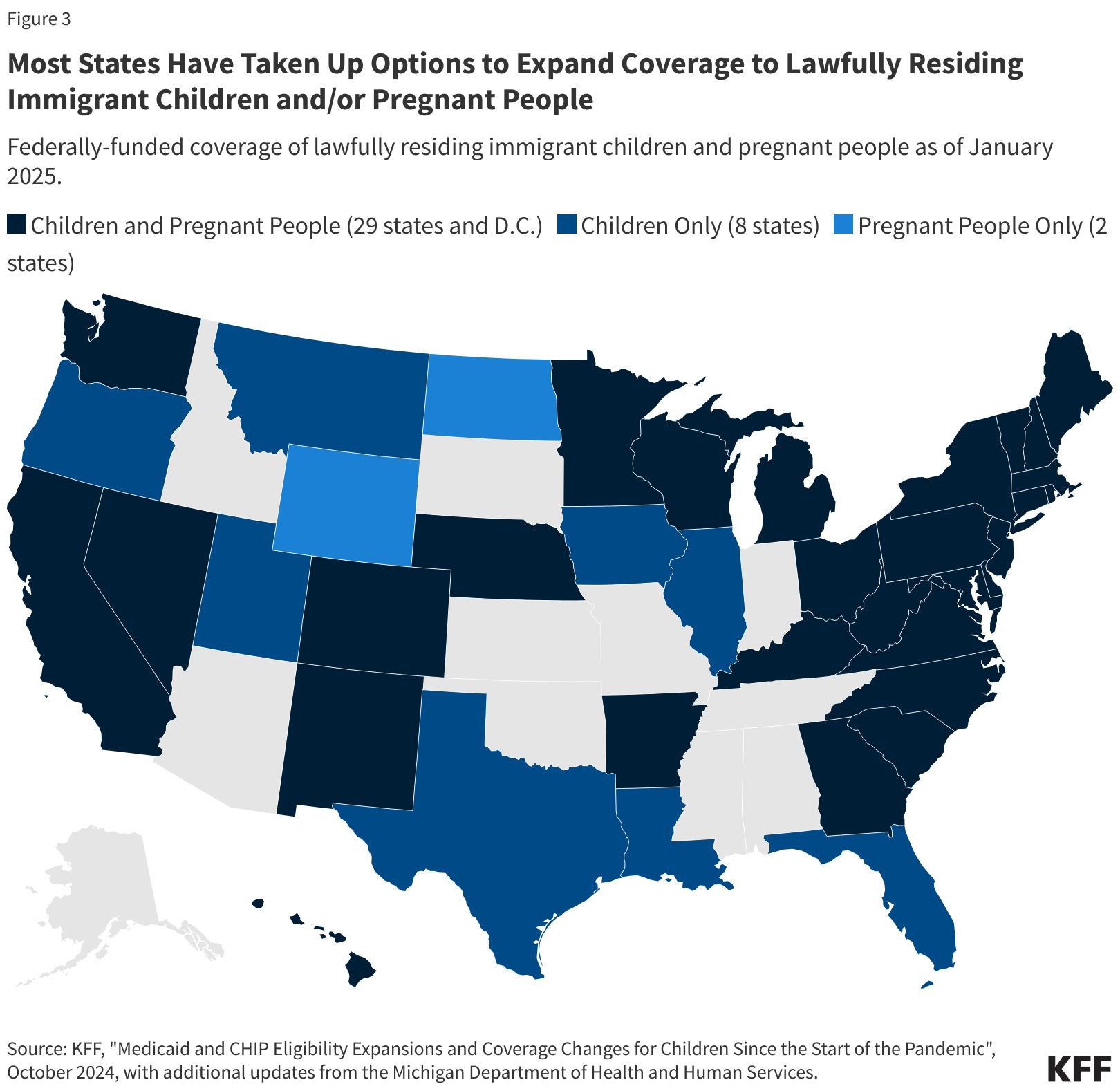
Immigrants Under Age 65 Are Less Likely to Be Covered by Medicaid Than U.S.-Born Citizens Note: Includes adults ages Oto 64.

lawfully present immigrants qualify, subject to eligibility restrictions.
Undocumented immigrants are not eligible to enroll in federally funded coverage, including Medicaid, CHIP, Medicare, or to purchase coverage through the ACA Marketplaces. Emergency Medicaid spending reimburses hospitals for emergency care they are obligated to provide to individuals who meet other Medicaid eligibility requirements (such as income) but who do not have an eligible immigration status, including undocumented immigrants and lawfully present immigrants who remain ineligible for Medicaid or CHIP.
Lawfully present immigrants may qualify for Medicaid or CHIP but are subject to eligibility restrictions. In general, in addition to meeting other eligibility requirements, lawfully present immigrants must
have a “qualified” immigration status to be eligible for Medicaid or CHIP (Table 1), and many, including most lawful permanent residents or “green card” holders, must wait five years after obtaining qualified status before they may enroll. They may enroll in Marketplace coverage and receive subsidies during this five-year waiting period. Some immigrants with qualified status, such as refugees and asylees, as well as citizens of Compact of Free Association (COFA) nations, do not have to wait five years before enrolling. Some immigrants, such as those with temporary protected status, are lawfully present but do not have a qualified status and are not eligible to enroll regardless of their length of time in the country. Individuals with Deferred Action for Childhood Arrivals (DACA) status are not eligible for Medicaid or CHIP, and implementation of a Marketplace coverage expansion for them remains subject to ongoing litigation. States must verify citizenship and immigration status with the Social Security Administration and the Department of Homeland Security to determine eligibility for coverage.
2. Despite having lower household incomes, immigrants under age 65 are less likely to be covered by Medicaid than their U.S.-born citizen counterparts.
In 2023, 19% of immigrants under age 65 were covered by Medicaid compared to 23% of U.S.-born citizens (Figure 1). Eligible noncitizen immigrants represent a small
share of people covered by Medicaid, comprising just 6% of individuals under age 65 with Medicaid. Immigrants are also not more likely than U.S.-born citizens to receive assistance with food or housing. Data from the 2023 KFF/LA Times Survey of Immigrants shows that, overall, about a quarter (28%) of both immigrant adults and U.S.-born citizen adults say they received assistance with food, housing, or health care in the past 12 months.
Many families face barriers to enrolling eligible lawfully present immigrants and citizen children in assistance programs due to fear, confusion about eligibility policies, difficulty navigating the enrollment process, and language access challenges. Restrictive immigration policies, including increases in enforcement actions, being implemented by the Trump administration, will likely increase fears of enrolling in coverage and accessing health care. Even prior to the Trump administration, in 2023, nearly one in ten (8%) immigrants said they avoided applying for food, housing, or health care assistance in the past year because they didn’t want to draw attention to their immigration status or the status of someone in their family.
3. Emergency Medicaid spending makes up less than 1% of total Medicaid spending. Emergency Medicaid spending represented less than 1% of overall Medicaid spending between fiscal years 2017 and 2023. Spending on Emergency Medicaid was $3.8 billion in FY 2023 and was 0.4% of total Medicaid spending that year (Figure 2). Emergency Medicaid spending reimburses hospitals for emergency care they are obligated to provide to individuals who meet other Medicaid eligibility requirements (such as income) but who do not have an eligible immigration status. These include lawfully present immigrants who are subject to a five-year waiting period for Medicaid or who remain ineligible for Medicaid and undocumented immigrants. Emergency services include those requiring immediate attention to prevent death, serious harm or disability, although states have some discretion to determine reimbursable services. Much of Emergency Medicaid spending goes toward labor and delivery costs. Without Emergency Medicaid, the costs of care would be shifted to hospitals that are required to treat individuals in emergency situations or fully to states.
4. States have expanded Medicaid coverage for lawfully present immigrant children and pregnant people, and some have fully state-funded coverage for immigrants. For children and pregnant people, states can eliminate the five-year waiting period for Medicaid and CHIP coverage. As of January 2025, 37 states plus D.C. have taken up this option for children, and 31 states plus D.C. have elected the option
on page 39
By ARIAMA C. LONG Amsterdam News Staff
The National Action Network’s (NAN) highly anticipated 34th annual Keepers of the Dream Gala, in honor of Dr. Martin Luther King Jr.’s legacy, kicked off last week with celebrities and elected officials on the red carpet.
Founded in 1991 by activist Rev. Al Sharpton, NAN has been on the frontlines of the battle for civil rights, democracy, and equality for decades. The gala brings people together from all over the country to reflect on King’s legacy, as well as present awards to individuals that have upheld his dream through years of tireless commitment. The theme this year was “Light in Darkness.”
“We are honoring some of the people that have changed this country for the better. We have this convention and this dinner every year in April, because on April 4, 1968, Dr. Martin Luther King was killed in Memphis, Tennessee,” said Sharpton at the podium.
“It has been the commitment of the National Action Network to always, in the month he was killed, let them know they killed the dreamer, but they can’t kill the dream.”
Those in attendance included Drum Major Institute Chairperson of the Board Martin Luther King III, New Birth Missionary Baptist Church Senior Pastor Jamal Bryant, Governor Kathy Hochul, Mayor Eric Adams, City Council Speaker Adrienne Adams, Councilmem-

ber Yusef Salaam, radio host Charlamagne tha God, and singer Patti LaBelle.
Hochul presented her own proclamation to NAN Chairperson of the Board Rev. Dr. W. Franklyn Richardson for 50 years of service.
“I’m so proud to be here this evening to present this to an individual whose counsel and advice I have come to rely on for many, many years, but onward and upward to another 50 more (for) Dr. Richardson,” Hochul said. This year’s honorees were LaBelle; 1199 SEIU
United Healthcare Workers East President George Gresham; TV producer for Artists First E. Brian Dobbins; former TV host Chris Matthews; NAN Sacramento Chapter President Rev. Dad. Tecoy Porter; and NAN Special Liaison to the President Rev. Stephan Marshall. “I grew up in segregation,” said Gresham in his acceptance speech. “I say that because I know what it feels like to be treated as a second-class citizen. I know what it feels like to be oppressed. I know what it feels like when
the world wants to limit your growth because of the color of your skin … Reverend Al Sharpton does what he (was) absolutely born to do. That is to stand up for justice. I am pleased and honored to have this award, not because of the great things I have done but because I should have done those things. I should have been the person that I am. I really don’t deserve this award for doing the right thing.”
The evening’s event was hosted by actor and comedian Anthony Anderson.
Memorial Sloan Kettering Cancer Center’s About Herbs website can answer your questions on the proven uses, benefits, and side effects of more than 280 common herbs and dietary supplements, such as turmeric .

The active substance in turmeric is curcumin. Curcumin is a powerful antioxidant. Antioxidants protect your cells from damage.
Point your smartphone camera at the QR code and tap the link to learn more, and find us in Harlem at the MSK Ralph Lauren Center, located at 1919 Madison Ave.
By LIZ COURQUET-LESAULNIER WORD IN BLACK
If the Department of Education gets its way, your kid’s school will soon be stripped of federal funding used to hire instructional aides, run after-school tutoring programs, and train teachers to reach struggling students –– unless districts agree to stop diversity, equity, and inclusion programs.
If the NAACP gets its way, that will never happen.
The civil rights group and the NAACP Legal Defense Fund sued the Trump administration on Tuesday, accusing it of twisting civil rights laws to target DEI initiatives in public schools.
The suit marks the latest battle line in President Donald Trump’s war on “woke” education, which, over the past few years, has included everything from banning books about Ruby Bridges and the Little Rock Nine to axing AP African American Studies.
So What’s Happening?
Back in February, the DOE sent a “Dear Colleague” letter to schools, warning that any programs touching on race, whether in hiring, admissions, financial aid, or even cultural events, might violate federal law and jeopardize funding.
Then, in April, it demanded that schools certify compliance and end all DEI programs, or risk losing federal funding.
That’s a blatant misreading of Title VI of the Civil Rights Act of 1964 as well as the Equal Protection Clause of the Fourteenth Amendment to the U.S. Constitution, according to the NAACP lawsuit. Those laws, it contends, are meant to prevent discrimination — not ban efforts to fix it.
Rather than protecting students’ civil rights, the DOE “has instead claimed systemic racism doesn’t exist,” Derrick Johnson, the NAACP’s president, said in a statement. The reality, he said, is that Black students and other children of color still experience racial harms and are more likely to “attend segregated, chronically underfunded schools where they receive less educational opportunities and more discipline.”
It’s About Fear, Not Fairness
The lawsuit comes as real-world consequences of the Trump administration’s policies play out nationwide. The NAACP pointed out in March that the Waterloo, Iowa, school district withdrew
its students from a longrunning, annual African American Read-In event at the University of Northern Iowa. Instead of participating in a culture of fairness, the NAACP argues, Waterloo feared retaliation from Washington.
Ultimately, journalist and Howard University professor Nikole Hannah Jones, a Waterloo native, stepped up to host a replacement read-in for the kids.
Meanwhile, the Trump administration is systematically dismantling the Department of Education’s Office of Civil Rights through sweeping layoffs. OCR is now all but disbanded; parents whose children are victims of bias or discrimination have nowhere to turn for help. As NPR reported this week, OCR investigated instances of racial discrimination in schools, but the vast majority of cases involved parents seeking resources for their children with disabilities.
Other programs –– like affinity groups for students of color or anti-bias teacher training –– are now on the chopping block. That’s bad news for the 7.4 million Black students in K-12 public schools, already being taught by a workforce overwhelmingly white and female.
The Education Department hasn’t commented on the lawsuit yet. But if the NAACP and LDF are successful, the case could safeguard funding for schools that serve marginalized students –– and set a major precedent for how civil rights laws are upheld going forward. For now, though, educators and families are left in limbo.
“Denying these truths doesn’t make them disappear,” Johnson said. “It deepens the harm.” In Trump’s war on DEI in schools, the NAACP fights back
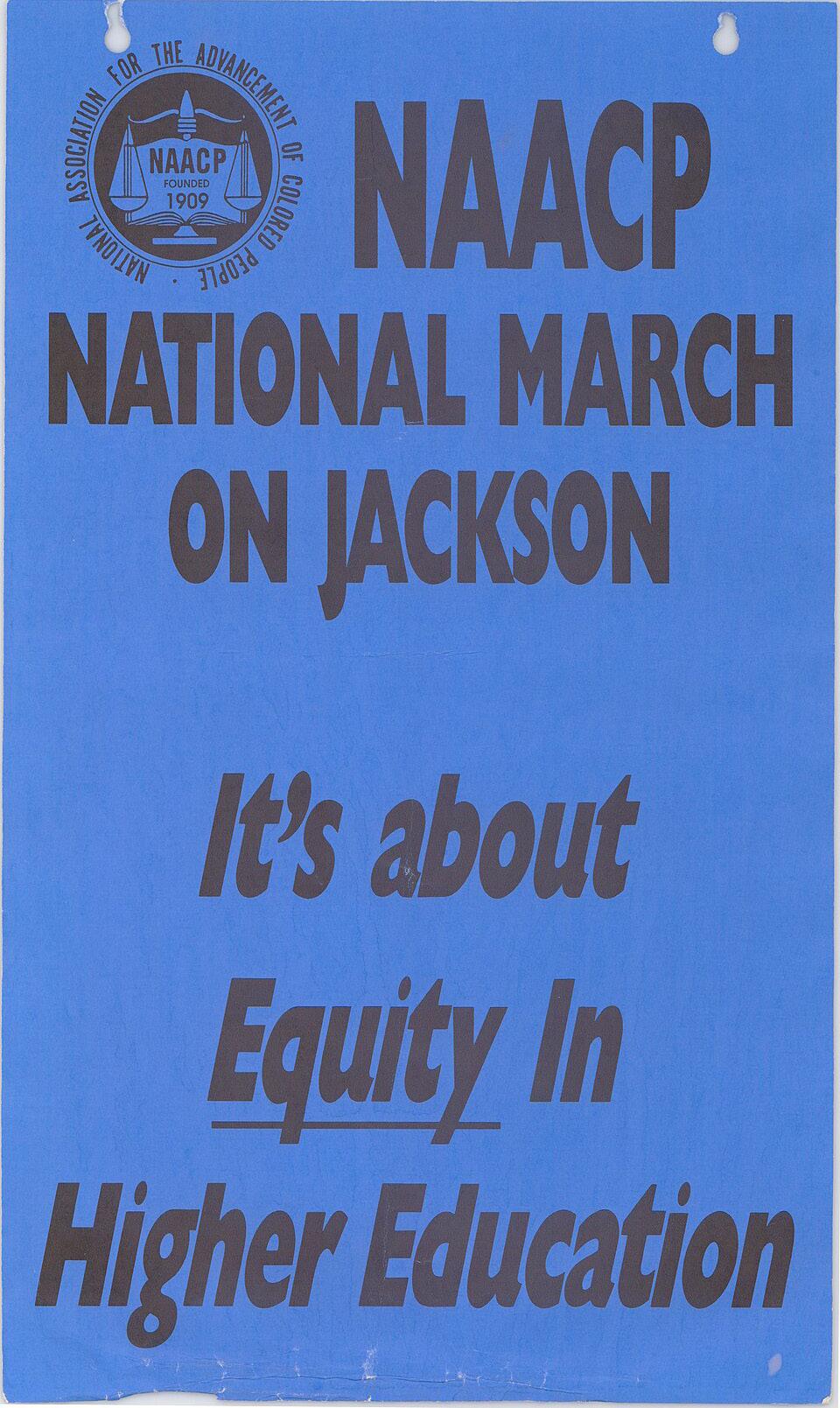
BY ALEX ZIMMERMAN CHALKBEAT
This story was originally published by Chalkbeat. Sign up for their newsletters at ckbe.at/newsletters
Almost three years ago, New York City officials declared victory on a major project: outfitting every public school classroom with air conditioning.
Yet after spending nearly half a billion dollars to upgrade outdated electrical systems and purchase new units, nearly 1 in 5 classrooms are still at risk of overheating.
About 18% of instructional spaces in city public schools did not have access to air conditioning last school year, according to an analysis of city data by the Independent Budget Office. Among classrooms dedicated to special education support, 22% did not have access to cooling units.
Chalkbeat previously found some students and educators were left sweltering even after the Education Department said its AC for All initiative was complete. The latest data show AC access remains a widespread issue.
“You got a lot of people running around patting themselves on the back about that, but there are still a lot of spaces that don’t have air conditioning,” said Tom Sheppard, a Bronx parent who serves on the city’s Panel for Educational Policy, which votes on Education Department contracts and other policy decisions.
When former Mayor Bill de Blasio launched AC for All in 2017, he framed the effort as essential to ensuring students have comfortable spaces to learn and a response to families that had long complained about stifling classrooms. But the program was a one-time infusion, leaving the subsequent cost of repairing or replacing AC units to individual schools. Some administrators say they don’t have money in their budgets to address broken units, leading to a patchwork of air conditioning coverage.
“They did ‘AC for All,’ but what’s the idea for replacing [them]?” said Stacey McStine, an assistant principal at P.S. 279 in Brooklyn. The school’s PTA kicked in some money for air conditioners years ago, but some units are now past their useful life, McStine said, and city officials did not replace all of them through the air conditioning program.
On hot days last school year, some classes had to be moved to the auditorium, which is air conditioned, disrupting instruction. The school’s custodian was able to track down portable AC units for preschool classrooms, though they felt more like a fan.
“They’re babies. They need AC, and we’re running on a portable,” McStine said.
City officials did not explain why maintaining or replacing air conditioning should fall to individual schools unlike other building
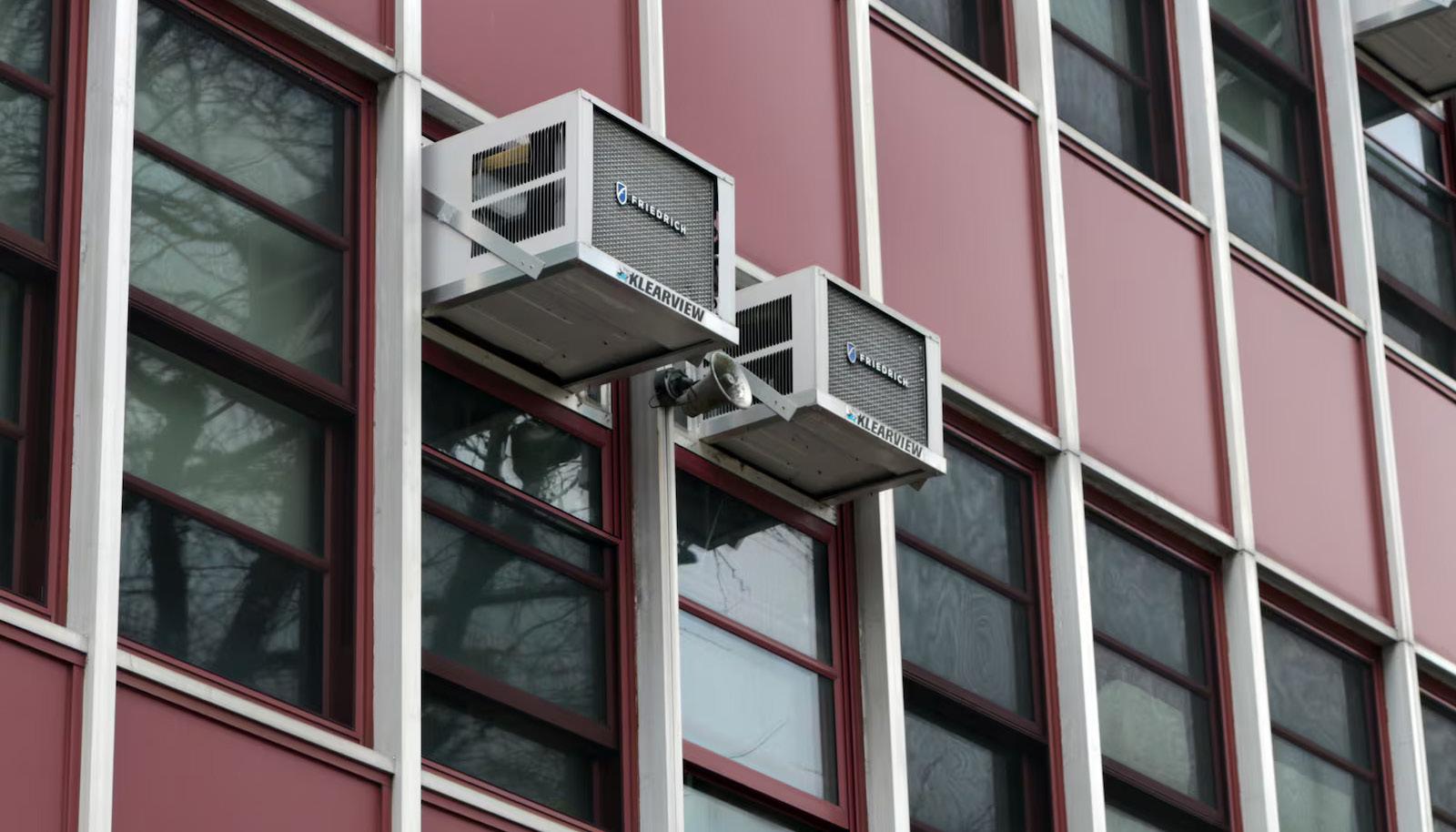
maintenance costs, noting only that the Education Department has not historically paid to maintain window AC units.
“The AC for All initiative took important steps to cool our schools, and while our custodial engineers work hard to maintain AC units, the repair and replacement of units is the responsibility of our dedicated school leaders,” department spokesperson Jenna Lyle wrote in a statement.
The AC for All initiative also did not guarantee air conditioning in every space where students learn. Converted classroom spaces that were not originally designed for instruction were excluded — a noteworthy exception as schools may increasingly lean on makeshift spaces for instruction to comply with a mandate to reduce class sizes. The program also left out rooms without windows and a slew of other spaces such as gyms, auditoriums, and libraries.
Air conditioning access is an increasingly urgent issue. School years in New York City regularly include more than 30 days of temperatures of at least 80 degrees, and extreme temperatures are likely to become more frequent because of climate change. Some studies, though not all, suggest student learning suffers in hotter temperatures.
Lack of air conditioning could also pose additional logistical headaches for school leaders this coming school year. Under a state law that takes effect this September, schools will no longer be allowed to send students into spaces hotter than 88 degrees, forcing administrators to find alternative spaces on sweltering days. City officials did not say
whether schools could consider remote instruction as an alternative.
Some data show AC for All didn’t lead to sweeping change
Even as the city purchased at least 19,000 AC units and upgraded electrical systems in roughly 700 buildings, it is unclear how much of a dent the air conditioning program made.
When AC for All launched in 2017, officials said 26% of city classrooms were unairconditioned — or 11,500 rooms — though the true number turned out to be closer to 13,000 thanks to a miscount.
By 2021, 20% of classrooms lacked AC based on data city officials publicly reported. That figure dropped to roughly 11% by the summer of 2022. Later that year, Education Department officials said the project was “completed” and stopped releasing reports tracking the program.
But separate data analyzed by the city’s Independent Budget Office shows that over the past eight years, the city only increased classroom air conditioning coverage by a little more than 2 percentage points — from 20% of classrooms lacking AC in the 2016-17 school year to 18% last school year.
Some of the discrepancy may be related to differences in how the IBO and Education Department classify whether a room is used for instructional purposes and therefore, is eligible for the air conditioning program.
The data sources are also different. The figures analyzed by IBO came from annual principal surveys while the figures released publicly by the Education Department to track the prog-
ress of AC for All were based on walkthroughs conducted by other department staff. Education Department officials did not dispute the IBO’s findings. Kevin Ortiz, a spokesperson for the School Construction Authority, noted that the IBO data is based on self-reported information and may not be fully accurate. IBO officials said those figures are supposed to be periodically validated.
The program’s costs also turned out to be far higher than initially estimated. A 2017 press release said the Education Department planned to spend nearly $29 million over five years to purchase and install the units with another $50 million in capital costs for electrical and other upgrades.
The Education Department’s costs grew to at least $39.6 million though officials did not offer a final tally. Meanwhile, the capital costs soared to $460 million, according to Ortiz. He said the $50 million figure came before the agency had actually assessed the number of classrooms that needed electrical upgrades and retrofits.
Despite the investment, some students said they still deal with uncomfortably hot classrooms.
Autumn Wynn, a junior at Park Slope Collegiate, said her social studies class last year did not have a working air conditioner. That made it challenging to concentrate, she said, especially as the room filled with body odor. The heat also affected instruction, as her teacher sometimes pivoted to showing YouTube videos or offering online quizzes.
“It affected them teaching,” Wynn said. “It’s just so hot that no one can think straight.”
By KAYLYN KENDALL DINES
Special to the AmNews
The 2025 global Earth Day observance was held on April 22 to raise awareness and encourage adults and children to learn and engage in protecting the environment. On April 13, several organizations, families, and friends gathered in Harlem for a 2025
Earth Day Festival in St. Nicholas Park.
The Tau Omega Chapter of Alpha Kappa Alpha Sorority, Incorporated® (AKA) hosted the community-action event in collaboration with Friends of St. Nicholas Park, The Trash Project, and Nasty New Yorkers.
“Earth Day holds special significance for Tau Omega Chapter because it allows us to spotlight the environmental challenges impacting
the Harlem community. We believe in promoting collective responsibility to care for our green spaces — efforts like planting 100 saplings during our event are a reflection of that commitment,” said Valerie M. Henderson, president of the Tau Omega Chapter of AKA. Harlem residents participated in park cleanup efforts, gardening workshops, environmental education sessions, face paint-
ing, and arts and crafts. They listened to music and received giveaway items. Some even stopped by the Nasty New Yorkers Pop-Up Store, which offered free clothing and household items to promote reuse and sustainability. The event reinforced each partnering organization’s commitment to ecological restoration and improving green spaces in urban communities.

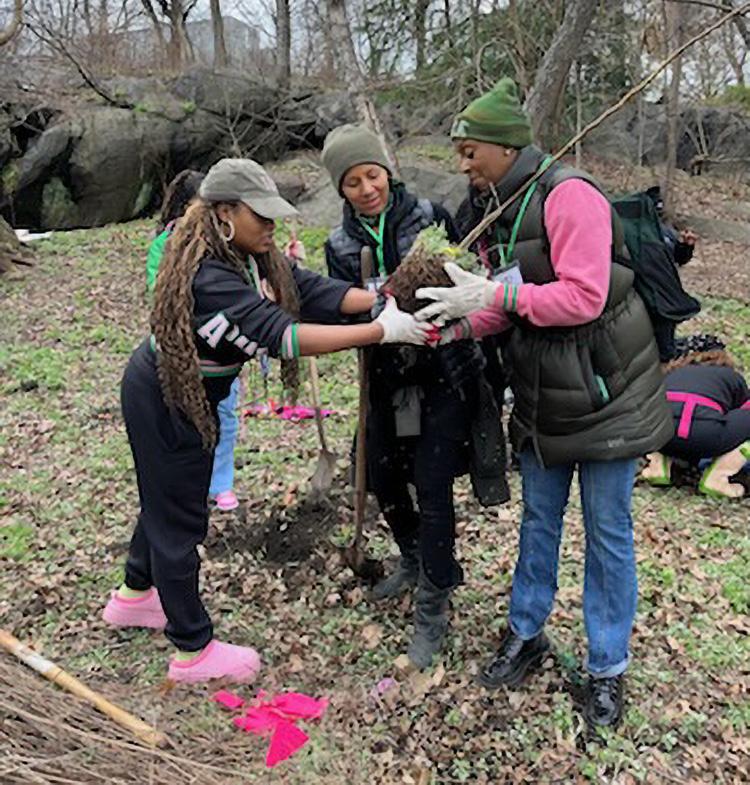




































































Thus says the Lord, who makes a way in the sea, a path in the mighty waters, 17 who brings out chariot and horse, army and warrior; they lie down; they cannot rise; they are extinguished, quenched like a wick: 18 Do not remember the former things or consider the things of old.
19 I am about to do a new thing; now it springs forth; do you not perceive it? I will make a way in the wilderness and rivers in the desert.
20 The wild animals will honor me, the jackals and the ostriches, for I give water in the wilderness, rivers in the desert, to give drink to my chosen people, 21 the people whom I formed for myself so that they might declare my praise. Isaiah 43:16-21
Recently, the artist Alok preached a sermon/ poem on this text at Middle Church called I’m About to Do a New Thing. It was gorgeous! This scripture above has stayed with me since my first week in seminary when I was

30-years old. This text, “I’m about to do a new thing, can you perceive it?” was an answer to my existential questions. God was making me new, even in ways I could not understand. God was making a river in the desert of my soul, reminding me every time I revisited this text just how wonderful God is. Able to do more than I can ask or imagine. Able to open seas and liberate their people. Able to make a way out of no way. Able to heal and repair the world. Able to cause a rumble in the earth and tears to gush from the sky. Able to bring new life out of death.
Oh, how I needed God to be this kind of God for my 30-year-old self. I still do. And God has not disappointed. Life has. Circumstances have. Brokenhearted, I’ve often limped along in my faith, but God is always there. All. Ways. There.
So, as I type I am crying because the God who did not start the fire that stole my church; the God who kept our community together for five years without a home; the God who brought Vickie Burns and Mark Reed and Danita Branam and all of my board to the table to stubbornly commit to rebuilding our sacred space in our neighborhood; the God who sent us into the streets to stand up for reproductive justice, Trans rights, and for the liberation of Palestine and all the hostages; the God who can make a river in our dry souls and cause justice to flow like a mighty stream — this God helped Middle Church rise from the ashes. This God showed their God-ness and brought us back to life! This God helped us open our doors for worship on Easter Sunday, after five years out of our building. Thanks be to God, we rose from the ashes, and our community came home to love.
Not even death can stop God from being God!
The Easter story is a remarkable one in the Christian faith; it declares God came to the world in the flesh and entered human history to teach us the power of the divine/ human partnership. It articulates the very real ways powers and principalities fear love so much that they crucified Rabbi Jesus, who we call Christ, to thwart what love would do to transform the Roman Empire. This Easter story pits the Kin-dom of God against the Kingdom of Rome, in a contest of world views and ethics. And it looks like Rome wins, until God offers a Divine Do-Over and reanimates Jesus to life. God reverses the
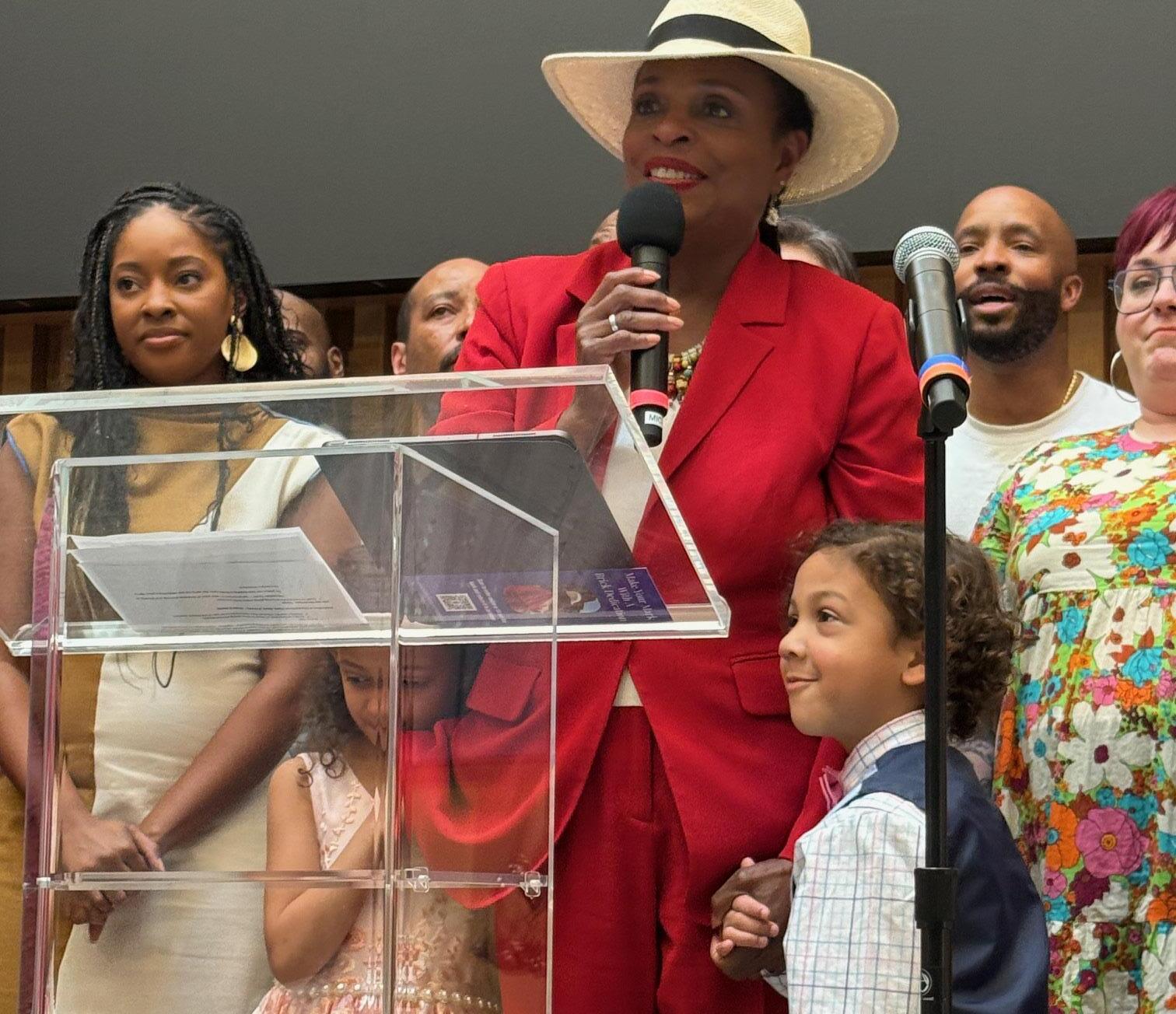
state-sanctioned murder of his beloved and causes a movement of love and justice to rise out of the grave.
We believe God took on the particularity of Jewish/Palestinian, Afro-Asiatic flesh; outsider-inside-empire flesh, to show us the power of humility to heal the world. Middle Church believes this still-speaking God partnered with us, helping us rise out of the ashes. We know God can do more than we can ask or imagine. We know God’s love is stronger than the hatred and bigotry of any empire. God’s truths are more powerful than the lies of any regime. We believe God will partner with humanity to save us all from bigotry and violence, to save us from ourselves. We trust that someday we will all be free.
Here is a link to our joyful Easter worship celebration from April 20. I hope you can feel the power of our multi-everything community of seekers, trying hard to do and be love on the planet.
https://www.youtube.com/live/ SURyvnytkRE?si=ZWnPX7Ccll_4ZF5s
We sang Andra Day’s beautiful “Rise Up” in our worship celebration:
And we’ll rise up
High like the waves
We’ll rise up
In spite of the ache
We’ll rise up
And we’ll do it a thousand times again
And we sang Hozier’s “Nina Cried Power”
It’s not the song, it is the singing It’s the heaven of the human spirit ringing It is the bringing of the line It is the bearing of the lie It’s not the waking, it’s the rising
Finally, we sang Richard Smallwood’s “Total Praise.” We sang with power and joy the testimony that God is the source of our strength and the strength of our lives. We lifted our hands in total praise to this God of love, whose mercy and goodness are proof of life. Wherever two or more are doing God’s work, wherever love is healing the world — that is proof of the resurrection. That is proof of life.
Amen!!
Rev. Dr. Jacqui Lewis is senior minister and public theologian at Middle Church in New York. Celebrated internationally for her dynamic preaching and commitment to justice, she champions racial equality, economic justice, and LGBTQIA+/gender rights. Featured on MSNBC, PBS, NBC, CBS, and NPR, she is the author of several books, including “Fierce Love” and the “Just Love Story Bible.” Countless individuals and communities have been inspired by Lewis’ transformative work on her podcast, “Love Period,” in columns and articles; and on stages, in churches, on the street, and in digital spaces around the globe.

Continued from page 33
for pregnant individuals (Figure 3). Additionally, 23 states plus D.C. provide prenatal care and pregnancy-related benefits to low-income children beginning from conception to end-of-pregnancy regardless of their parents’ citizenship or immigration status under the CHIP From-Conception-to-End-of-Pregnancy option. Some states have fully state-funded health coverage programs for immigrants regardless of status, particularly children. Research suggests that state coverage expansions for immigrants lead to increases in coverage and improvements in health care access and use.
5. Immigrants use less health care and have lower health care costs than people born in the U.S.
Research shows that immigrants use less health care and have lower health care costs than U.S.-born citizens . Lower use of health care among immigrants likely reflects a combination of them being younger and healthier than their U.S.-born counterparts as well as them facing increased barriers to care, including language access challenges, confusion, and immigration-related fears. Prior KFF analysis found that Trump-era policies amplified these fears and contributed to greater reluctance to access care. Reflecting their lower use of health care, immigrants have lower health care expenditures than their U.S.-born counterparts. Consistent with other research, KFF analysis of 2021 medical expenditure data shows that, on average, annual per capita health care expenditures for
immigrants are about two-thirds those of U.S.-born citizens ($4,875 vs. $7,277), with no significant difference in the av erage amount paid by Medicaid for im migrants ($854) and U.S.-born people ($830). Given the Medicaid eligibility re strictions for immigrants, it is likely that a greater share of Medicaid spending for immigrants goes toward pregnancy-relat ed care and emergency care, which tend to be costly. In contrast, U.S.-born enroll ees include a high share of children, who typically utilize lower cost care. Immigrants contribute to the economy through their role in the workforce and tax payments, with research showing that they help subsidize health care for U.S.born people and stabilize Medicare and Social Security nation’s workforce by filling unmet labor market needs, and research suggests that they do not take jobs away from U.S.-born people. They play a disproportionate role filling jobs in essential industries such as construction and agriculture. In addition, immigrants as well as the adult children of immigrants play outsized roles in the health care workforce as physicians, sur geons, nurses, and long-term care work ers (Figure 4). They also play a particularly large role as direct care workers in home and community-based settings. As health care workforce shortages are projected to continue and the U.S. 65 and older popu lation grows, immigrants could help miti gate these shortages. Analysis also shows that undocumented immigrants contrib ute billions in federal, state, and local taxes each year, and research shows that they pay more into the health care system through taxes and health insurance premiums than they utilize, helping to subsidize health care for U.S.-born citizens.

Amenities: One block from LIRR Hempstead Station and 2 . On site staff office, elevators, fitness room, laundry room, community room, lounge area
Income Restrictions Apply – No Application Fee – No Broker’s Fee be automatically rejected based on credit
www.concernhousing.org
Your household must meet these income restrictions:
Lottery Date & Location: Tuesday June 10, 2025 10:30 am https://zoom.us/j/97976206193 The lottery will determine which applications will be reviewed for tenancy
YOU HAVE RIGHTS! ACCESSIBILITY INFORMATION


If you have experienced housing discrimination: https://dhr.ny.gov/journey-fair-housing or call 844-862-8703



Learn about how your credit and background check will be individually reviewed: https://on.ny.gov/3uLNLw4



Español (Spanish)
Vivienda asequible disponible

11 units are adapted for mobility impairment




Application Due:



4 units are adapted for hearing/vision impairment
All units are adaptable to be wheelchair accessible Reasonable accommodation and modifications
Estella 53 UNITS AT 150 Bedell Street Hempstead, NY 11550
文 (Simplifed Chinese)









*Rent includes hot water and heat. Income guidelines & permitted household size are subject to change.
Fecha limite de entrega de la solicitud: 5/29/2025
Debe entregarse por internet o por correo postal a más tardar en esta fecha.
**Minimum income listed may not apply to applicants with Section 8 or other qualifying rental subsidies.
Si envía más de 1 solicitud podría quedar descalificado.
Para Obtender La Solicitud:
Asset limits may apply.
Application Due Date: May 29th, 2025
Must be postmarked date will be revised by this date. Sending more than 1 application may disqualify you.
How to Apply:
Online: www.concernhousing.org
Request Application By Phone, mail or Email: (631)758-0474 312 Expressway Drive South Medford NY 11763 info@concernhousing.org
*Rent
Lottery Date & Location: Tuesday June 10, 2025 10:30 am https://zoom.us/j/97976206193
The lottery will determine which applications will be reviewed for tenancy
1 application may disqualify you.
How to Apply: Online: www.concernhousing.org
Request Application By Phone, mail or Email: (631)758-0474 312 Expressway Drive South Medford NY 11763 info@concernhousing.org
Lottery Date & Location: Tuesday June 10, 2025 10:30 am https://zoom.us/j/97976206193

The lottery will determine which applications will be reviewed for tenancy
YOU HAVE RIGHTS! ACCESSIBILITY INFORMATION
• If you have experienced housing discrimination: https://dhr.ny.gov/journey-fair-housing or call 844-862-8703
If you have experienced housing discrimination: https://dhr.ny.gov/journey-fair-housing or call 844-862-8703
11 units are adapted for mobility impairment
4 units are adapted for
• Learn about how your credit and background check will be individually reviewed: https://on.ny.gov/3uLNLw4
Learn about how your credit and background check will be individually reviewed: https://on.ny.gov/3uLNLw4

All units are adaptable to be
Reasonable accommodation and modifications may be requested
• 11 units are adapted for mobility
•
• All
• Reasonable
CANCELLATIONS must be made in writing by 12 Noon Monday.
The forwarding of an order is construed as an acceptance of all advertising rules and conditions under which advertising space is sold by the NEW YORK AMSTERDAM NEWS. Publication is made and charged according to the terms of this card.
Rates and regulations subject to change without notice. No agreements as to position or regulations, other than those printed on this.
Til forbid orders charged for rate earned. Increases or decreases in space take the rate of a new advertisement.
The New York AMSTERDAM NEWS reserves the right to censor, reject, alter or revise all advertisements in accordance with its rules governin g the acceptance of advertising and accepts no liability for its failure to insert an advertisement for any cause. Credit for errors in advertisements allowed only for first insertion.
• Classified advertisements take the regular earned rate of their classification. Four line minimum on all ads except spirituals and horoscopes (14 lines).
• Classified Display (boarder or picture) advertisements take the regular earned rate of their classification. Display (boarder or picture) advertisements one column wide must be 14 lines deep; two columns, 28 lines deep; 3 columns, 56 lines deep. Classified Display (boarder or picture) placed as close to classifications as rules and makeup permit.
All advertisement accepted for publication is classified according to the standard classifications. Misclassification is not permitted.
Charges are based on point size and characters per line. Upon reaching 15 lines the rate converts to column inch. Any deviation from solid composition such as indentation, use of white space, bold type, etc., will incur a premium.
SMZ International Group LLC LLC Arts. of Org. filed with the SSNY on 02/27/2025. Office location: New York County. SSNY has been designated as an agent upon whom process against it may be served & shall mail to: 2804 Gateway Oaks Dr # 100 , Sacramento, CA 95833. Purpose: Any lawful act.
IGLESIAS NOTARY AND MANAGEMENT LLC Arts. of Org. filed with the SSNY on 3/14/2025. Office location: New York County. SSNY has been designated as an agent upon whom process against it may be served & shall mail to: Business Filing Incorporated, 187 Wolf Road, Ste 101, Albany, NY 12205. Purpose: Any lawful act.
Blood Dynamics, LLC. LLC Arts. of Org. filed with the SSNY on 03/20/2025. Office location: New York County. SSNY has been designated as an agent upon whom process against it may be served & shall mail to: 450 Riverside Drive, Apt 94, New York, NY 10027. Purpose: Any lawful act.
ACLM GROUP LLC Arts. of Org. filed with the SSNY on 03/13/2025. Office location: NY County. SSNY has been designated as an agent upon whom process against it may be served & shall mail to: 99 Wall Street, Ste 1020, New York, NY 10005. Purpose: Any lawful act.
Notice of Qualification of ER NORTHWAY LLC Appl. for Auth. filed with Secy. of State of NY (SSNY) on 02/24/25. Office location: NY County. LLC formed in Delaware (DE) on 02/18/25. Princ. office of LLC: 60 Cutter Mill Rd., Ste. 601, Great Neck, NY 11021. SSNY designated as agent of LLC upon whom process against it may be served. SSNY shall mail process to Corporation Service Co. (CSC), 80 State St., Albany, NY 122070543. DE addr. of LLC: c/o CSC, 251 Little Falls Dr., Wilmington, DE 19808. Cert. of Form. filed with Secy. of State of DE, John G. Townsend Bldg., 401 Federal St., Ste. 3, Dover, DE 19901. Purpose: Any lawful activity.
Notice of Qualification of X11 FIRST AVE LLC Appl. for Auth. filed with Secy. of State of NY (SSNY) on 03/25/25. Office location: NY County. LLC formed in Delaware (DE) on 10/07/24. SSNY designated as agent of LLC upon whom process against it may be served. SSNY shall mail process to Corporation Service Co. (CSC), 80 State St., Albany, NY 12207-2543. DE addr. of LLC: c/o CSC, 251 Little Falls Dr., Wilmington, DE 19808. Cert. of Form. filed with DE Secy. of State, 401 Federal St., Ste. 4, Dover, DE 19901. Purpose: Any lawful activity.
SUPREME COURT – COUNTY OF NEW YORK
OCEANSIDE NYUC LLC, Plaintiff -against- MAJESTIC HOLDINGS (USA) LLC, et. al. Defendant(s). Pursuant to a Judgment of Foreclosure and Sale entered herein and dated January 31, 2025, I, the undersigned Referee, will sell at public auction in Room 130 at the New York County Courthouse, located at 60 Centre Street, New York, NY, on May 21, 2025 at 2:15 p.m.
Premises situate, lying and being in the Borough of Manhattan, County of New York, City and State of New York, known as:
UNIT: 825, Cipriani Club Residences at 55 Wall Street, New York, NY 10005
Block: 27 | Lot: 1085
Approximate amount of lien: $1,126,233 plus interest and costs.
Premises will be sold subject to provisions of filed Judgment and Terms of Sale.
Index Number: 850251/2021
MARK MCKEW, ESQ., Referee
Craig Stuart Lanza, PLLC
Attorney(s) for Plaintiff
44 Court Street, Suite 1207
Brooklyn, New York 11201
Phone: (347) 556-9795
Email: cslanza@gmail.com
The Wellness Odyssey LLC Arts. of Org. filed with the SSNY on 10/31/2024. Office location: NY County. SSNY has been designated as an agent upon whom process against it may be served & shall mail to: 228 Park Ave S #187967, New York, NY 10003. Purpose: Any lawful act.
Tristate Healing Strategies
LLC Arts. of Org. filed with the SSNY on 1/28/25. Office location: New York County. SSNY has been designated as an agent upon whom process against it may be served & shall mail to: 380 Malcolm X Blvd. #J7, New York, NY 10027. Purpose: Any lawful act.
IL BAMBINA VINTAGE LLC
Arts. of Org. filed with the SSNY on 2/27/2025. Office location: NY County. SSNY has been designated as an agent upon whom process against it may be served & shall mail to: 251 E. 2nd St., APT. PHA, New York, NY 10009. Purpose: Any lawful act.
Being Sarah Kim LLC Arts. of Org. filed with the SSNY on 4/13/2025. Office location: New York County. SSNY has been designated as an agent upon whom process against it may be served & shall mail to: 363 E. 76th St, NY, NY 10021. Purpose: Any lawful act.
CITY CRAWL ADVENTURES
LLC Arts. of Org. filed with the SSNY on 1/09/2025. Office location: NY County. SSNY has been designated as an agent upon whom process against it may be served & shall mail to: 242 W 61st St, Apt 3A, New York, NY 10023. Purpose: Any lawful act.
EL REY VENTURES LLC Arts. of Org. filed with the SSNY on 12/17/2024. Office location: NY County. SSNY has been designated as an agent upon whom process against it may be served & shall mail to: 136 Madison Avenue, New York, NY 10016. Purpose: Any lawful act.
FLYING LOTUS LLC Arts. of Org. filed with the SSNY on 03/04/2025. Office location: Ny County. SSNY has been designated as an agent upon whom process against it may be served & shall mail to: 287 Bleecker St, Apt 5R, New York, NY 10014. Purpose: Any lawful act.
LUXWORA LLC Arts. of Org. filed with the SSNY on 4/02/2025. Office location: Ny County. SSNY has been designated as an agent upon whom process against it may be served & shall mail to: 45 Rockefeller Plaza, 20th Fl , New York, NY 10111. Purpose: Any lawful act.
PAMELA SOLE JEWELRY
LLC Arts. of Org. filed with the SSNY on 1/09/2025. Office location: NY County. SSNY has been designated as an agent upon whom process against it may be served & shall mail to: 112 East 74th St. Apt 6N, New York, NY 10021. Purpose: Any lawful act.
MONTEVIDEO LLC Arts. of Org. filed with the SSNY on 3/27/2025. Office location: NY County. SSNY has been designated as an agent upon whom process against it may be served & shall mail to: 418 Broadway, STE R, Albany, NY 12207. Purpose: Any lawful act.
MUDUVE GLOBAL LLC Arts. of Org. filed with the SSNY on 03/10/2025. Office location: NY County. SSNY has been designated as an agent upon whom process against it may be served & shall mail to: 450 Lexington Ave, Unit 27, New York, NY 10163. Purpose: Any lawful act.
SUPREME COURT - COUNTY OF NEW YORK.
NYCTL 2021-A TRUST AND THE BANK OF NEW YORK MELLON, AS COLLATERAL AGENT AND CUSTODIAN, Plaintiffs -against- NING FANG a/k/a NINA FANG, et al Defendant(s). Pursuant to a Judgment of Foreclosure and Sale entered herein on June 28, 2024, I, the undersigned Referee will sell at public auction in Room 116 of the New York County Courthouse, 60 Centre Street New York, NY on May 7, 2025 at 2:15 p.m. premises situate, lying and being in the Borough of Manhattan, City, County and State of New York, known and designated as Block 1032 Lot 1291 on the New York County Tax Assessment Map. Said premises known as 350 WEST 42ND STREET, #27D, NEW YORK, NY 10036 Approximate amount of lien $109,745.84 plus interest & costs.
Premises will be sold subject to provisions of filed Judgment and Terms of Sale.
Index Number 158989/2022.
JEFFREY R. MILLER, ESQ., Referee Phillips Lytle LLP Attorney(s) for Plaintiffs 28 East Main Street, Suite 1400, Rochester, NY 14614
{* AMSTERDAM*}
NOTICE OF SALE SUPREME COURT COUNTY OF BRONX US Bank National Association, as Trustee for Credit Suisse First Boston Mortgage Securities Corp., CSAB Mortgage-Backed Trust 20064, CSAB Mortgage-Backed Pass-ThroughCertificates, Series 2006-4, Plaintiff AGAINST Martina R. Garcia; et al., Defendant(s) Pursuant to a Judgment of Foreclosure and Sale duly entered May 8, 2018, and amended August 23, 2024, I, the undersigned Referee, will sell at public auction at the Bronx County Courthouse, 851 Grand Concourse, Room 711, Bronx, New York on May 12, 2025, at 2:15PM, premises known as 1500 Vyse Avenue, Bronx, NY 10460. All that certain plot, piece or parcel of land, with the buildings and improvements thereon erected, situate, lying and being in the Borough and County of Bronx, City and State of New York, Block 2995 Lot 120. Approximate amount of judgment $857,204.83 plus interest and costs. Premises will be sold subject to provisions of filed Judgment Index# 381047/2011E. Only cash or certified funds payable to the Referee will be accepted as a deposit in the amount of ten percent of the purchase price. Leticia Arzu, Esq., The Bozeman Law Firm, PLLC, Referee LOGS Legal Group LLP f/k/a Shapiro, DiCaro & Barak, LLC Attorney(s) for the Plaintiff 175 Mile Crossing Boulevard Rochester, New York 14624 (877) 430-4792 Dated: April 6, 2025 For sale information, please visit www.Auction.com or call (800) 280-2831 85060
NOTICE OF APPLICATION FOR AUTHORITY OF FOREIGN LIMITED LIABILITY COMPANY
The Malin Chelsea LLC App. for Authority filed with Secretary of State of NY (SSNY) on 04/10/2025. LLC formed in DE on 04/09/2025. Office location: New York County. SSNY desig. as agent of LLC upon whom process against it may be served. SSNY shall mail process to 32 Mercer Street, 3 rd Floor, New York, New York 10013. The address of the office required to be maintained in the jurisdiction of its organization by the laws of that jurisdiction is 300 Creek View Road, Suite 209, Newark, Delaware 19711. Cert. of Form. on file: DE SOS, Div. of Corporations, P.O. Box 898, Dover, DE 19903. Purpose: any lawful business.
Notice of Qualification of ASSURED HEALTH GROUP LLC Appl. for Auth. filed with Secy. of State of NY (SSNY) on 03/14/25. Office location: NY County. LLC formed in Florida (FL) on 01/23/20. Princ. office of LLC: 18100 Von Karman Ave., 10th Fl., Irvine, CA 92612. SSNY designated as agent of LLC upon whom process against it may be served. SSNY shall mail process to Corporation Service Co., 80 State St., Albany, NY 12207-2543. Cert. of Form. filed with FL Secy. of State, The Centre of Tallahassee, 2415 N. Monroe St., Ste. 810, Tallahassee, FL 32303. Purpose: Any lawful activity.
SUPREME COURT - COUNTY OF NEW YORK. NYCTL 1998-2 TRUST AND THE BANK OF NEW YORK MELLON, AS COLLATERAL AGENT AND CUSTODIAN, Plaintiffs -against- WALTER V. GERASIMOWICZ A/K/A WALTER GERASIMOWICZ, et al Defendant(s). Pursuant to a Judgment of Foreclosure and Sale and Decision + Order on Motion entered herein on December 11, 2024, I, the undersigned Referee will sell at public auction in Room 116 of the New York County Courthouse, 60 Centre Street New York, NY on May 7, 2025 at 2:15 p.m. premises situate, lying and being in the Borough of Manhattan, County of New York, City and State of New York, known and designated as Block 1171 and Lot 1945 on the New York County Tax Assessment Map. Said premises known as 220 RIVERSIDE BOULEVARD, ST 139, NEW YORK, NY 10069
Approximate amount of lien $1,879.76 plus interest & costs. Premises will be sold subject to provisions of filed Judgment and Terms of Sale. Index Number 160744/2022.
JEFFREY R. MILLER, ESQ., Referee
Phillips Lytle LLP
Attorney(s) for Plaintiffs 28 East Main Street, Suite 1400, Rochester, NY 14614
NOTICE OF SALE
SUPREME COURT - COUNTY OF NEW YORK.
HNY CLUB SUITES OWNERS
ASSOCIATION, INC., BY AND THROUGH ITS BOARD OF DIRECTORS, Plaintiff -againstADEJORO ADEOGUN, et al Defendant(s). Pursuant to a Judgment of Foreclosure and Sale dated on July 30, 2024, I, the undersigned Referee will sell at public auction in Room 130 of the New York County Courthouse, 60 Centre Street New York, NY on May 7, 2025 at 2:15 p.m. premises situate, lying and being in the Borough of Manhattan, County of New York, City and State of New York, being an undivided ownership interest as tenant-in-common with other owners in the Timeshare Unit in the building located at 1335 Avenue of the Americas, New York, NY; known as The NYH Condominium. Together with an appurtenant undivided 1.4182% common interest percentage. This a foreclosure on ownership interest in a timeshare unit, a studio penthouse on a floating use basis every year, in accordance with and subject to declarations. Declaration of Covenants, Conditions and Restrictions dated October 27, 2003 and November 3, 2003 as CFRN # 2003000442513 as recorded in the Office of the City Register, County, City and State of New York. The Timeshare Unit is also designated as Block 1006 and Lot 1303.
Said premises known as 1335 AVENUE OF THE AMERICAS, UNIT HU2, NEW YORK, NY 10019
Approximate amount of lien $18,839.87 plus interest & costs.
Premises will be sold subject to provisions of filed Judgment and Terms of Sale.
Index Number 850039/2020.
CLARK WHITSETT, ESQ., Referee
DRUCKMAN LAW GROUP
PLLC
Attorney(s) for Plaintiff
242 Drexel Avenue, Westbury, NY 11590
DLG# 38638 {* AMSTERDAM*}
MYSTIC POINTE 2805 LLC.
Arts. of Org. filed with the SSNY on 04/10/25. Office: New York County. SSNY designated as agent of the LLC upon whom process against it may be served. SSNY shall mail copy of process to the LLC, Attn: Gennady Perepada, 345 East 46th Street, New York, NY 10017. Purpose: Any lawful purpose.
TCC FARMS LLC Arts. of Org. filed with the SSNY on 03/14/2025. Office location: ORLEANS County. SSNY has been designated as an agent upon whom process against it may be served & shall mail to: 3710 TUTHILL ROAD, NEW YORK, 14411. Purpose: Any lawful act.
Notice of Formation of USHG DETROIT F&B LLC Arts. of Org. filed with Secy. of State of NY (SSNY) on 03/12/25. Office location: NY County. Princ. office of LLC: 853 Broadway, 17th Fl., NY, NY 10003. SSNY designated as agent of LLC upon whom process against it may be served. SSNY shall mail process to Corporation Service Co., 80 State St., Albany, NY 12207-2543. Purpose: Any lawful activity.
NOTICE OF SALE SUPREME COURT - COUNTY OF NEW YORK. 57TH ST. VACATION OWNERS ASSOCIATION, INC., BY AND THROUGH ITS BOARD OF DIRECTORS, Plaintiff -againstELISABETH HOERNER AS CO-ADMINISTRATOR OF THE ESTATE OF MARY J. HOERNER, et al Defendant(s). Pursuant to a Judgment of Foreclosure and Sale dated on July 30, 2024, I, the undersigned Referee will sell at public auction in Room 130 of the New York County Courthouse, 60 Centre Street New York, NY on May 7, 2025 at 2:15 p.m. premises situate, lying and being in the Borough of Manhattan, County of New York, City and State of New York, being an undivided ownership interest as tenantin-common with other owners in the Timeshare Unit in the building located at 102 West 57th Street, New York, NY. Together with an appurtenant undivided .009864% common interest percentage. This a foreclosure on ownership interest in a timeshare unit, a studio penthouse on a floating use basis every year, in accordance with and subject to declarations. Declaration of Covenants, Conditions and Restrictions dated October 10, 2008 and October 31, 2008 as CFRN # 2008000426142 as recorded in the Office of the City Register, County, City and State of New York. The Timeshare Unit is also designated as Block 1009 and Lot 37. Said premises known as 102 WEST 57TH STREET, NEW YORK, NY 10019
Approximate amount of lien $25,511.03 plus interest & costs.
Premises will be sold subject to provisions of filed Judgment and Terms of Sale. Index Number 850027/2023.
CLARK WHITSETT, ESQ., Referee
DRUCKMAN LAW GROUP PLLC
Attorney(s) for Plaintiff 242 Drexel Avenue, Westbury, NY 11590 DLG# 37913 {* AMSTERDAM*}
Notice of formation of RCK9 LLC . LLC Articles of Organization filed with the Secretary of State of New York (SSNY) on 3/27/ 2025 . Office location: New York County. SSNY is designated as agent upon whom process against the LLC may be served. SSNY shall mail process to: 196 Spring St, Apt 2, New York, NY 10012. Purpose: Any lawful purpose.
NOTICE OF FORMATION OF Nick Ransom LLC
Articles of Organization filed with the Secretary of State of New York (SSNY) on 01/20/2025. Office location: New York County. SSNY has been designated as an agent of the LLC upon whom process against it may be served. SSNY shall mail a copy of any process to the LLC at: 3333 Broadway, D27E, New York, NY 10031. Purpose: Sales, and marketing consulting services.Duration: Perpetual.
RAJAB COLLECTION LLC Arts. of Org. filed with the SSNY on 01/13/2025. Office location: NY County. SSNY has been designated as an agent upon whom process against it may be served & shall mail to: 172 W 127th Street, 705, New York, NY 10027. Purpose: Any lawful act.
SUPREME COURT OF THE STATE OF NEW YORK
SUPREME COURT OF THE STATE OF NEW YORK
COUNTY OF NEW YORK
COUNTY OF NEW YORK
BDS III NY 1369 BROADWAY LLC, Plaintiff, - againstBROADWAY STAR REALTY, LLC,
BDS III NY 1369 BROADWAY LLC, Plaintiff, - againstBROADWAY STAR REALTY, LLC,
JOSHUA GOLDBERG, Defendants.
JOSHUA GOLDBERG, Defendants.
Index No. 850029/2022
Index No. 850029/2022
NOTICE OF SALE
NOTICE OF SALE
Pursuant to a Judgment of Foreclosure and Sale entered herein and dated September 5, 2024, the undersigned Referee will sell at public auction in Room 130 of the New York County Courthouse, 60 Centre Street New York, NY on May 14, 2025 at 2:15 p.m. premises situate, lying and being in the Borough of Manhattan, County, City and State of New York, bounded and described as follows: BEGINNING at the corner formed by the intersection of the southerly side of West 37th Street with the westerly side of Broadway; being a plot 71 feet 8 and 1/8 inches by 41 feet 1 and 1/8 inches by 85 feet 7 and 2/3 inches by 43 feet 4 and 1/2 inches.
Pursuant to a Judgment of Foreclosure and Sale entered herein and dated September 5, 2024, the undersigned Referee will sell at public auction in Room 130 of the New York County Courthouse, 60 Centre Street New York, NY on May 14, 2025 at 2:15 p.m. premises situate, lying and being in the Borough of Manhattan, County, City and State of New York, bounded and described as follows: BEGINNING at the corner formed by the intersection of the southerly side of West 37th Street with the westerly side of Broadway; being a plot 71 feet 8 and 1/8 inches by 41 feet 1 and 1/8 inches by 85 feet 7 and 2/3 inches by 43 feet 4 and 1/2 inches.
Said premises known as 1369 BROADWAY, NEW YORK, NY. Approximate amount of lien $41,881,623.83 plus interest & costs.
Said premises known as 1369 BROADWAY, NEW YORK, NY. Approximate amount of lien $41,881,623.83 plus interest & costs.
SUPREME COURT OF THE STATE OF NEW YORK COUNTY OF BRONX
OCWEN LOAN SERVICING, LLC, -againstJORGE MUJICA, ET AL. NOTICE OF SALE
NOTICE IS HEREBY GIVEN pursuant to a Final Judgment of Foreclosure entered in the Office of the Clerk of the County of Bronx on August 16, 2017, wherein OCWEN LOAN SERVICING, LLC is the Plaintiff and JORGE MUJICA, ET AL. are the Defendant(s). I, the undersigned Referee, will sell at public auction at the BRONX COUNTY SUPREME COURT, 851 GRAND CONCOURSE, COURTROOM 711, BRONX, NY 10451, on May 12, 2025 at 2:15PM, premises known as 1035 HOLLYWOOD AVENUE, BRONX, NY 10465; and the following tax map identification: 5421-54.
ALL THAT CERTAIN PLOT, PIECE OR PARCEL OF LAND, WITH THE BUILDINGS AND IMPROVEMENTS THEREON ERECTED, SITUATE, LYING AND BEING IN THE BOROUGH AND COUNTY OF BRONX, CITY AND STATE OF NEW YORK
SUPPLEMENTAL SUMMONS
Supreme Court of the State of New York, New York County. U.S. BANK TRUST COMPANY, NATIONAL ASSOCIATION (AS SUCCESSOR-IN-INTEREST TO U.S. BANK NATIONAL ASSOCIATION), AS TRUSTEE, FOR THE BENEFIT OF THE HOLDERS OF COMM 2013-CCRE13 MORTGAGE TRUST COMMERCIAL MORTGAGE PASS-THROUGH CERTIFICATES, BY AND THROUGH ITS SPECIAL SERVICER, LNR PARTNERS, LLC, Plaintiff, against CHELSEA WAREHOUSE ASSOCIATES LLC, PHILIPPE WEISSBERG, JONATHAN LEITERSDORF, CHRISTOPHER SCHLANK, CITY OF NEW YORK DEPARTMENT OF FINANCE, CRIMINAL COURT OF THE CITY OF NEW YORK, CITY OF NEW YORK ENVIRONMENTAL CONTROL BOARD, BOARD OF MANAGERS OF THE SPEARS BUILDING CONDOMINIUM, and “JOHN DOE,” “JANE DOE,” AND “XYZ CORPORATION,” said names being fictitious and unknown to plaintiff, the person or parties intended being tenants, occupants, persons or corporations, if any, having or claiming an interest in or lien upon the mortgaged property described in the complaint, Defendants, Index No.: 850022/2025. TO THE ABOVE NAMED DEFENDANT(S):YOU ARE HEREBY SUMMONED to answer the Complaint in this action and to serve a copy of your answer to the Complaint on Plaintiff’s attorney within twenty (20) days after service of this Summons, exclusive of the day of service, or within thirty (30) days after service is complete if the Summons is not personally delivered to you within the State of New York. In case of your failure to appear or answer, judgment will be taken against you on default for the relief demanded in the Complaint. Plaintiff designated New York County as the place of trial. The basis of venue designated is that the real property that is the subject of this commercial mortgage foreclosure action is located in New York County. The foregoing Summons is served upon you by publication pursuant to an Order of the Hon. Francis A. Kahn III, J.S.C, dated March 21, 2025, and entered by the Office of the New York County Clerk on March 24, 2025. The object of this action is to foreclose an Amended, Restated and Consolidated Mortgage, Assignment of Leases and Rents, Security Agreement and Fixture Filing encumbering the premises located at 525 West 22nd Street, New York, New York 10011, Commercial Units 1, 2, 3, 4 and also known as Block 694 and Lots 1001, 1002, 1003, 1004 on the tax map of New York County.
Dated: March 25, 2025
McCARTER & ENGLISH, LLP
Premises will be sold subject to provisions of filed Judgment and Terms of Sale. Index Number 850029/2022.
Premises will be sold subject to provisions of filed Judgment and Terms of Sale.
Index Number 850029/2022.
MARK L. MCKEW, ESQ., Referee
MARK L. MCKEW, ESQ., Referee
Kelley Drye & Warren LLP
Kelley Drye & Warren LLP
Attorney(s) for Plaintiff 3 World Trade Center, 175 Greenwich Street, New York, NY 10007
Attorney(s) for Plaintiff 3 World Trade Center, 175 Greenwich Street, New York, NY 10007
{* AMSTERDAM *}
NOTICE
{* AMSTERDAM *}
Notice is hereby given that a license, number #NA-034024-133233 for Beer, Wine & Liquor has been applied for by the undersigned to sell Beer, Wine & Liquor at retail in a Restaurant under the Alcoholic Beverage Control Law at 228 W. 56th St., NYC 10019, NY County for on premises consumption. Ruay Infinity LLC, Ruay Infinity
SUTTON TOWER LIN HOLDING LLC Arts. of Org. filed with the SSNY on 4/3/2025. Office location: NY County. SSNY has been designated as an agent upon whom process against it may be served & shall mail to: 430 East 58th Street, Unit 41B, New York, NY 10022. Purpose: Any lawful act.
Notice of Qualification of RCPRE I 729 7TH AVE LLC Appl. for Auth. filed with Secy. of State of NY (SSNY) on 03/28/25. Office location: NY County. LLC formed in Delaware (DE) on 03/12/25. Princ. office of LLC: 590 Madison Ave., NY, NY 10022. SSNY designated as agent of LLC upon whom process against it may be served. SSNY shall mail process to Corporation Service Co. (CSC), 80 State St., Albany, NY 12207-2543. DE addr. of LLC: c/o CSC, 251 Little Falls Dr., Wilmington, DE 19808. Cert. of Form. filed with Secy. of State, 401 Federal St., Ste. 3, Dover, DE 19901. Purpose: Any lawful activity.
Premises will be sold subject to provisions of filed Judgment Index No.: 380444/2009E. Jody P. Vorchheimer, Esq.Referee. Robertson, Anschutz, Schneid, Crane & Partners, PLLC, 900 Merchants Concourse, Suite 310, Westbury, New York 11590, Attorneys for Plaintiff. All foreclosure sales will be conducted in accordance with Covid-19 guidelines including, but not limited to, social distancing and mask wearing. *LOCATION OF SALE SUBJECT TO CHANGE DAY OF IN ACCORDANCE WITH COURT/ CLERK DIRECTIVES.
SUPREME COURT - COUNTY OF NEW YORK. ST. REGIS RESIDENCE CLUB, NEW YORK INC., Plaintiff -against- 2423-0476 QUEBEC INC., et al Defendant(s). Pursuant to a Judgment of Foreclosure and Sale entered herein and dated January 17, 2025, I, the undersigned Referee will sell at public auction in Room 130 of the New York County Courthouse, 60 Centre Street New York, NY on May 28, 2025 at 2:15 p.m. premises situate, lying and being in the Borough of Manhattan, County of New York, City and State of New York, known as Club Unit 0821 in the building known as "The Fifth and Fifty Fifth Condominium" together with an undivided 4/52 interest in the Club Unit's undivided 0.3507% interest in the common elements. Block: 1290 Lot: 1208
Said premises known as 2 EAST 55TH STREET, UNIT 821, NEW YORK, NY 10022
Approximate amount of lien $178,991.56 plus interest & costs.
Premises will be sold subject to provisions of filed Judgment and Terms of Sale.
Index Number 850438/2023.
RONALD ZEZIMA, ESQ., Referee
STARR ASSOCIATES LLP Attorney(s) for Plaintiff 220 East 42 Street, Suite 3302, New York, NY 10017
Attorneys for Plaintiff By: /s/ Yan Borodanski Yan Borodanski, Esq. 250 W. 55th Street, 13th Floor New York, NY 1001 9 973-849-4135
NOTICE OF FORMATION OF [SHOP N DROP ONLINE LLC].
Articles of Organization filed with the Secretary of State of NY (SSNY) on [03/10/2025]. Office Location [NY] County. SSNY has been designated as agent upon whom process against it maybe served. The P.O address to which the SSNY shall mail a copy of any process against the [LLC] served upon him/her is: [7014 13TH AVENUE, SUITE 202 Brooklyn, NY 11228]. The principal business address of the [LLC] is [228 Park Ave S #977430, New York, NY 10003].
CADENCE TEMPO CONSULTING LLC Arts. of Org. filed with the SSNY on 12/03/2024 . Office location: NY County. SSNY has been designated as an agent upon whom process against it may be served & shall mail to: The LLC 228Park Ave S#943518, New York, NY 10003. Purpose: Any lawful act.
Notice of Formation of OT22N, LLC
Arts. of Org. filed with Secy. of State of NY (SSNY) on 04/03/25. Office location: NY County. SSNY designated as agent of LLC upon whom process against it may be served. SSNY shall mail process to c/o The Board of Managers of the Olympic Tower Condominium, 641 Fifth Ave., NY, NY 10022. Purpose: Any lawful activity.
Notice of Formation of WONSEOK JANG DENTISTRY PLLC Arts. of Org. filed with Secy. of State of NY (SSNY) on 03/18/25. Office location: NY County. SSNY designated as agent of PLLC upon whom process against it may be served. SSNY shall mail process to the LLC, 28 Bailey Rd., Millburn, NJ 07041. Purpose: Dentistry.
Notice of Formation of Limited Liability Company (LLC) Name: Emmy Eats LLC Articles of Organization filed by the Department of State on New York on: 01/02/2025 Office location: County of New York Purpose: Any and all lawful activities. Secretary of State of New York (SSNY) is designated as agent of LLC upon whom process against it may be served. SSNY shall mail a copy of process to: c/o Ivey, Barnum & O'Mara, LLC, STOP JAH 170 Mason Street, Greenwich, CT 06830
NUSYSTEM SERVICES LLC, filed Articles of Organization filed with the Secretary of State of New York (SSNY) on 04/02/2025. Location: New York County SSNY designated as agent for service of process on LLC. SSNY shall mail a copy of process to: 121A, Nassau Avenue, Brooklyn, NY 11222 Purpose: Any lawful purpose.
Notice of Qualification of SILLY WITCH LLC Appl. for Auth. filed with Secy. of State of NY (SSNY) on 02/20/25. Office location: NY County. LLC formed in Delaware (DE) on 09/18/24. SSNY designated as agent of LLC upon whom process against it may be served. SSNY shall mail process to the LLC, 50 Murray St., Apt. 1104, NY, NY 10007. DE addr. of LLC: 251 Little Falls Dr., Wilmington, DE 19808. Cert. of Form. filed with Charuni Patibanda-Sanchez, DE Secy. of State, 401 Federal St., Ste. 4, Dover, DE 19901. Purpose: Any lawful activity.
Argentinos en NY LLC. Filed with SSNY on 01/25/25. Office: NY County. SSNY designated as agent for process & shall mail copy to: 339 West 48 St #1C, NY. NY 10036. Purpose: Any lawful.
INDEX NO.: 850417/2024
Date Filed: 03/10/2025
SUPPLEMENTAL SUMMONS WITH NOTICE
MORTGAGED PREMISES: 635 West 42nd Street, New York, New York 10036
BL #: 1090-1226
Plaintiff designates NEW YORK County as the place of trial; venue is based upon the county in which the mortgaged premises is situate.
STATE OF NEW YORK
SUPREME COURT: COUNTY OF NEW YORK
JPMorgan Chase Bank, National Association, Plaintiff, vs.
Yiping Zhou, and all the heirs at law, next of kin, distributees, devisees, grantees, trustees, lienors, creditors, assignees and successors in interest of any of the aforesaid defendants, next of kin, distributees, devisees, grantees, trustees, lienors, creditors, assignees and successors in interest of any of the aforesaid classes of person, if they or any of them be dead, and their respective husbands, wives or widows, if any, and all of whom and whose names and places of residence are unknown to plaintiff, except as herein stated; Huizhen Xia Zhou, and all the heirs at law, next of kin, distributees, devisees, grantees, trustees, lienors, creditors, assignees and successors in interest of any of the aforesaid defendants, next of kin, distributees, devisees, grantees, trustees, lienors, creditors, assignees and successors in interest of any of the aforesaid classes of person, if they or any of them be dead, and their respective husbands, wives or widows, if any, and all of whom and whose names and places of residence are unknown to plaintiff, except as herein stated; New York State Department of Taxation and Finance ; United States of America o/b/o Internal Revenue Service; Waterside Propco LLC; The Board of Managers of the Atelier Condominium; New York City Environmental Control Board; New York City Parking Violations Bureau; John Doe #1 through #6, and Jane Doe #1 through #6, the last twelve names being fictitious, it being the intention of Plaintiff to designate any and all occupants, tenants, persons or corporations, if any, having or claiming an interest in or lien upon the premises being foreclosed herein.
TO THE ABOVE NAMED DEFENDANTS:
YOU ARE HEREBY SUMMONED to answer the Complaint in this action and to serve a copy of your answer, or, if the Complaint is not served with this Summons, to serve a notice of appearance on the attorneys for the Plaintiff within 20 days after the service of this Summons, exclusive of the day of service (or within 30 days after service is complete if this Summons is not personally delivered to you within the State of New York). In case of your failure to appear or answer, judgment will be taken against you by default for the relief demanded in the Amended Complaint.
NOTICE
YOU ARE IN DANGER OF LOSING YOUR HOME
IF YOU DO NOT RESPOND TO THIS SUMMONS AND COMPLAINT BY SERVING A COPY OF THE ANSWER ON THE ATTORNEY FOR THE MORTGAGE COMPANY WHO FILED THIS FORECLOSURE PROCEEDING AGAINST YOU AND FILING THE ANSWER WITH THE COURT, A DEFAULT JUDGMENT MAY BE ENTERED AND YOU CAN LOSE YOUR HOME.
SPEAK TO AN ATTORNEY OR GO TO THE COURT WHERE YOUR CASE IS PENDING FOR FURTHER INFORMATION ON HOW TO ANSWER THE SUMMONS AND PROTECT YOUR PROPERTY. SENDING PAYMENT TO YOUR MORTGAGE COMPANY WILL NOT STOP THIS FORECLOSURE ACTION. YOU MUST RESPOND BY SERVING A COPY OF THE ANSWER ON THE ATTORNEY FOR THE PLAINTIFF (MORTGAGE COMPANY) AND FILING THE ANSWER WITH THE COURT. THE OBJECT of the above captioned action is to foreclose a Mortgage to secure $129,195.00 and interest, recorded in the Office of the City Register of the City of New York on July 10, 2007, and as CRFN: 2007000350170, covering premises known as 635 West 42nd Street, New York, New York 10036, BL #: 1090-1226 The relief sought in the within action is a final judgment directing the sale of the premises described above to satisfy the debt secured by the Mortgage described above. The Plaintiff also seeks a deficiency judgment against the Defendants and for any debt secured by said Mortgage which is not satisfied by the proceeds of the sale of said premises.
TO the Defendants, Yiping Zhou, and all the heirs at law, next of kin, distributees, devisees, grantees, trustees, lienors, creditors, assignees and successors in interest of any of the aforesaid defendants, next of kin, distributees, devisees, grantees, trustees, lienors, creditors, assignees and successors in interest of any of the aforesaid classes of person, if they or any of them be dead, and their respective husbands, wives or widows, if any, and all of whom and whose names and places of residence are unknown to plaintiff, except as herein stated; Huizhen Xia Zhou, and all the heirs at law, next of kin, distributees, devisees, grantees, trustees, lienors, creditors, assignees and successors in interest of any of the aforesaid defendants, next of kin, distributees, devisees, grantees, trustees, lienors, creditors, assignees and successors in interest of any of the aforesaid classes of person, if they or any of them be dead, and their respective husbands, wives or widows, if any, and all of whom and whose names and places of residence are unknown to plaintiff, except as herein stated the foregoing Supplemental Summons with Notice is served upon you by publication pursuant to an Order of the Hon. Francis A. Kahn, III, J.S.C. of the Supreme Court of the State of New York, County of New York, dated and filed February 19, 2025.
Dated: March 29, 2025
/s/ Deborah M. Gallo
Deborah M. Gallo, Esq.
McCalla Raymer Leibert Pierce, LLP
420 Lexington Avenue, Suite 840 New York, New York 10170
Phone: 347.286.7409
Fax: 347-286-7414
Attorneys for Plaintiff, JPMorgan Chase Bank, National Association HELP FOR HOMEOWNERS IN FORECLOSURE NEW YORK STATE LAW REQUIRES THAT WE SEND YOU THIS NOTICE ABOUT THE FORECLOSURE PROCESS. PLEASE READ IT CAREFULLY. SUMMONS AND COMPLAINT
YOU ARE IN DANGER OF LOSING YOUR HOME. IF YOU FAIL TO RESPOND TO THE SUMMONS AND COMPLAINT IN THIS FORECLOSURE ACTION, YOU MAY LOSE YOUR HOME. PLEASE READ THE SUMMONS AND COMPLAINT CAREFULLY. YOU SHOULD IMMEDIATELY CONTACT AN ATTORNEY OR YOUR LOCAL LEGAL AID OFFICE TO OBTAIN ADVICE ON HOW TO PROTECT YOURSELF. SOURCES OF INFORMATION AND ASSISTANCE.
The State encourages you to become informed about your options in foreclosure. In addition to seeking assistance from an attorney or legal aid office, there are government agencies and non-profit organizations that you may contact for
information about possible options, including trying to work with your lender during this process. To locate an entity near you, you may call the toll-free helpline maintained by the New York State Banking Department of Financial Services at 1-800-342-3736 or visit the Department's website at www.dfs. ny.gov.
FORECLOSURE RESCUE SCAMS
Be careful of people who approach you with offers to "save" your home. There are individuals who watch for notices of foreclosure actions in order to unfairly profit from a homeowner's distress. You should be extremely careful about any such promises and any suggestions that you pay them a fee or sign over your deed. State law requires anyone offering such services for profit to enter into a contract which fully describes the services they will perform and fees they will charge, and which prohibits them from taking any money from you until they have completed all such promised services.
COURT - COUNTY OF NEW YORK.
L& L CAPITAL PARTNERS LLC, As Assignee of Preferred Bank, Plaintiff -against- 194 ORCHARD GROUP, LLC, et al Defendant(s). Pursuant to a Judgment of Foreclosure and Sale dated January 16, 2025 and entered on January 22, 2025, I, the undersigned Referee will sell at public auction in Room 130 of the New York County Courthouse, 60 Centre Street New York, NY on May 21, 2025 at 2:15 p.m. premises situate, lying and being in the Borough of Manhattan, County, City and State of New York, bounded and described as follows: BEGINNING at a point on the southerly side of 80th Street, distant 200 feet westerly from the southwesterly corner of 3rd Avenue and 80th Street; being a plot 102 feet 2 inches by 25 feet by 102 feet 2 inches by 25 feet. Block: 1508 Lot: 45 Said premises known as 168 EAST 80TH STREET, NEW YORK, NY
Approximate amount of lien $11,455,752.04 plus interest & costs.
Premises will be sold subject to provisions of filed Judgment and Terms of Sale.
Index Number 850124/2022.
MARK L. MCKEW, ESQ., Referee Rice & Bush LLP Attorney(s) for Plaintiff 711 Third Avenue, 20th Floor, New York, NY 10017
{* NOTICEAMSTERDAM*} OF SALE SUPREME COURT - COUNTY OF NEW YORK. 57TH ST. VACATION OWNERS ASSOCIATION, INC., BY AND THROUGH ITS BOARD OF DIRECTORS, Plaintiff -againstJOAN BAFALOUKAS, et al Defendant(s). Pursuant to a Judgment of Foreclosure and Sale dated on August 27, 2024, I, the undersigned Referee will sell at public auction in Room 130 of the New York County Courthouse, 60 Centre Street New York, NY on May 28, 2025 at 2:15 p.m. premises situate, lying and being in the Borough of Manhattan, County of New York, City and State of New York, being an undivided ownership interest as tenant-incommon with other owners in the Timeshare Unit in the building located at 102 West 57th Street, New York, NY. Together with an appurtenant undivided .009864% common interest percentage. This a foreclosure on ownership interest in a timeshare unit, a studio penthouse on a floating use basis every year, in accordance with and subject to declarations. Declaration of Covenants, Conditions and Restrictions dated October 10, 2008 and October 31, 2008 as CFRN # 2008000426142 as recorded in the Office of the City Register, County, City and State of New York. The Timeshare Unit is also designated as Block 1009 and Lot 37. Said premises known as 102 WEST 57TH STREET, NEW YORK, NY 10019
Approximate amount of lien $16,962.73 plus interest & costs.
Premises will be sold subject to provisions of filed Judgment and Terms of Sale.
Index Number 850161/2023. DORON LEIBY, ESQ., Referee DRUCKMAN LAW GROUP PLLC
Attorney(s) for Plaintiff 242 Drexel Avenue, Westbury, NY 11590
DLG# 39125
{* AMSTERDAM*}
NOTICE OF SALE SUPREME COURT BRONX COUNTY
PNC BANK, NATIONAL ASSOCIATION, Plaintiff against ANGELA MCGHEE AS BENEFICIARY UNDER THE LAST WILL AND TESTAMENT OF
STANFORD SHAW A/K/A STANDFORD SHAW, et al Defendant(s)
Attorney for Plaintiff(s) Margolin, Weinreb & Nierer, LLP, 575 Underhill Boulevard, Suite 224, Syosset, NY 11791.
Pursuant to a Judgment of Foreclosure and Sale entered October 15, 2018, I will sell at
public auction to the highest bidder at the Bronx County Courthouse, Courtroom 711 at 851 Grand Concourse, Bronx, New York on May 5, 2025 at 2:15 PM. Premises known as 4084 Wilder Avenue, Bronx, New York 10466. Block 4984 Lot 33. All that certain plot,
piece or parcel of land, with the buildings and improvements thereon erected, situate,
lying and being at Edenwald, Borough and County of Bronx, City and State of New York.
Approximate Amount of Judgment is $137,370.70 plus interest, fees, and costs.
Premises will be sold subject to provisions of filed Judgment Index No 32231/2015E.
The foreclosure sale will be conducted in accordance with 12th Judicial District's
Covid-19 Policies and the Bronx County foreclosure auction rules. The Referee shall enforce any rules in place regarding facial coverings and social distancing.
Charlane Brown, Esq., Referee File # 17-0930
Notice of Qualification of FLATIRON DRAGADOS CONSTRUCTION HOLDING LLC Appl. for Auth. filed with Secy. of State of NY (SSNY) on 03/06/25. Office location: NY County. LLC formed in Delaware (DE) on 12/01/09. Princ. office of LLC: 810 Seventh Ave., 9th Fl., NY, NY 10019. SSNY designated as agent of LLC upon whom process against it may be served. SSNY shall mail process to c/o Corporation Service Co. (CSC), 80 State St., Albany, NY 12207-2543. DE addr. of LLC: CSC, 251 Little Falls Dr., Wilmington, DE 19808. Cert. of Form. filed with Secy. of State, John G. Townsend Bldg., 401 Federal St., Ste. 4, Dover, DE 19901. Purpose: Any lawful activity.
600 WEST 52ND STREET LLC. Arts. of Org. filed with the SSNY on 05/06/14. Latest date to dissolve: 05/05/2114. Office: New York County. SSNY designated as agent of the LLC upon whom process against it may be served. SSNY shall mail copy of process to the LLC, 372 W. 36th Street, New York, NY 10036. Purpose: Any lawful purpose.
NOTICE OF SALE SUPREME COURT - COUNTY OF NEW YORK. HNY CLUB SUITES OWNERS ASSOCIATION INC., BY AND THROUGH ITS BOARD OF DIRECTORS, Plaintiff -againstSONYE MARIA ALLANAH, et al Defendant(s). Pursuant to a Judgment of Foreclosure and Sale dated August 27, 2024, I, the undersigned Referee will sell at public auction in Room 130 of the New York County Courthouse, 60 Centre Street New York, NY on May 21, 2025 at 2:15 p.m. premises being an undivided ownership interest as tenant-in-common with other owners in the Timeshare Unit in the building located at 1335 Avenue of the Americas, New York, NY; known as The NYH Condominium. Together with an appurtenant undivided 0.0381% in common interest percentage. This a foreclosure on ownership interest in a timeshare unit, a studio penthouse on a floating use basis every year, in accordance with and subject to declarations. Declaration of Covenants, Conditions and Restrictions dated October 27, 2003 and November 3, 2003 as CFRN # 2003000442512 as recorded in the Office of the City Register, County, City and State of New York. The Timeshare Unit is also designated as Block 1006 and Lot 1302. *referee does NOT accept cash; only bank or certified checks payable to Bruce N. Lederman as referee*. Said premises known as 1335 AVENUE OF THE AMERICAS, NEW YORK, NY 10019 Approximate amount of lien $23,048.53 plus interest & costs. Premises will be sold subject to provisions of filed Judgment and Terms of Sale. Index Number 850191/2023. BRUCE N. LEDERMAN, ESQ., Referee DRUCKMAN LAW GROUP PLLC
Attorney(s) for Plaintiff 242 Drexel Avenue, Westbury, NY 11590 DLG# 39352 {* AMSTERDAM*}
Notice of Qualification of 155 EAST 79TH PROPCO LLC Appl. for Auth. filed with Secy. of State of NY (SSNY) on 03/18/25. Office location: NY County. LLC formed in Delaware (DE) on 03/17/25. SSNY designated as agent of LLC upon whom process against it may be served. SSNY shall mail process to c/o Standard Management Services LLC, 9 W. 57th St., 46th Fl., NY, NY 10019. DE addr. of LLC: c/o Corporation Service Co., 251 Little Falls Dr., Wilmington, DE 19808. Cert. of Form. filed with DE Secy. of State, John G. Townsend Bldg., 401 Federal St., Ste. 4, Dover, DE 19901. Purpose: Any lawful activity.
Notice of Qualification of SIXTAV VENTURES, LLC
Appl. for Auth. filed with Secy. of State of NY (SSNY) on 04/14/25. Office location: NY County. LLC formed in Delaware (DE) on 03/14/25. SSNY designated as agent of LLC upon whom process against it may be served. SSNY shall mail process to the LLC, 20 Sullivan St., NY, NY 10012. DE addr. of LLC: c/o Corporation Service Co., 251 Little Falls Dr., Wilmington, DE 19808. Cert. of Form. filed with Secy. of State, John G. Townsend Bldg., 401 Federal St., Dover, DE 19901. Purpose: Any lawful activity.
Notice of Qualification of FORTHILL AX HOLDCO, LLC
Appl. for Auth. filed with Secy. of State of NY (SSNY) on 03/31/25. Office location: NY County. LLC formed in Delaware (DE) on 02/21/25. SSNY designated as agent of LLC upon whom process against it may be served. SSNY shall mail process to Corporation Service Co., 80 State St., Albany, NY 12207-2543. DE addr. of LLC: 251 Little Falls Dr., Wilmington, DE 19808. Cert. of Form. filed with DE Secy. of State, Div. of Corps., John G. Townsend Bldg., 401 Federal St. - Ste. 4, Dover, DE 19901. Purpose: Any lawful activity.
Notice of Qualification of NATIONAL GEOGRAPHIC PARTNERS, LLC
Appl. for Auth. filed with Secy. of State of NY (SSNY) on 03/06/25. Office location: NY County. LLC formed in Delaware (DE) on 08/27/15. Princ. office of LLC: 1145 17th St., NW, Washington, DC 20036. SSNY designated as agent of LLC upon whom process against it may be served. SSNY shall mail process to Corporation Service Co. (CSC), 80 State St., Albany, NY 12207-2543. DE addr. of LLC: c/o CSC, 251 Little Falls Dr., Wilmington, DE 19808. Cert. of Form. filed with DE Secy. of State, 401 Federal St., Ste. 3, Dover, DE 19901. Purpose: Any lawful activity.
Notice of Qualification of PAMALICAN ASSET MANAGEMENT US LLC Appl. for Auth. filed with Secy. of State of NY (SSNY) on 03/10/25. Office location: NY County. LLC formed in Delaware (DE) on 02/25/25. Princ. office of LLC: 535 5th Ave., 4th Fl., NY, NY 10017. SSNY designated as agent of LLC upon whom process against it may be served. SSNY shall mail process to Corporation Service Co., 80 State St., Albany, NY 12207-2543. DE addr. of LLC: 251 Little Falls Dr., Wilmington, DE 19808. Cert. of Form. filed with DE Secy. of State, John G. Townsend Bldg., 401 Federal St., Ste. 4, Dover, DE 19901. Purpose: Any lawful activity.
Notice of Qualification of SBOS FUND I GP LLC Appl. for Auth. filed with Secy. of State of NY (SSNY) on 03/19/25. Office location: NY County. LLC formed in Delaware (DE) on 02/13/25. Princ. office of LLC: 590 Madison Ave., 23rd Fl., NY, NY 10022. SSNY designated as agent of LLC upon whom process against it may be served. SSNY shall mail process to Corporation Service Co., 80 State St., Albany, NY 12207-2543. DE addr. of LLC: 251 Little Falls Dr., Wilmington, DE 19808. Cert. of Form. filed with Charuni Patibanda-Sanchez, 401 Federal St., #4, Dover, DE 19901. Purpose: Investment management is purpose of entity.
Notice of Qualification of WEST 92ND STREET ASSOCIATES LLC Appl. for Auth. filed with Secy. of State of NY (SSNY) on 02/18/22. Office location: NY County. LLC formed in Delaware (DE) on 02/02/22. SSNY designated as agent of LLC upon whom process against it may be served. SSNY shall mail process to c/o Corporation Service Co., 80 State St., Albany, NY 12207-2543. DE addr. of LLC: 251 Little Falls Dr., Wilmington, DE 19808. Cert. of Form. filed with DE Secy. of State, John G. Townsend Bldg., 401 Federal St., Ste. 4, Dover, DE 19901. Purpose: Any lawful activity.
Wellbeeings LLC Arts. of Org. filed with the SSNY on 01/18/2025. Office location: New York County. SSNY has been designated as an agent upon whom process against it may be served & shall mail to: 228 Park Ave S PMB 772261, New York, NY 10003. Purpose: Any lawful act.
Notice of Formation of 160 EAST 84TH STREET ASSOCIATES LLC
Cert. of Conversion filed with Secy. of State of NY (SSNY) on 03/23/06, converting 160 EAST 84TH STREET ASSOCIATES to 160 EAST 84TH STREET ASSOCIATES LLC. Office location: NY County. Princ. office of LLC: The Feil Organization, Inc., 7 Penn Plaza, Ste. 618, NY, NY 10001. SSNY designated as agent of LLC upon whom process against it may be served. SSNY shall mail process to the LLC at the addr. of its princ. office. The regd. agent of the company upon whom and at which process against the company can be served is The Feil Organization, Inc., 7 Penn Plaza, Ste. 618, NY, NY 10001. Purpose: Any lawful activity.
Mikasho LLC Arts. of Org. filed with the SSNY on 1/23/2025. Office location: New York County. SSNY has been designated as an agent upon whom process against it may be served & shall mail to: 2425 95th Street Fl 1, East Elmhurst, NY 11369. Purpose: Any lawful act.
DOMINIQUE ANNAMARIE CONSULTING & STRATEGY
LLC Arts. of Org. filed with the SSNY on 10/18/2024. Office location: NY County. SSNY has been designated as an agent upon whom process against it may be served & shall mail to: 228 Park Ave S #272012, New York, NY 10003. Purpose: Any lawful act.
STATE OF NEW YORK
SUPREME COURT: COUNTY OF NEW YORK
NOTICE OF SALE IN FORECLOSURE
U.S. BANK NATIONAL ASSOCIATION AS TRUSTEE FOR TRUMAN 2021 SC9 TITLE TRUST, Plaintiff, v.
ELI SHADIA, ET AL, Defendants.
PLEASE TAKE NOTICE THAT In pursuance of a Judgment of Foreclosure and Sale entered in the Office of the County Clerk of New York County on December 18, 2024, I, Paul R. Sklar, Esq., the Referee named in said Judgment, will sell in one parcel at public auction on May 21, 2025 at Room 130 of the New York County Courthouse, 60 Centre Street, New York, NY 10007, at 02:15 PM the premises described as follows: 150 West 51st Street, Unit 15-9
New York, NY 10019
SBL No. 1003-1244
ALL THAT TRACT OR PARCEL OF LAND situate in the Borough of Manhattan, City, County and State of New York. The premises are sold subject to the provisions of the filed judgment, Index No. 850363/2023 in the amount of $379,247.03 plus interest and costs. The aforementioned auction will be conducted in accordance with the Court System's COVID-19 mitigation protocols and as such all persons must comply with social distancing, wearing masks and screening practices in effect at the time of this foreclosure sale.
NOTICE OF SALE SUPREME COURT COUNTY OF NEW YORK U.S. BANK TRUST NATIONAL ASSOCIATION, NOT IN ITS INDIVIDUAL CAPACITY, BUT SOLELY AS TRUSTEE OF LSF9 MASTER PARTICIPATION TRUST, Plaintiff AGAINST ALADRYN COPELIN, ET AL., Defendant(s) Pursuant to a Judgment of Foreclosure and Sale duly entered January 10, 2025, I, the undersigned Referee will sell at public auction at the New York County Courthouse in Room 130, located at 60 Centre Street, New York, NY on May 28, 2025 at 2:15PM, premises known as 845 United Nations Plaza, Apt. 21F, New York, NY 10017. All that certain plot piece or parcel of land, with the buildings and improvements erected, situate, lying and being in the Borough of Manhattan, City, County and State of New York, Block 1340 Lot 1118. Approximate amount of judgment $698,490.81 plus interest and costs. Premises will be sold subject to provisions of filed Judgment Index #850152/2022. Allison M. Furman, Esq., Referee Gross Polowy, LLC 1775 Wehrle Drive Williamsville, NY 14221 22-000029 84398
NOTICE OF SALE
NOTICE OF SALE SUPREME COURT: NEW YORK COUNTY. NYCTL 19982 TRUST AND THE BANK OF NEW YORK MELLON AS COLLATERAL AGENT AND CUSTODIAN, Pltf. vs. WEN DENG, if the aforesaid individual defendants are living, and if any or all said individual defendants be dead, their heirs at law, next of kin, distributees, executors, administrators, trustees, committees, devisees, legatees, and the assignees, lienors, creditors and successors in interest of them, and generally all persons having or claiming under, by, through, or against the said defendants named as a class, of any right, title or interest in or lien upon the premises described in the verified complaint herein, et al, Defts. Index #158597/2022. Pursuant to judgment of foreclosure and sale
entered Jan. 8, 2025, I will sell at public auction in Room 130 of the New York County Courthouse, 60 Centre Street, New York, NY on May 14, 2025 at 2:15 p.m. premises k/a 310 W. 52 nd Street, SU 104, New York, NY 10019. Approximate amount of judgment is $2,626.51 and $2,682.59 plus costs and interest. Sold subject to terms and conditions of filed judgment and terms of sale.
ROBERTA ASHKIN, Referee. THE DELLO-IACONO LAW GROUP, P.C., Attys. for Pltf., 312 Larkfield Road, Lower Level, East Northport, NY 11731. File NO. 22-000140 - #102159
Notice of Formation of USHG HoldCo, LLC Arts. of Org. filed with Secy. of State of NY (SSNY) on 03/12/25. Office location: NY County. Princ. office of LLC: 853 Broadway, 17th Fl., NY, NY 10003. SSNY designated as agent of LLC upon whom process against it may be served. SSNY shall mail process to Corporation Service Co., 80 State St., Albany, NY 12207-2543. Purpose: Any lawful activity. Notice of Qualification of STANDARD POWER NOVA LLC Appl. for Auth. filed with Secy. of State of NY (SSNY) on 03/25/25. Office location: NY County. LLC formed in Delaware (DE) on 02/13/25. Princ. office of LLC: 551 Madison Ave., Fl. 4, Ste. 450, NY, NY 10022. SSNY designated as agent of LLC upon whom process against it may be served. SSNY shall mail process to Corporation Service Co. (CSC), 80 State St., Albany, NY 122072543. DE addr. of LLC: c/o CSC, 251 Little Falls Dr., Wilmington, DE 19808. Cert. of Form. filed with Charuni Patibanda-Sanchez, DE Secy. of State, DE Div. of Corps., 401 Federal St., Ste. 4, Dover, DE 19901. Purpose: Any lawful activity.
4056 HARPER AVE LLC, Arts. of Org. filed with the SSNY on 02/25/2025. Office loc: Bronx County. SSNY has been designated as agent upon whom process against the LLC may be served. SSNY shall mail process to: The LLC, 4056 Harper Ave, Bronx, NY 10466. Purpose: Any Lawful Purpose.
Halwa NYC LLC filed w/ SSNY 12/29/24. Off. in NY Co. Process served to SSNY - desig. as agt. of LLC & mailed to the LLC, 228 Park Ave S #850152, NY, NY 10003. The reg. agt. is United States Corporation Agents, Inc., 7014 13th Ave, Ste. 202, Brooklyn, NY 11228. Any lawful purpose.
SMITTY SMARTYPANTS DAYCARE LLC Arts. of Org. filed with the SSNY on 10/28/2024 Office location: NY County. SSNY has been designated as an agent upon whom process against it may be served & shall mail to: 2186 5th Ave #5A, New York, NY 10037 . Purpose: Any lawful act.
MK WILKINS LLC Arts. of Org. filed with the SSNY on 02/23/2025. Office location: NY County. SSNY has been designated as an agent upon whom process against it may be served & shall mail to: 482 E. 74th Street , 3D, New York, NY 10021. Purpose: Any lawful act.
368 WEST 46 STREET, LLC. Arts. of Org. filed with the SSNY on 11/04/03. Latest date to dissolve: 12/31/2053. Office: New York County. SSNY designated as agent of the LLC upon whom process against it may be served. SSNY shall mail copy of process to the LLC, 372 West 46th Street, New York, NY 10036. Purpose: Any lawful purpose.
NOTICE OF SALE SUPREME COURT COUNTY OF NEW YORK WELLS FARGO BANK, N.A. SUCCESSOR BY MERGER TO WELLS FARGO HOME MORTGAGE, INC., Plaintiff AGAINST DOUGLAS E. SEWER, INDIVIDUALLY AND SURVIVING JOINT TENANT OF JOSEPH K. SEWER, ET AL., Defendant(s) Pursuant to a Judgment of Foreclosure and Sale duly entered January 14, 2025, I, the undersigned Referee will sell at public auction at the New York County Courthouse in Room 130, located at 60 Centre Street, New York, NY on May 21, 2025 at 2:15PM, premises known as 81 West 119 Street, New York, NY 10026. All that certain plot piece or parcel of land, with the buildings and improvements erected, situate, lying and being in the City, County and State of New York, Block 1718 Lot 108. Approximate amount of judgment $1,333,945.21 plus interest and costs. Premises will be sold subject to provisions of filed Judgment Index #850001/2010. Christy M. Demelfi, Esq., Referee Gross Polowy, LLC 1775 Wehrle Drive Williamsville, NY 14221 00-161915 84298
Woods Oviatt Gilman LLP Attorneys for Plaintiff
500 Bausch & Lomb Place Rochester, NY 14604
Tel.: 855-227-5072
SUPREME COURT - COUNTY OF NEW YORK.
NYCTL 2021-A TRUST AND THE BANK OF NEW YORK MELLON, AS COLLATERAL AGENT AND CUSTODIAN, Plaintiffs -against- NADER ANSARY A/K/A ANSARY NADER, et al Defendant(s). Pursuant to a Judgment of Foreclosure and Sale entered herein on December 24, 2024, I, the undersigned Referee will sell at public auction in Room 130 of the New York County Courthouse, 60 Centre Street New York, NY on May 7, 2025 at 2:15 p.m. premises situate, lying and being in the Borough of Manhattan, City, County and State of New York, known and designated as Block 1212 and Lot 1108 on the New York County Tax Assessment Map.
Said premises known as 182 WEST 82ND STREET, #5E, NEW YORK, NY 10024
Approximate amount of lien $306,620.58 plus interest & costs.
Premises will be sold subject to provisions of filed Judgment and Terms of Sale. Index Number 158170/2022.
JERRY MEROLA, ESQ., Referee
Phillips Lytle LLP
Attorney(s) for Plaintiffs 28 East Main Street, Suite 1400, Rochester, NY 14614
SUPREME COURT: NEW YORK COUNTY. FLUSHING BANK, Pltf. vs. A.Z.N. REALTY LLC A/K/A A.Z.N. REALTY L.L.C., et al, Defts. Index #850050/2024. Pursuant to judgment of foreclosure and sale entered Jan. 14, 2025, I will sell at public auction in Room 130 of the New York County Courthouse, 60 Centre Street, New York, NY on May 14, 2025 at 2:15 p.m. premises k/a 13 East 37 th Street, New York, NY 10016 a/k/a Block 867, Lot 12. Said property beginning at a point on the northerly side of 37 th Street, distant 245 ft. east erly from the corner formed by the intersection of the norther ly side of 37 th Street with the easterly side of Fifth Avenue, being a plot 98 ft. 9 inches x 25 ft. Approximate amount of judgment is $7,638,745.19 plus costs and interest. Sold subject to terms and conditions of filed judgment and terms of sale.
PAUL SKLAR, Referee. JAS PAN SCHLESINGER NAREN DRAN, LLP, Attys. for Pltf., 300 Garden City Plaza, Garden City, NY 11530. #102158
Notice of Formation of I LOVE JUICY 200, LLC Arts. of Org. filed with Secy. of State of NY (SSNY) on 02/24/25. Office location: NY County. SSNY designated as agent of LLC upon whom process against it may be served. SSNY shall mail process to the LLC, 200 Amsterdam Ave., Unit 20B, NY, NY 10023. Purpose: Any lawful activity.




By DERREL JOHNSON Special to the AmNews
Boxing fans in the United States and across the world have confirmed they will support the biggest and best fights in the sport, evidenced by the Gervonta Davis v. Ryan Garcia matchup in April 2023, when the bout became only the seventh in history to generate over $100 million, as Davis handed Garcia the first loss of his career.
Next weekend, the sport will see arguably the most ambitious back-to-back-toback major fight nights in many years, held in three different cities and time zones on two separate continents.
An unprecedented card in Times Square — yes, outdoors in Midtown Manhattan — will open the slate of fights on Friday, May 2, as the first ever boxing matches put on at the famous location. It will feature the aforementioned Garcia (24-1, 20 KOs) battling Rolando Romero (16-2, 13 KOs) for the WBA welterweight title in the evening’s main event. Preceding that pairing, another boxing star, Devin Haney (31-0, 15 KOs), who has held five world titles over his career, faces Jose Carlos Ramirez (29-2, 18 KOs). Also, WBO super lightweight champion Teofimo Lopez will battle Arnold Barboza Jr. (32-0, 11 KOs).
“To be honest, I didn’t even dream about [fighting in Times Square]. It was not even a thought in my head. Times Square? I’m

just happy to be part of history,” Garcia said when asked about headlining the unique staging. “It’s a big opportunity for me to do something amazing at a historic event. There’s a little added pressure, but this is what we do. This is why we’ve trained since we were young for these super megaevents. I’m blessed.”
The last time we saw Garcia in the ring
was April 20, 2024, when he put the first loss on Haney’s professional resume, which later became a no-contest when Garcia tested positive for the performance-enhancing drug Ostarine, resulting in a oneyear suspension.
Still, Garcia wants Haney again, and the fight is reportedly signed for later this year if both are victorious on May 2.
“I want the Devin Haney rematch 100 percent,” Garcia said. “I need it, and I’m going to do it for USADA this time. I want the Devin Haney rematch so bad. I really want it. There’s some personal bad blood there, but it’s not going to overrule me, but it’s got some extra oomph in there, you know, when you’re fighting and put it on him even more. Then you got Bill’s (Devin Haney’s father) crazy antics, and he’s constantly talking nonstop, and that makes me want to put a whooping in a little bit more. This is an opportunity to do it again, and I think after that, I’ll put a stamp on that and move forward.”
On Saturday, May 3, Mexican superstar Canelo Alvarez (62-2-2, 39 KOs) will meet up with IBF super middleweight champion William Scull (23-0, 9 KOs) in Riyadh, Saudi Arabia. Lastly, undisputed junior featherweight champion and Japanese sensation Naoya Inoue (29-0, 26 KOs) will defend his title against Ramon Cardenas (26-1, 14 KOs) in Las Vegas on Sunday, May 4. It will be Inoue’s first fight in the United States in nearly four years.
“I am thankful to the fans in America who have followed my career,” Inoue said. “Fighting at T-Mobile Arena in Las Vegas is another career highlight, and I look forward to putting on a great show for everyone in attendance. Cardenas is a tough opponent who I respect for accepting the fight without hesitation.”
By LOIS ELFMAN
Special to the AmNews
This is the most exciting time of year for intercollegiate track and field. The outdoor season is in its final weeks as studentathletes vie for spots in their respective NCAA regionals. The iconic Penn Relays this weekend will prove a testing ground. It will be an opportunity for Jamora Alves, a junior thrower from St. John’s, to cement her place on the national scene.
Alves was recently named Big East Women’s Field Athlete of the Week after earning a silver medal in the shot put with a season-best throw and a bronze in the discus at USF’s South Florida Invitational. These results put her on the NCAA Regionals list.
“I feel really proud,” said Alves, whose major is health and human services, where she’s working for a high grade point average. “Last fall, I had a back injury… but we’re doing rehab. Now, I feel more healthy. I’m more confident in myself going into the remaining competitions.”
From Carriacou, Grenada, Alves also hopes to represent the country in international competitions. She had tried to earn a spot on the team for last year’s Olympics in Paris, but did not make it.
Not sure about 2028, but she’s working to make international qualifying standards.
“Right now, I’m focusing on making the distance,” she said. “This year, I’m focusing on making the NCAAs…for both the discus and the shot put.”
Alves is seeing steady progress in the discus. The shot put is where she’s seen the biggest improvement after making a change to her technique. “I used to spin, and I changed over to the glide, and I think the glide works better for me. I feel stronger,” she said. Throws coach Lexia Robinson has given her more work in the gym, like sprints, to make her throws more explosive.
On May 3, St. John’s hosts its home meet, the Tom Farrell Classic. Then, May 15–17 are the Big East Outdoor Track & Field Championships. Should Alves continue to do well, she and other St. John’s track and field athletes who qualify go to the NCAA East Regional Championship at the end of May in hopes of earning a trip to the NCAA Track & Field Championships in Eugene, Oregon in mid-June.
“This year is my best at St. John’s because I feel more strong and more confident than previous seasons,” Alves said. “I feel like the work that I did in the fall is coming together now.”

By LOIS ELFMAN
Special to the AmNews
As the weather thaws, participants in the Harlem Junior Tennis & Education Program (HJTEP) look forward to playing the sport they love outdoors. The organization that builds champions in tennis, education, and life is gearing up for its 53rd annual gala, which will take place on May 12th. Tennis legend Chris Evert will be honored with the Shining Star Award, and Morgan Stanley will receive the HJTEP Corporate Award.
While sports luminaries will be in attendance, the HJTEP participants will also take center stage, showcasing their skills and showing how the program has helped them develop self-esteem, educational achievement, sportsmanship, focus, social and emotional competence, and a solid focus on their futures. Participants range in age from five to 18.
“Usually, we start them at the age of five, and they stay in grassroots until about 12, depending on the kid, their development, and how they pick up the sport,” said Patricia Zapata, grassroots tennis director and coach.
Zapata works with more advanced players as well. An alumna of the program, her participation led to a Division I ath-

letic scholarship. After an extended break from tennis, a friend encouraged her to return to HJTEP as a coach. “I enjoyed working with the kids, I enjoyed being back on the court again, and here we are [12 years later],” she said. “I’m able to give back to kids.”
Justin Holmes, interim director of highperformance, is also an alum of HJTEP.
“Had it not been for the Harlem Junior
Some of the HJTEP’s youth enjoy a lighthearted moment on the court.

Tennis & Education Program, I would never have been introduced to the sport of tennis and really stuck with it,” said Holmes. He joined HJTEP at age eight, playing a couple of times a week. As he improved, his involvement deepened.
“As a kid of color, the way the program embraces you, it makes you feel like you’re surrounded by a community of people that care about you,” Holmes
said. “I made lifelong friends. … It sticks out as a place you just want to be.”
HJTEP provided Holmes with opportunities to travel and compete. This led him and other program participants to see a bigger picture of the world. After college, he was drawn to coaching. “For me, being at Harlem Junior Tennis as a coach, it’s a privilege,” Holmes said. “This is a way of life. You want to do the best by everyone.”

By LOIS ELFMAN Special to the AmNews
It was a night to celebrate athletic excellence and strength of character. The 95th AAU Sullivan Award was held last week at the New York Athletic Club to honor the nation’s top collegiate, Olympic, and elite athletes. In a building deeply connected to sports history, luminaries from sports came together to honor this year’s finalists: Cooper Flagg (basketball), Lee Kiefer (fencing), Ilia Malinin (figure skating), Ashton Jeanty (football), Trey Augustine (ice hockey), and Lexi Rodriguez (volleyball). Out of all the deserving nominees, this year’s Sullivan was awarded to volleyball star Rodriguez.
Kiefer made history at the Paris Olympics, winning her second consecutive individual gold medal in foil and leading the foil team to the first-ever fencing team gold for U.S. women. Following surgery, she resumed competing this year, making the podium at a World Cup event a few weeks ago. “After the Olympics, no matter if you come home with medals or not, it’s a big adjustment,” said Kiefer. “There are still spots, like this ceremony, where you can celebrate all of that hard work.”
Rodriguez graduated from the University of Nebraska last December and is now playing professionally, having
finished her first season with LOVB Pro just two days prior to the Sullivan Award ceremony. “I grew up watching Lauren Carlini and Kathryn Plummer (volleyball athletes and previous Sullivan winners)...so this is very cool,” said Rodriguez. “Especially, I’m in a position (libero) that doesn’t always get the most recognition in volleyball.”
“It’s been great to spend some time here and meet this group of athletes,” said Augustine, who is deeply appreciative of the fan support for his Michigan State team. He hopes to play on a U.S. Olympic team, so meeting a champion like Kiefer was insightful.
Several past Sullivan Award winners were in attendance, among them Paralympic swimmer Jessica Long, who won 18 years ago. “The Sullivan Award for me as a 15-year-old girl changed so much for my career and my life,” said Long. “I’m the first Paralympian to have won this award, and I take that with such great pride and honor. … There are so many incredible Paralympic stories that I get really excited for the world to hear.”
Six-time Olympic medalist Joyner-Kersee, winner of the 1986 Sullivan Award, spoke about what the AAU meant to her as a young athlete. “AAU provided a community, a way to connect,” she said. “This journey is a journey of opportunity.”

By JAIME C. HARRIS AmNews Sports Editor
The NFL Draft seems to be filled with more intrigue and reconnaissance than geopolitics. This is understandably warranted given how high the stakes are for team executives and coaches whose careers and legacies are often determined and secured by the young men they draft. Tonight in Green Bay, Wisconsin, the three-day NFL Draft begins at iconic Lambeau Field, home of the Packers, holders of 13 NFL championships including nine pre-Super Bowl era titles and four Super Bowl victories. The first round will be held tonight, Rounds 2 and 3 tomorrow, and Rounds 4 through 7 on Saturday.
As of AmNews press time, the Giants hold the No. 3 overall pick and the Jets the No. 7 spot. This could change as some teams will be endeavoring to move up to draft a player they think will be selected higher than the slot they currently occupy while others — seeking to obtain additional picks in the later rounds — will trade down to a lower position.
Both New York teams sit high in the draft because of their on-field struggles last season. In the standings, the Giants were tied with the Tennessee Titans, who hold the No. 1 pick, and the Cleveland Browns (No. 2), for the league’s worst record. The Titans, Browns and Giants were sequenced
option of taking the University of Colorado’s Shedeur Sanders. It will be a decision that co-owners John Mara and Steve Tisch, general manager Joe Schoen, and head coach Brian Daboll will deliberate intensively.
Despite the Giants investing more time and resources than perhaps any NFL team over the last eight months in scouting and evaluating Sanders, including a private workout last week, the likelihood is they will secure either Travis Hunter, Sanders’ close friend and Colorado teammate who won the prestigious Heisman Trophy in December, and with the ability to play both wide receiver and defensive back, or Penn State edge rusher Abdul Carter. There is widespread speculation the Browns will take Hunter. There is also the possibility the Giants will trade out of the No. 3 spot.
Similarly, the Jets also have not solved their pursuit of finding their franchise QB. With the failed two-year Aaron Rodgers experiment behind them, team owner Robert “Woody” Johnson, along with his new head coach-general

based on which teams’ opponents had the lowest combined winning percentage. Same for the Jets, Carolina Panthers (No. 8), New Orleans Saints (No. 9) and Chicago Bears (No. 10), who all were deadlocked with the third fewest wins at 5-12. Both the Giants and Jets have urgent needs at multiple positions. They
remain unsettled at quarterback, the most critically important position in all of sports. The Giants signed veterans, quarterback Russell Wilson and Jameis Winston, this off-season, but neither is their long-term leader. University of Miami quarterback Cam Ward is expected to be picked by the Titans at No. 1, leaving the Giants with the
manager tandem of Aaron Glenn and Darren Mougey, are hoping that 26-yearold quarterback Justin Fields, who the Jets signed to a two-year, $40 million deal last month, will establish himself as a field general that can help elevate the team to a playoff contender and move them drastically closer to ending a 14year postseason drought.
By JAIME C. HARRIS AmNews Sports Editor
Knicks head coach Tom Thibodeau’s message to the officials and his team on Monday night was both unequivocal and instructive. Minutes earlier, the Knicks had lost Game 2 of their Eastern Conference matchup against the Detroit Pistons, 100-94, at Madison Square Garden, evening the best-of-seven series even at 1-1.
The Pistons’ dominance on the glass, out rebounding the Knicks 48-34, as well as Detroit’s advantage from the foul line, where they were plus-12, were clear contributors to the No. 3 seed Knicks relinquishing their home court advantage to the No. 6 seed Pistons. And although the foul disparity was marginal, with the Pistons being whistled for 24 fouls and the Knicks 22, the foul shot contrast was pronounced. The Pistons attempted 34 to the Knicks’ 19, making 28 while the Knicks converted 16. Games 3 and 4 will now shift to Detroit tonight and Sunday, respectively.
“The rebounding was problematic all night, that’s probably the difference in the game,” said an unmistakably displeased Thibodeau. His ire for the lack of calls he felt the referees failed to award Brunson was also explicit.

“I don’t understand how on one side you talk about direct line drives, the guys get fouled, and it’s not being called. I don’t really give a crap how they call the game, as long as it’s consistent on both sides. So, [Cade] Cunningham’s driving and there’s marginal con-
tact, and he’s getting to the line, and Jalen [Brunson] deserves to be getting to the line. It’s really that simple.”
A stringent review of the numbers refutes Thibodeau’s claim. Brunson, who scored a game-high 37 points, was 9-11 from
the line and Cunningham 10-12. However, the statistics don’t tell the entire story.
A 30,000-foot view arguably supports the coach’s assertion because there were plays where Brunson was closely guarded and his body collided with Pistons. The basketball principle of vertically and who initiated the contact is debatable.
The physicality with which the series has been played thus far was expected and a reflection of the four times the teams met up during the regular season. The Pistons won three, and have proven that the regular season outcomes were not an anomaly.
Besides the rebounding and foul calls, KarlAnthony Towns and OG Anunoby attempting only a combined 21 shots in Game 2 was an obvious factor in the loss. Towns was only 5-11 and tallied 10 points while Anunoby was 4-10 in registering 10. Brunson 27 shots nearly tripled Towns and Anunoby’s. Afterwards, Brunson took accountability as the point guard responsible for ensuring the offense is more balanced and the ball isn’t over concentrated in his hands.
“It’s on me to make sure I set the table,” Brunson acknowledged. “So I’ll go back and I’ll figure out what I need to do. “We’ll have conversations, and we’ll come back better for Game 3.”
By DERREL JOHNSON Special to the AmNews
Autism is a neurodevelopmental condition of variable severity with lifelong effects that can be recognized from early childhood. The condition is chiefly characterized by difficulties with social interaction and communication and by restricted or repetitive patterns of thought and behavior. Researchers conclude that 1 in 31 children have been diagnosed with Autism Spectrum Disorder (ASD) by the age of eight in the United States. In order to spread more awareness about ASD, the fourth edition of the Autism Awareness All-Star Classic will take place on Wednesday, April 30, at St. Raymond’s High School for Boys located at 2151 St. Raymond Ave.
“The inspiration for the Autism Awareness All-Star Classic began back in 2013 when I accepted a coaching position at Emmett J. Conrad High School in Dallas, Texas,” said Chris Williams, who started the classic. “With my background in special education, I was offered a role within the school’s autism unit. That

experience changed everything for me — it sparked a deep passion for working with students on the autism spectrum. From that point forward, I felt a strong calling to bridge two powerful communities: sports and autism awareness. So many of us, whether through family, friends, or personal experienc -
es, are connected to someone with autism. I wanted to create an event that not only celebrates athletic talent but also promotes inclusion, understanding, and the incredible abilities of individuals with autism. This game is about more than just basketball. It’s a platform to highlight voices that deserve to
be heard and to bring communities together through compassion, awareness, and a shared love of the game.”
Williams shares that over the years, the classic had more than 40 alumni go on to play Division I and Division II basketball, something he is proud of.
“Some of today’s high school standouts in New York City even got their start in our middle school game, and it has been amazing to watch their growth both on and off the court.”
The Autism Awareness All-Star Classic will begin with an Eighth Grade Boys All-Star Game at 5:30 p.m., followed by the Girls Class of 2025 All-Star Game at 6:30 p.m., and ending with the Boys Class of 2025 All-Star Game at 7:30 p.m. Tickets for all three games are $10 for adults and $5 for children.
